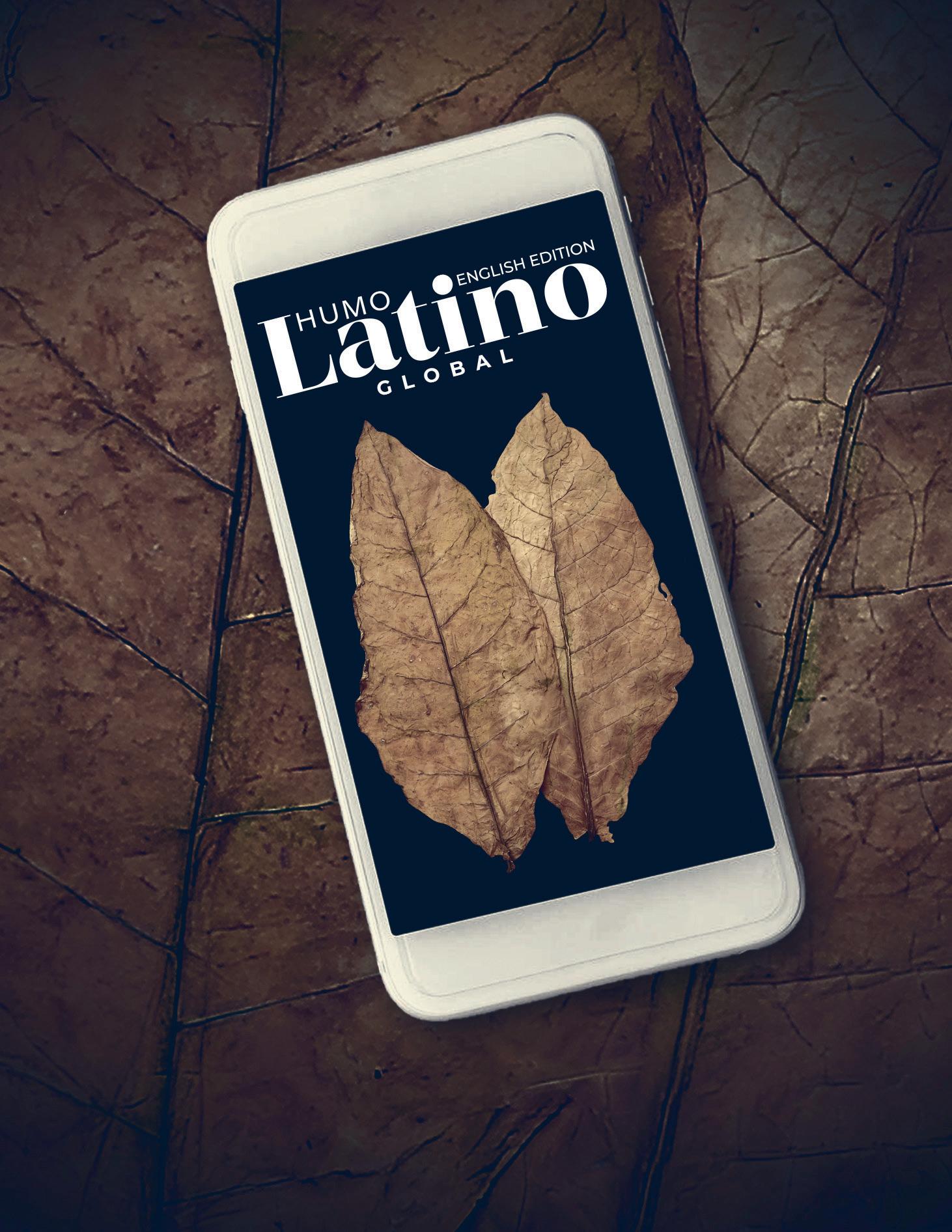SOTL GM
SOTL and Humo Latino A Lasting Alliance
SPECIAL FEATURE Robert Glick A Canvas Covered in Gold and Tradition


SOTL GM
SOTL and Humo Latino A Lasting Alliance
SPECIAL FEATURE Robert Glick A Canvas Covered in Gold and Tradition

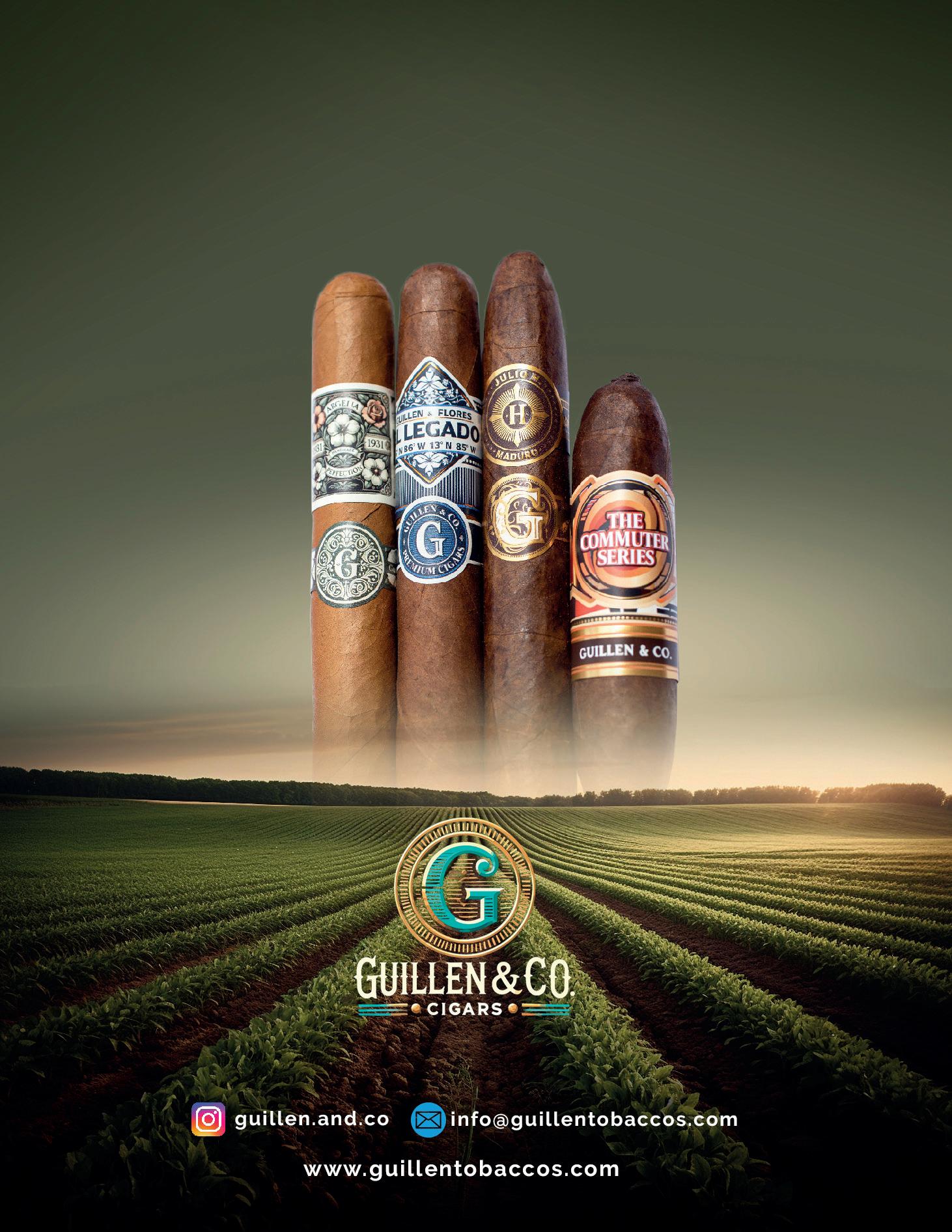
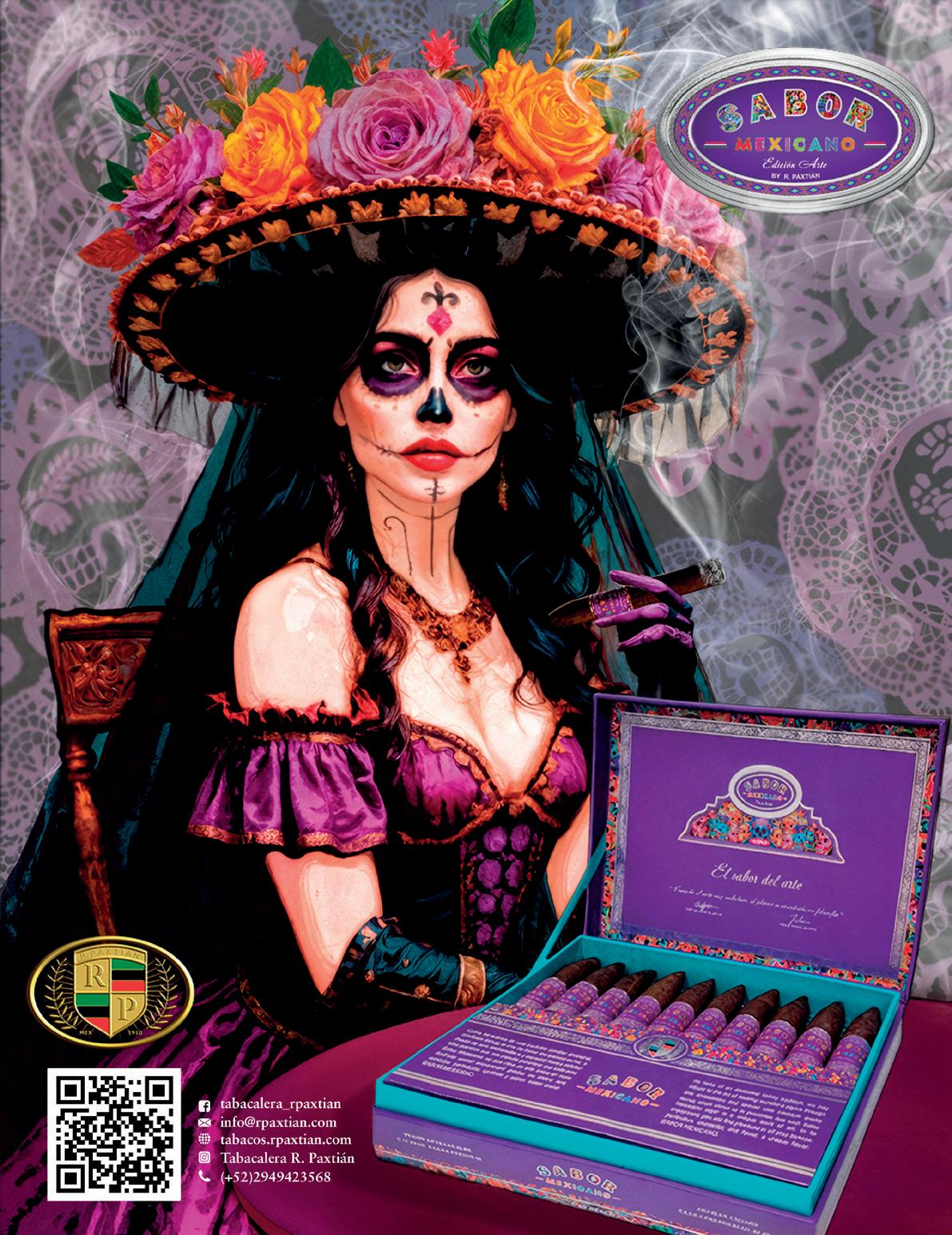
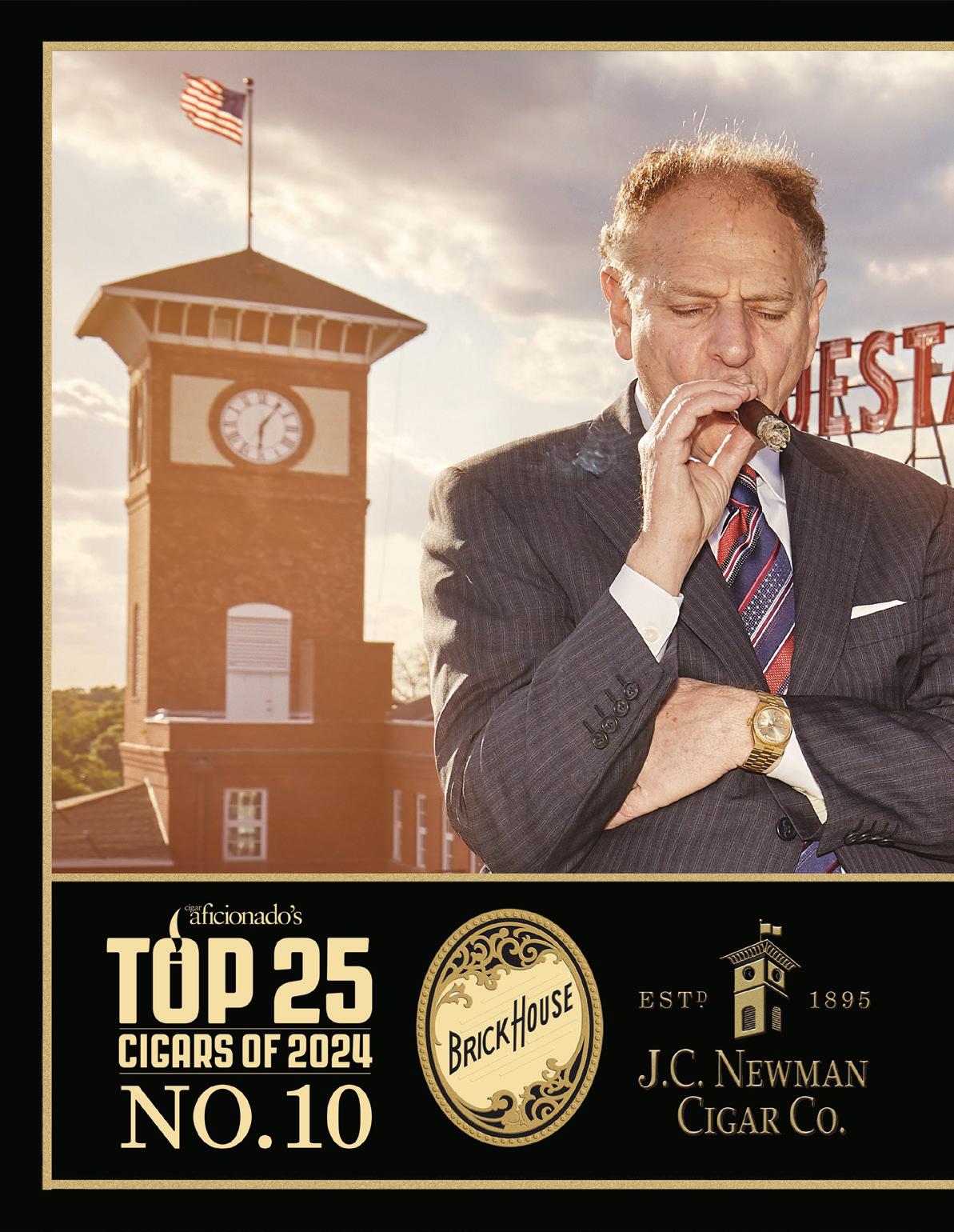
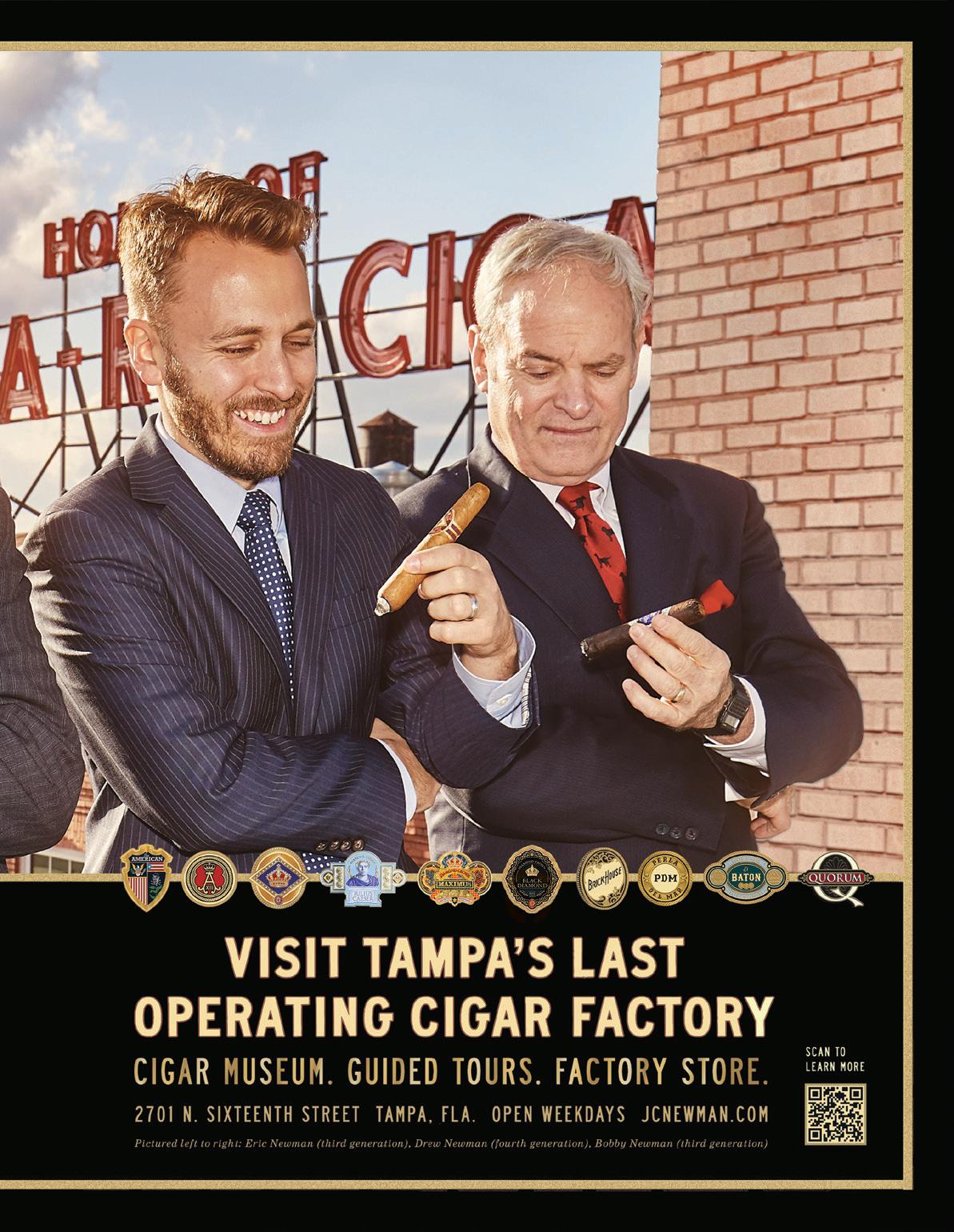
Latin Americans at InterTabac
• Tabacalera R. Paxtián
Sabor Mexicano in Germany
• Karen Berger Cigars
Nicaraguan Excellence
• Loasiga Cigars
The Infiel Special Edition
• PDR Cigars
Outstanding Dominican
• Platinum Nova Cigar
From Debod to Punch Orbits and Lights of the City
Master Habanosommelier
Latino and SOTL
Trucks, and Empathy
Cruz-Sánchez, Over the Road CÉSAR
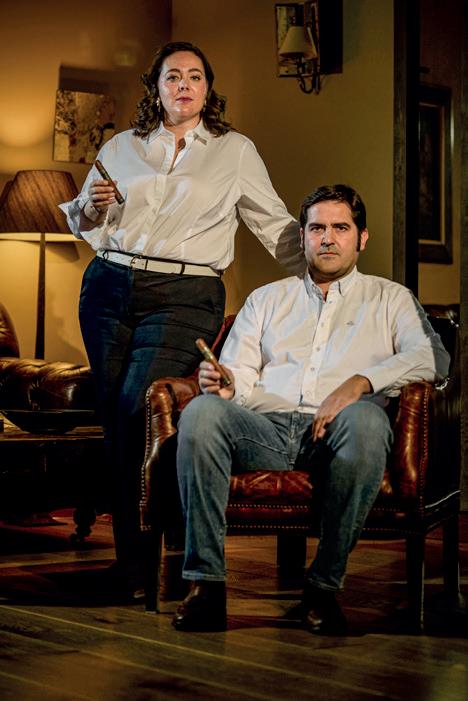
Among a sea of options for naming their debut line –some already registered and others lacking the necessary impact–the couple decided on Hoja de Quisqueya. A brand that in just three words expresses the essence of their cigar, framing flavor, heritage, tradition, and elegance; a meeting of two worlds –Taíno and Castilian– from the hands of Spain and the Dominican Republic, by and for the enjoyment of tobacco.
RAÚL MELO
César Salinas Chávez
Director
Alberto Arizmendi
Editorial Director
Dominican Republic
Julio César Fuentes
Commercial Director
Honduras
Patricia Pineda
Rolando Soto
Roberto Pérez Santiago
Art Director
Raúl Melo
Publisher
Enrique Quijano
Style Correction
Moisés Licea
Web Master
Yoshua Segovia
Community Manager
Argentina
Gastón Banegas
Canada
Nicolás Valenzuela Voss
Chile
Francisco Reusser
Christopher Sáez
Michel Iván Texier Verdugo
Colombia
Federico Londoño Mesa
Eduardo Márquez
Cuba
José Camilo López Valls
Humo Latino Magazine reserves the right to reject unsolicited articles that contravene its thematic profile, as well as those that do not conform to its style standards.
The articles received will be approved in the first instance by members of the Editorial Board. We reserve the right to make changes or introduce modifications to the manuscripts, for the sake
© All Rights Reserved. Grupo Humo Latino Any reproduction, total or partial, of this contents, by any process, is prohibited.
global.humolatino.com issuu.com/humolatino
Dominican Republic
Francisco Matos Mancebo
Wendell Rodríguez
Mexico
Aurelio Contreras
Gonzalo Romero
Manolo Santiago
Puerto Rico
Cándido Alfonso
José Luis Acosta
Spain
Luciano Quadrini
Sofía Ruiz
José Antonio Ruiz Tierraseca
Fernando Sanfiel
United States
Anastasia Psomiadi
Blanca Suárez
Lefty Karropoulos
Venezuela
José Bello
Diego Urdaneta
of better reading comprehension, without this implying changing their content.
The authors are responsible for the content published under their signature. Humo Latino Magazine does not assume any responsibility for possible conflicts arising from the authorship of the works and publication of the graphic material that accompanies them.
@humolatinoglobal info@humolatino.com
Four years ago, we decided to embark on the Humo Latino journey, supported by a group of collaborators and friends who joined the purpose of giving visibility to cigar producers and small or boutique brands entering the tobacco industry. The vehicle was, and is, a monthly electronic magazine in Spanish—the language of tobacco—aimed at a broad international audience.
Over time, we have maintained that “true north,” even as our goals and platforms expanded, thanks to the incorporation of some production houses with extensive and recognized trajectories.
Within a few months of our launch, in January 2022, we simultaneously published the Humo Latino Journal newspaper, which ran for eight issues (three in English) and was distributed in eleven countries and/or in the U.S. during the Premium Cigar Association (PCA) Trade Show. We also embraced the Anglo-Saxon market with Humo Latino Global, an electronic magazine that has been published monthly since May 2024.
The original website and social media accounts were joined by their English counterparts; the company, headquartered in Mexico, also established a separate operation in the Dominican Republic. Since November 2024, we have offered the quarterly Spanish print magazine Humo Latino Dominicana, which extends its circulation to other countries, in addition to a special English Print Edition.
Regarding this fourth anniversary and 48 issues of Humo Latino Magazine, suffice it to say that we have dedicated over 5,000 pages to informing our readers about the Tobacco World from an inclusive perspective that, for example, has also highlighted the role of women in the industry.
We recognize and value our sponsors, collaborators, and readers, as we owe our permanence to all of them, as well as the trust of those who have shared their life stories with us –as sources of information– stories that speak of their efforts and aspirations.
This journalistic, human record –which is like planting a seed in the furrow traced by another– has allowed Humo Latino to grow, develop, and move toward its consolidation… and allowed us to live the dream.

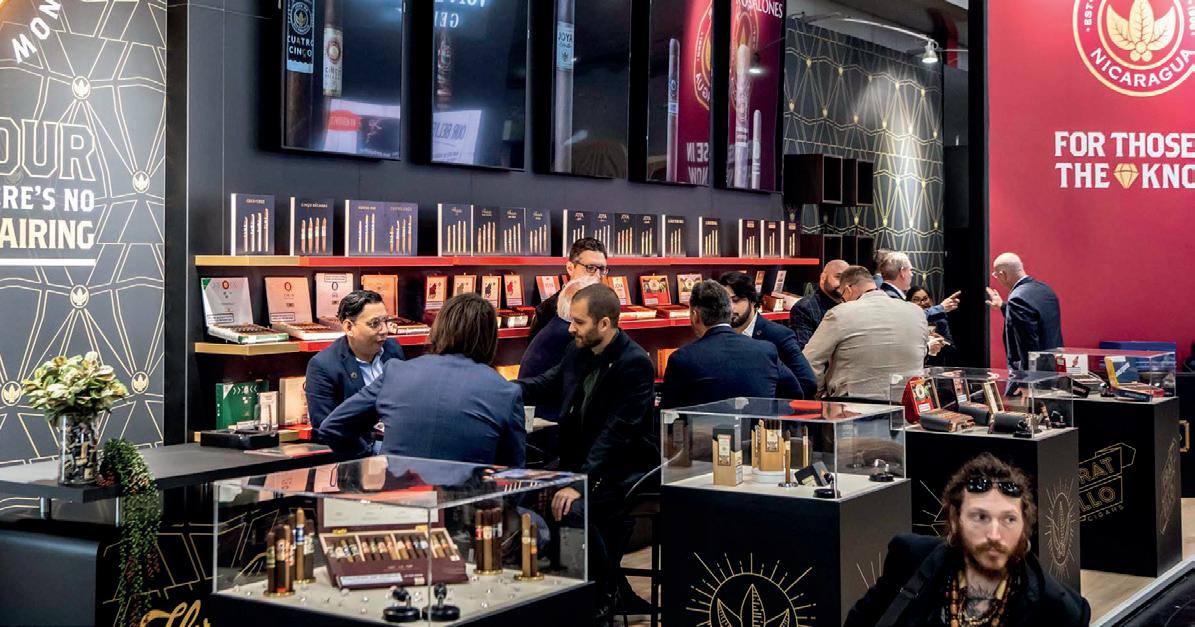
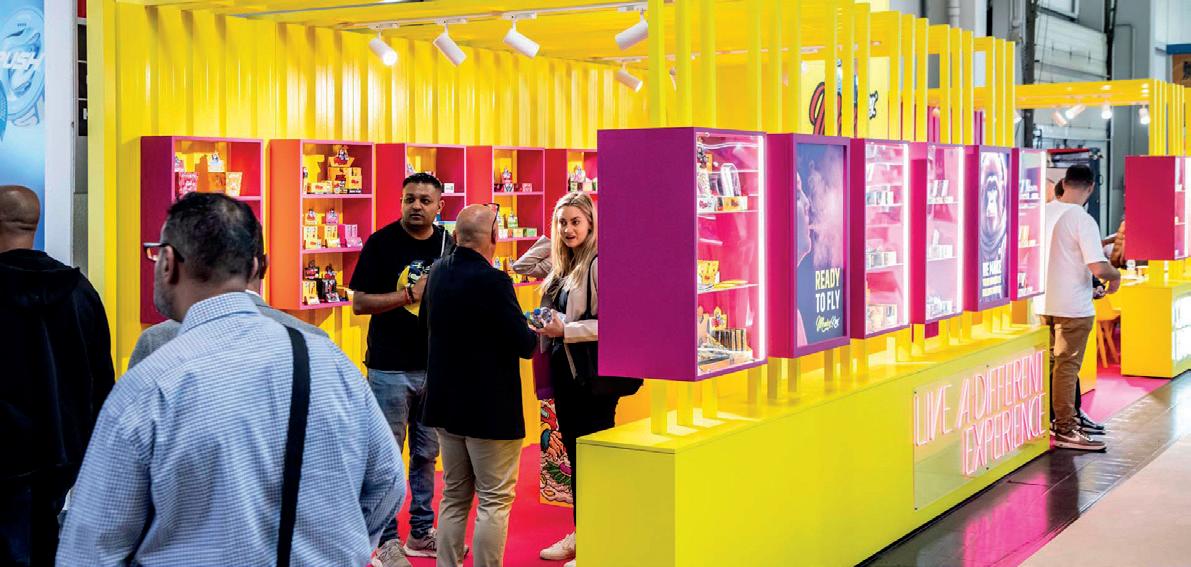
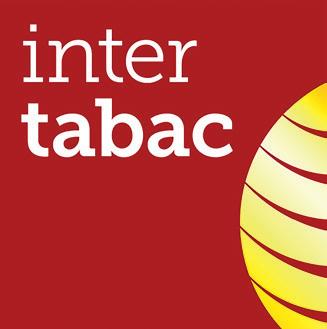
The 45th celebration of the InterTabac trade show in Dortmund, Germany, brought together more than 14,000 visitors and 800 exhibitors from 70 countries from September 18 to 20, in what is considered the world’s largest event for tobacco products and smoking accessories.
Among other new developments, this year highlighted the so-called Cigar Culture Summit and a more varied program of supplementary activities. It was announced that the next edition will take place from September 15 to 17, 2026.
We present some notable medium-sized and boutique Latin American participants, representing countries such as the Dominican Republic, Nicaragua, and Mexico. These are companies that have successfully crossed borders and are reaching the European and Asian markets beyond the United States, a result of the quality of their products.
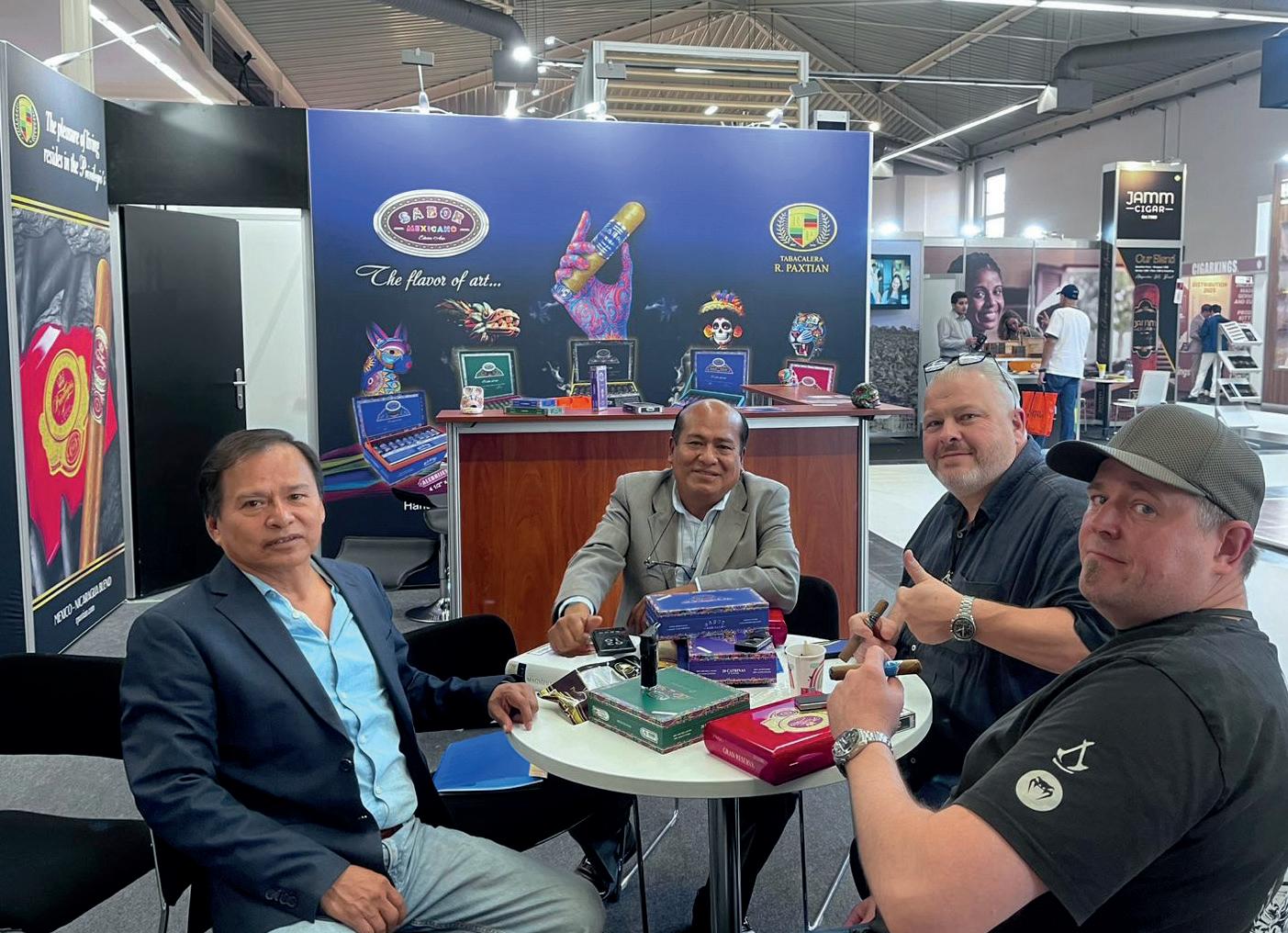
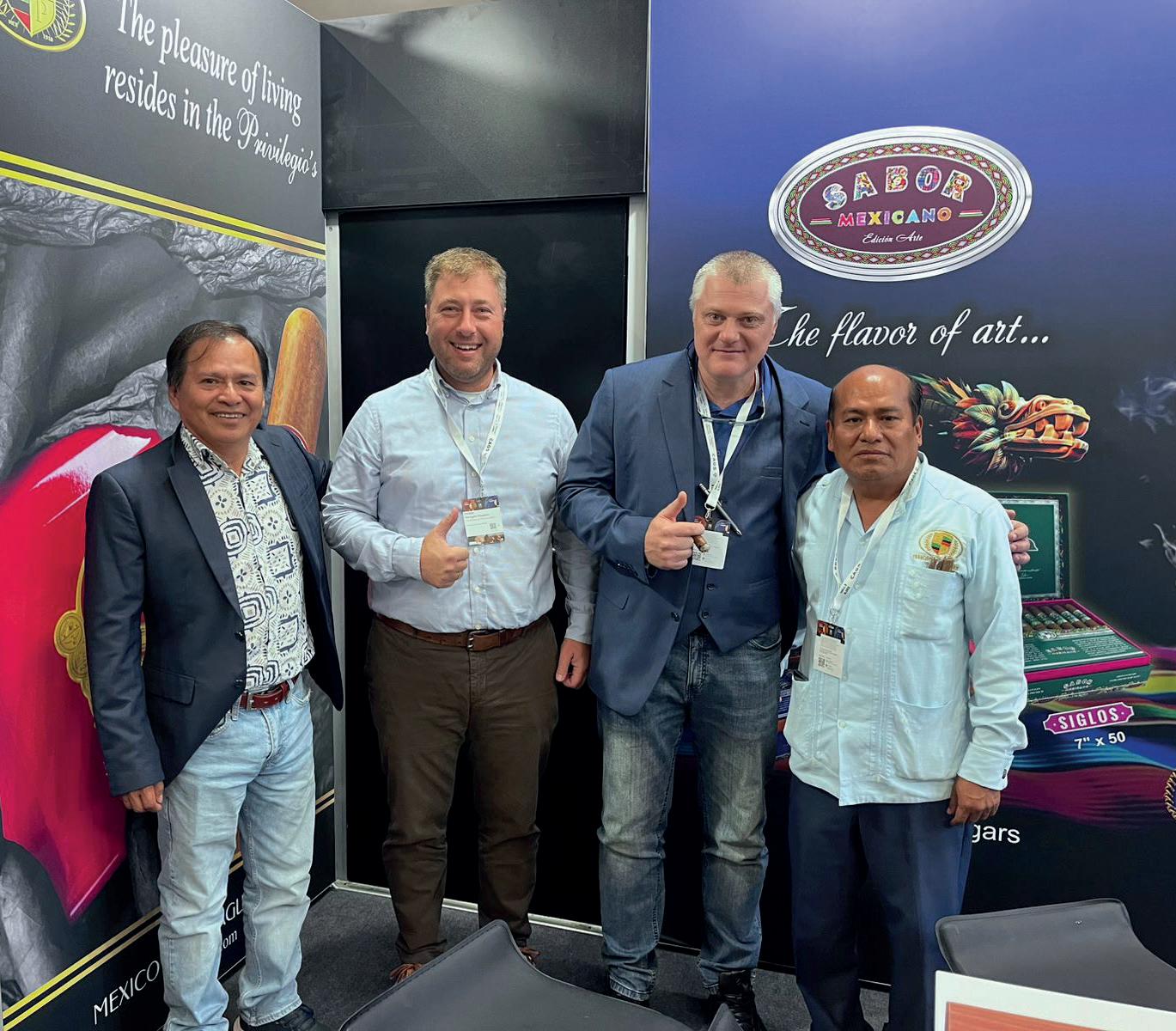
With the idea of bringing the unique quality, flavor, strength, and texture of Mexican tobacco to new frontiers, under the premise that Mexican art and craftsmanship have everything to offer the entire world, Tabacalera R. Paxtián presented its newest line, Sabor Mexicano (Mexican Flavor), on German soil during the InterTabac 2025 trade show.
According to Francisco R. Paxtián, heir to over 113 years of tobacco tradition from the San Andrés Valley, the Mexican puro possesses unique qualities that make it interesting for the international market, with its only weakness being a lack of showcases to demonstrate its potential.
“We need to work to give it visibility and show that it can be blended as a highquality puro, unlike tobacco from other origins, like Ecuador, which primarily functions as a wrapper. Or other countries where they use the Mexican wrapper to give that special touch.”
Speaking about the selection of the name for the new line, Paco explains that it is important to understand that the creation and enjoyment of a cigar is an art and that, as such, it is part of the rich range of artistic expressions developed in Mexico. “And through five different vitolas, we wanted to pay tribute and reference these expressions so highly valued around the world.”
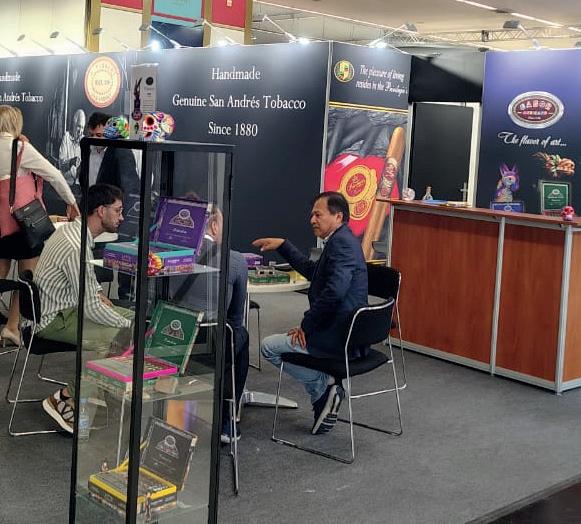
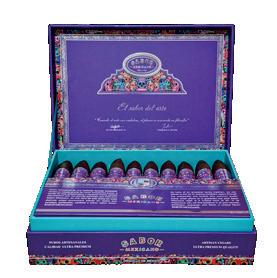
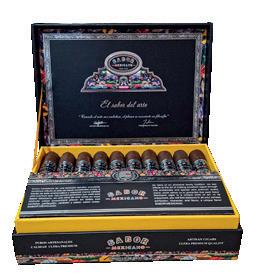
In this regard, he details that the collection consists of Alebrijes, a Short Robusto (4 ½ x 54); Huicholes, a Lancero (7 ¼ x 40); Mariachis, a Toro (6 x 54); Catrinas, a Torpedo (6 x 54); and Siglos, a Churchill (7 x 50).
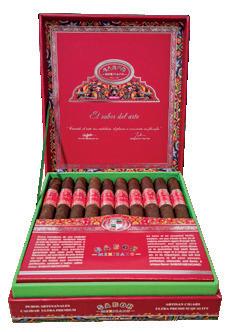
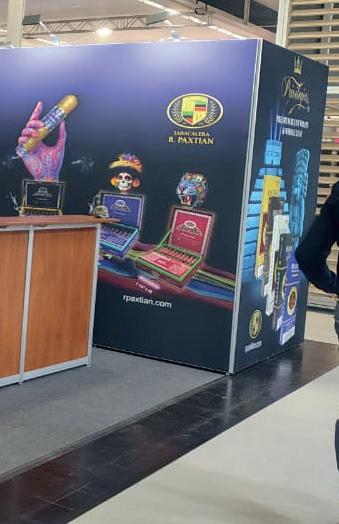
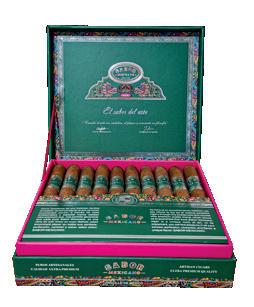
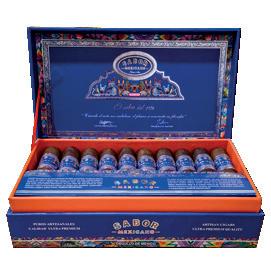
Each one is dedicated as an offering to a specific artistic expression selected by Paco for this collection, which, subsequent to its launch, may be expanded with some Special Editions.
“Generally, the launch of a brand, beyond the economic possibilities, takes about 6 months. But backed by our culture, tobacco, experience, and knowledge, we didn’t care how long it might take, as long as the result was worthwhile, which it has been.”
Choosing InterTabac for the line’s presentation and launch reflects Paco’s view of the event as the most important in the Tobacco World, making it the ideal showcase to meet the goal of promoting the strengths of Mexican tobacco.
After participating in the show, market expectations are strong, and the Sabor Mexicano collection is poised for resounding success in Europe. The company is only waiting to finalize the necessary regulatory procedures to ship the orders and meet the interest that surpassed expected projections.
Currently, Tabacalera R. Paxtián’s cigars are sold in the United States and some parts of Europe. They hope to meet market demands to expand their presence. “With great effort, Mexican tobacco has been forging its path, and those who appreciate a good smoke have been accepting it as new frontiers are reached.”
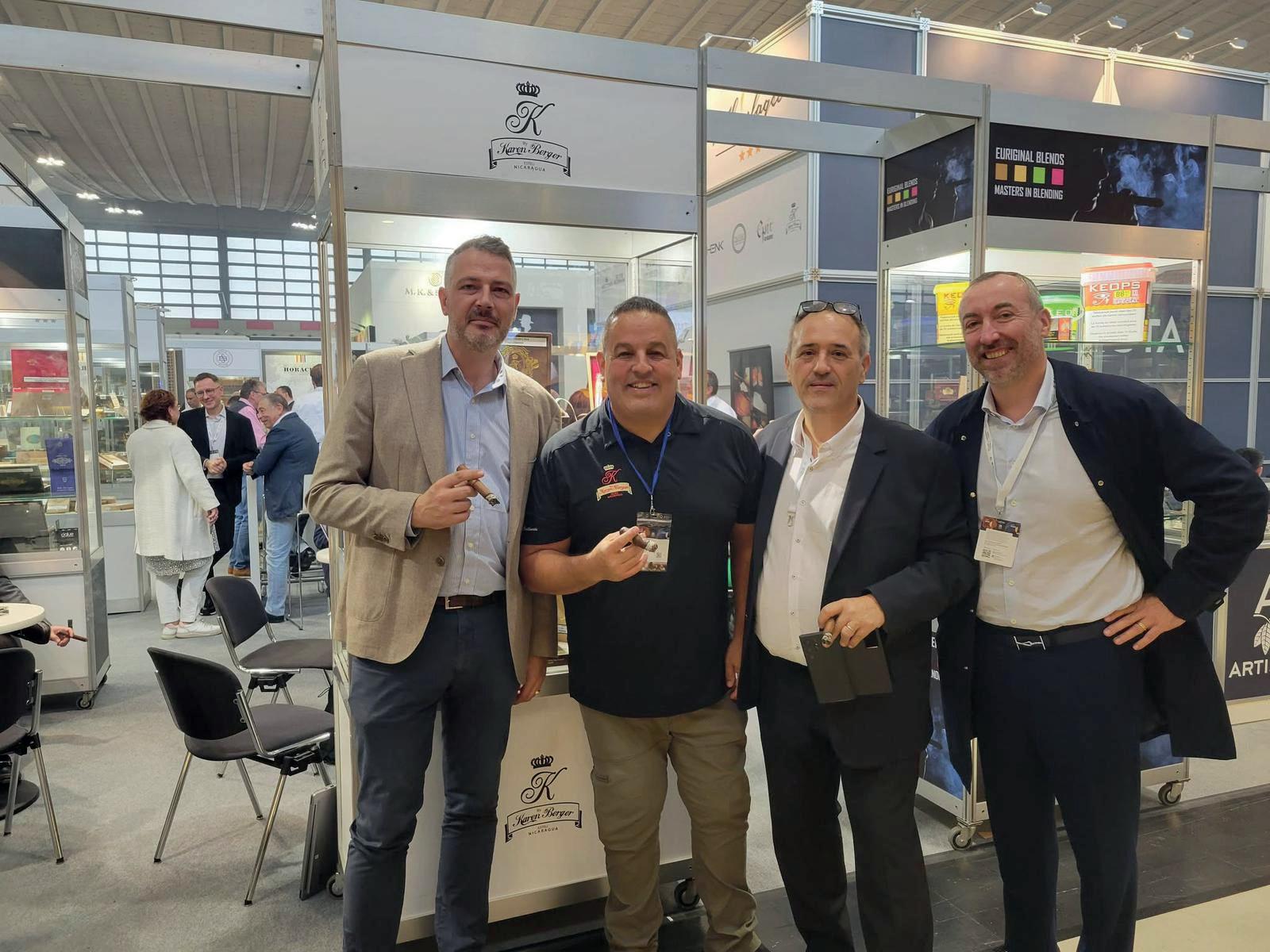
Through the presence of Vice President Bruce Busch at the InterTabac trade show, Karen Berger Cigars strengthens its international exposure and opens doors to new markets in Asia and Europe, adding sales points in Italy and France to the 17 countries where the brand is already present.
According to Karen Berger, CEO of the company, accompanied by their distributors Kleinlagels, the event served
as the setting for the official presentation of Ixtelli and Halftime to the European market, lines that reflect her passion and commitment to Nicaraguan excellence.
Additionally, for the second time, the brand was nominated by Cigar Journal Magazine as the Best Boutique Cigar Nicaragua for its K by Karen Berger Cameroon. “Even though we didn’t win, the nomination itself makes us winners and is a reflection of success.”

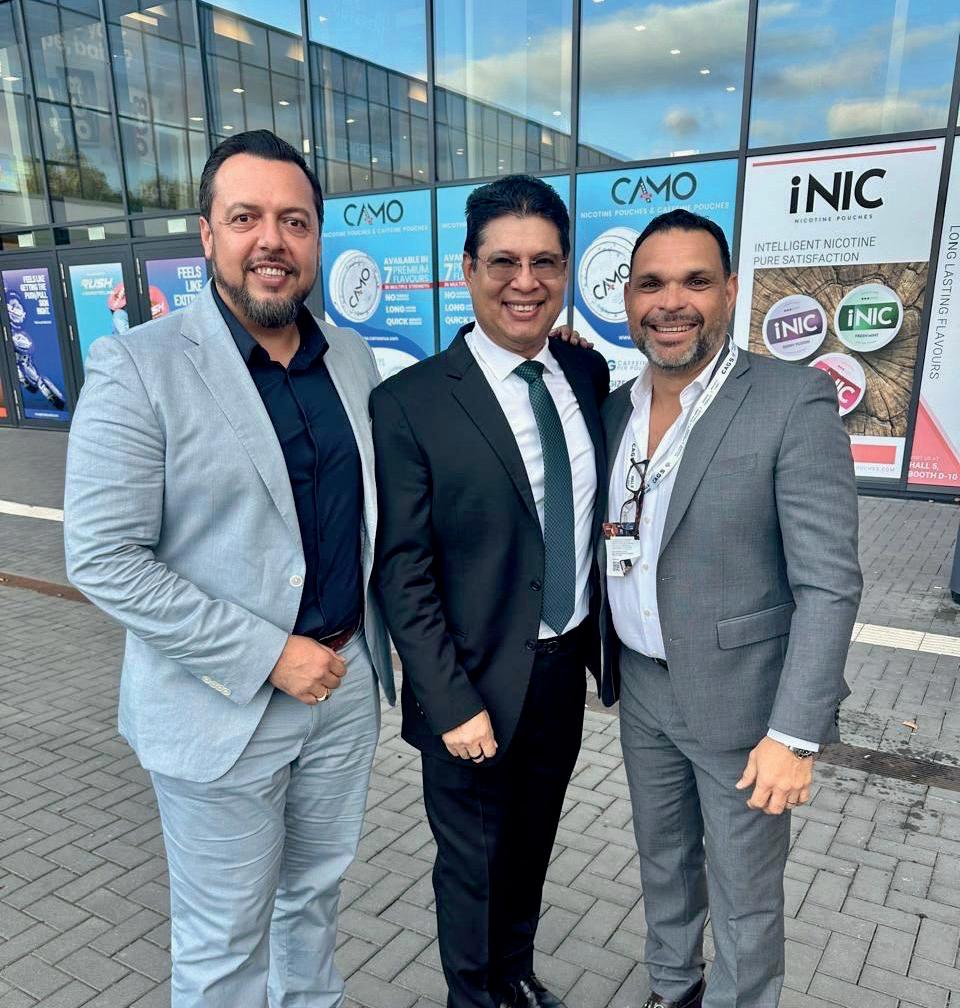

In its first official participation at Europe’s most important Tobacco World trade show, InterTabac, Loaisiga Cigars presented the Infiel Maduro Sun Grown Box Press, a Limited Edition of two thousand luxurious boxes.
According to José Ortega, co-founding partner of the company, despite current market regulations, InterTabac continues to represent an important showcase and a business opportunity, albeit one that requires a long-term perspective and navigating a considerable amount of paperwork and permits.
In this regard, he highlighted that the European market is attractive because
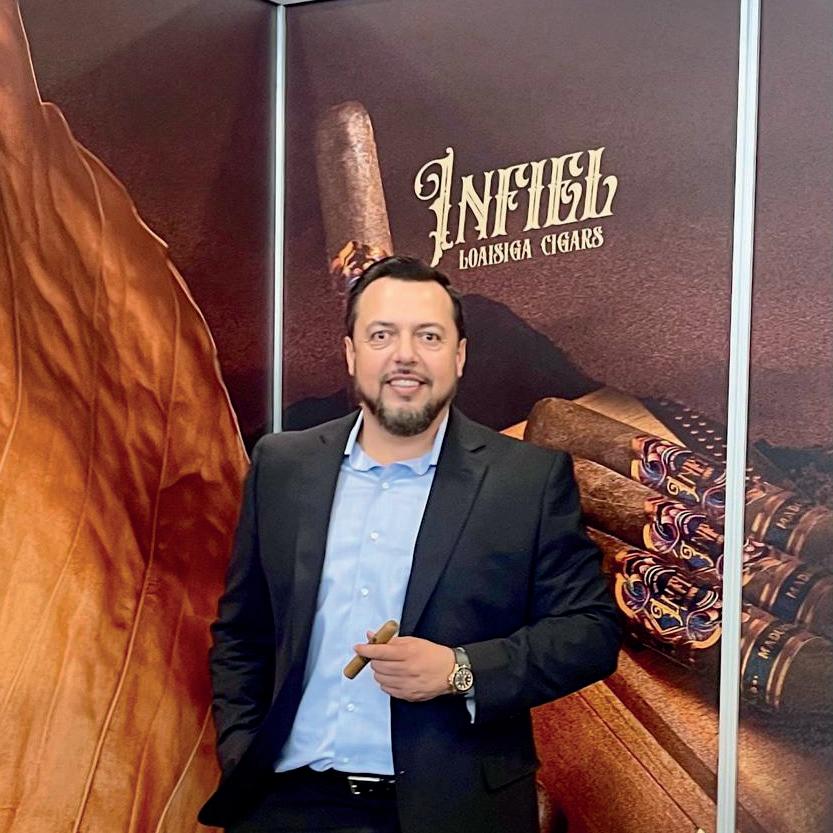
it is growing, besides representing an alternative to the increase in tariffs in the United States. “The business is not easy, but it can be done, and being here provides visibility to eventually reach the markets of Asia and Europe. The deals you close today will likely bear fruit the following year.”
Furthermore, September also marks their entry into the Dominican Republic, while Puerto Rico and Colombia remain in their sights. Through Premium Cigars of Nicaragua, they will distribute not only Infiel but also other brands that have placed their trust in their team in the United States.
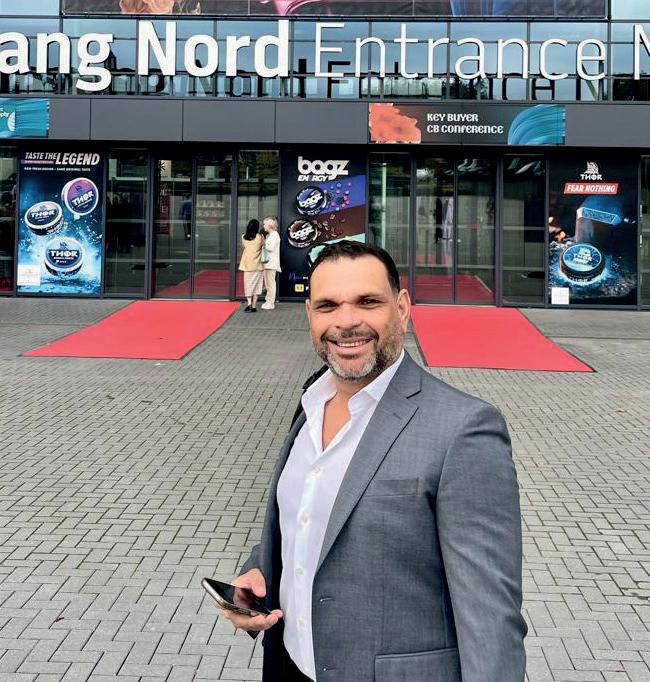
The premium tobacco world is experiencing unparalleled postpandemic growth, a situation made palpable by observing the enthusiasm of German tobacconists who attend events like the InterTabac trade show, where they showed increased interest in Dominican tobacco.
According to Abraham Flores, President of PDR Cigars, the 2025 edition of the most important trade show in the European territory saw a greater influx of visitors, reaffirming the event as a window of exposure to countries such as Romania, Bulgaria, Poland, and Germany. Together with their distributor, Kopp Tobacco, he presented El Criollito Infante, a 4.5 x 54 cigar offered in a metal tube and three-piece packs.

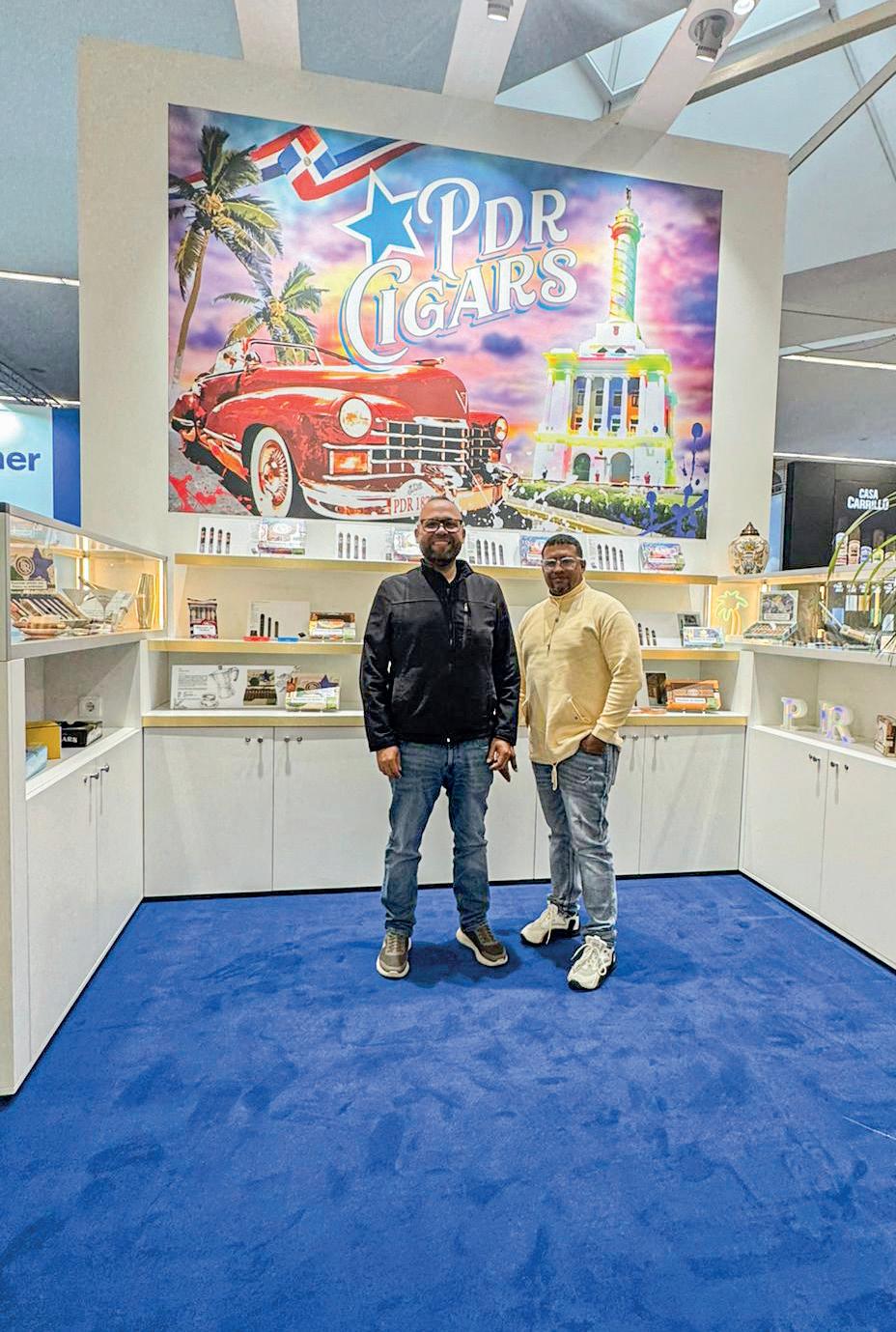
As an active member of ProCigar, he participated in what he described as one of the best parties sponsored by the group, where the best Dominican atmosphere was experienced with dancing and cigars.
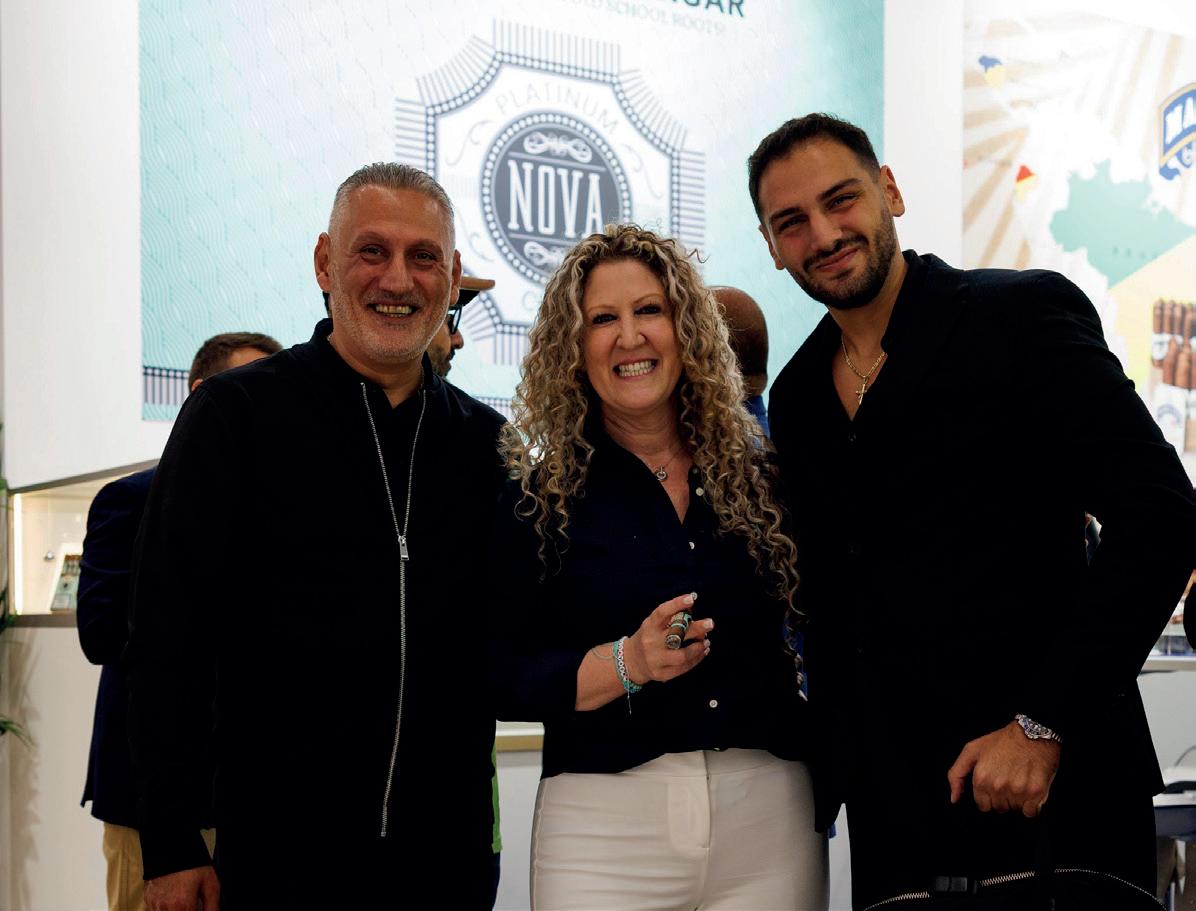
Following its launch in Europe in 2024, Platinum Nova Cigar continues to grow, an achievement reflected during the InterTabac 2025 trade show, where market support and trust kept their booth consistently busy throughout the three days of the event.
According to Leonor Abzaradel, CEO of the brand, the alliance with Kopp Tobaccos, their distributor, continues to yield very positive results. They are experiencing firsthand the openness of European smokers toward new,
high-quality brands and products. “InterTabac is, without a doubt, one of the international trade shows that has allowed us to shine in more countries and reach the hands of consumers.”
In terms of distribution, Nova is currently present across virtually the entire German territory and at some points of sale in Switzerland and Romania, in addition to the Middle East, in countries such as Bahrain, Dubai, Qatar, and Saudi Arabia. The company projects continued international expansion.
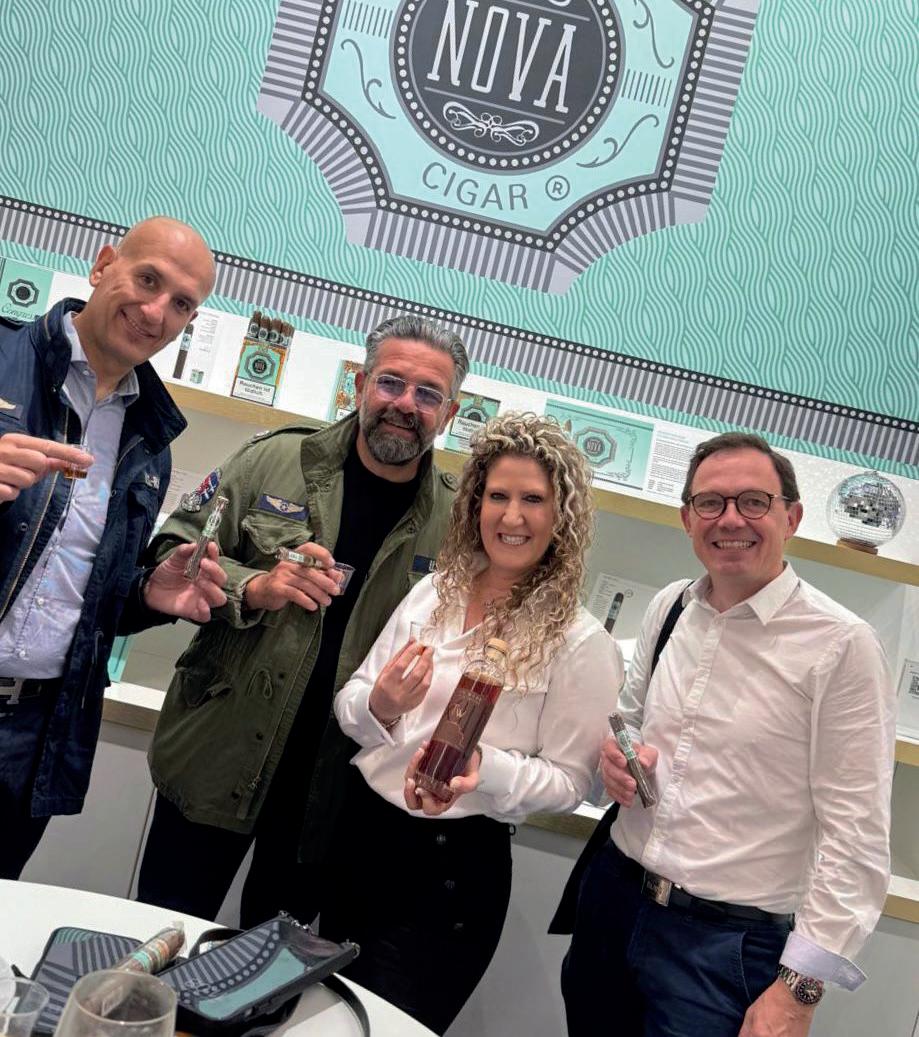
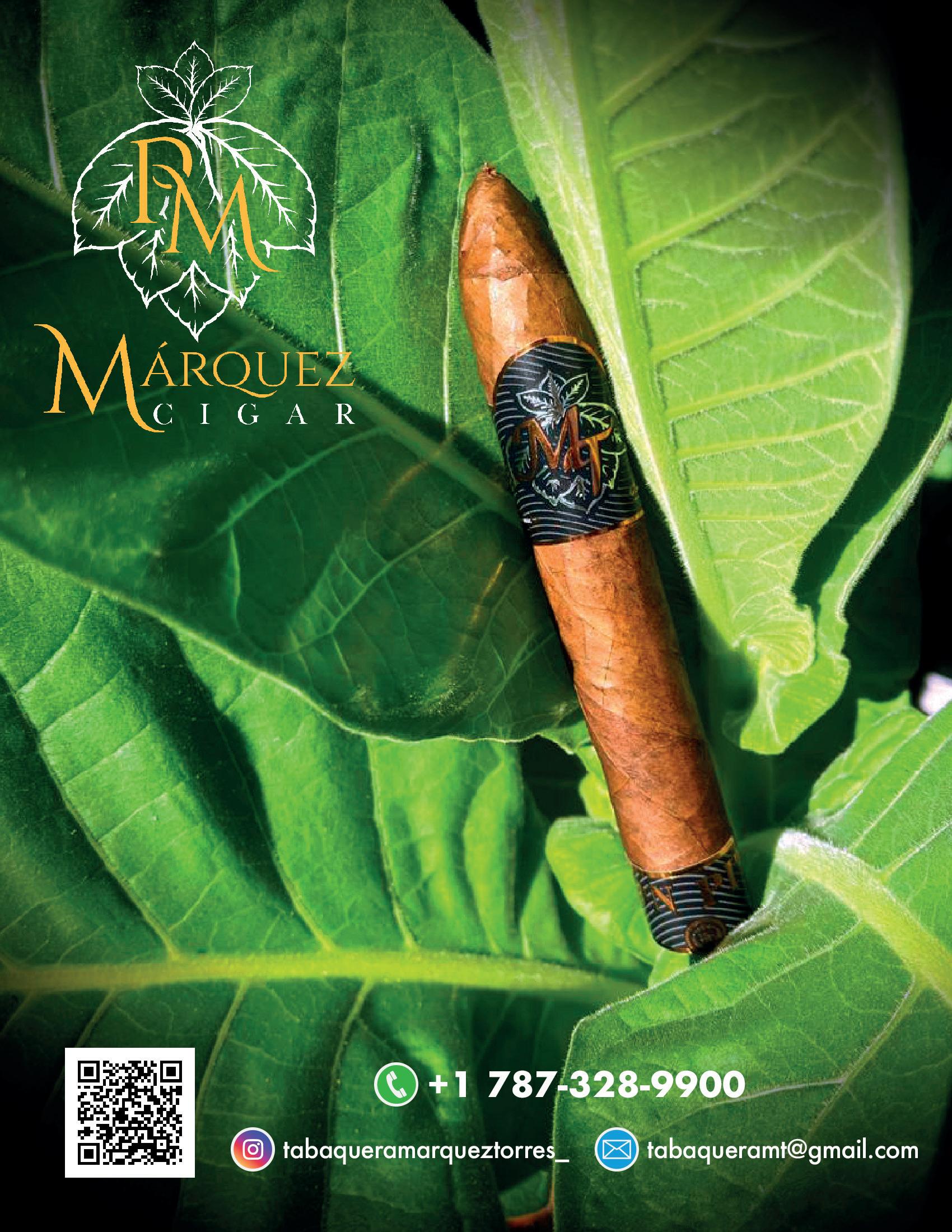
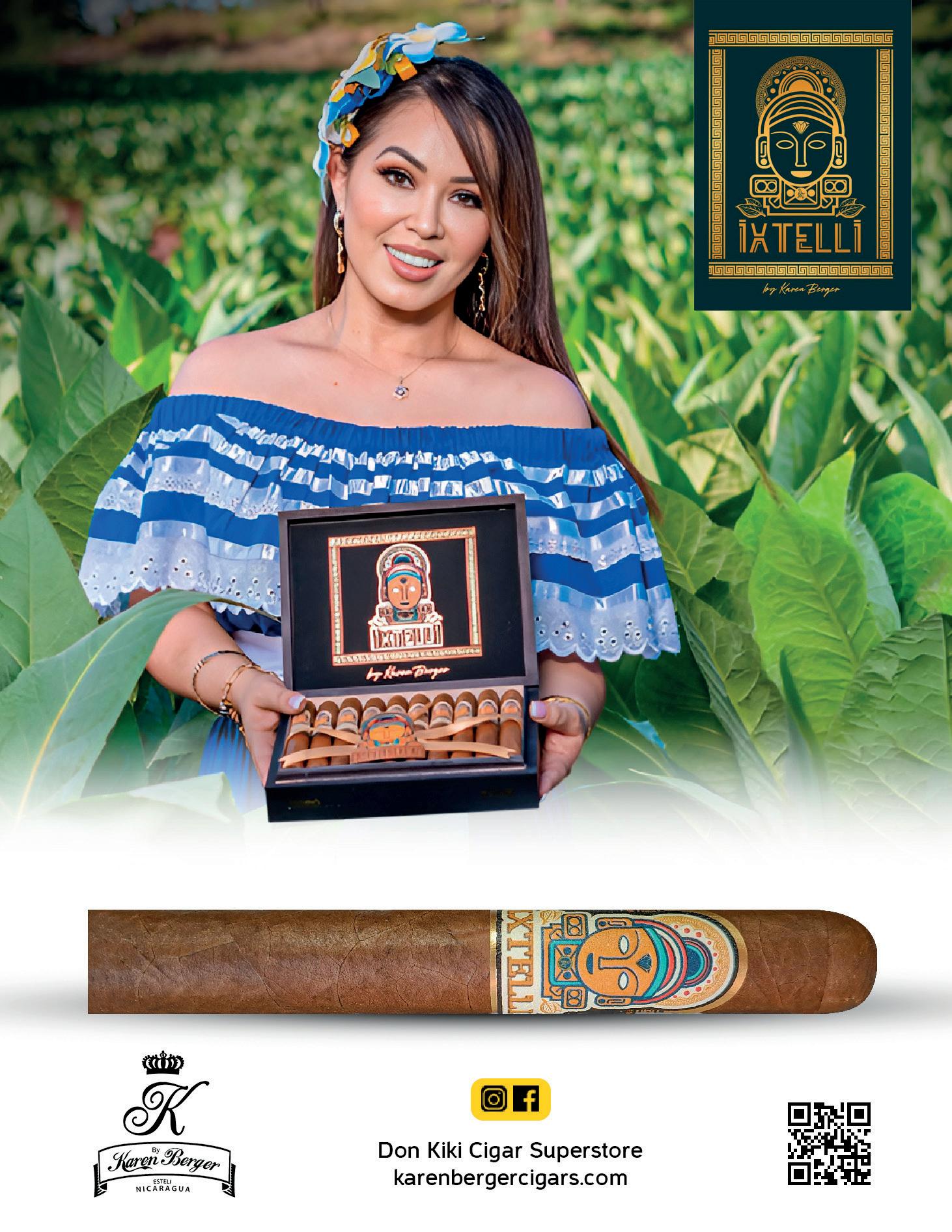
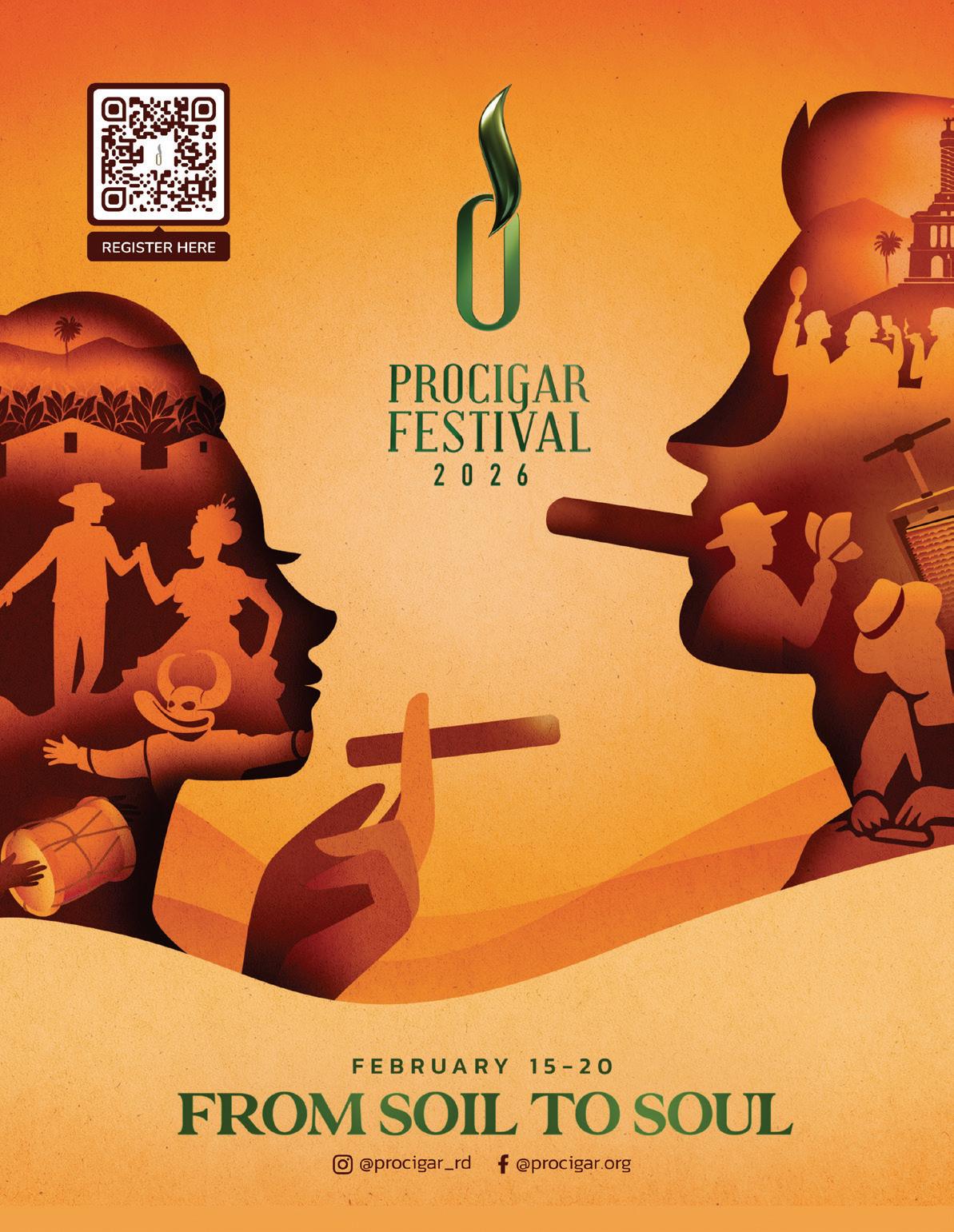


From Debod to Punch
Sofía Ruiz Master Habanosommelier
The clock struck seven forty-five, or as they say in Madrid, a quarter to eight. The sky was painting itself over the Spanish capital with the first rays of sunset; a spectacle with which nature teaches us that we too can transform ourselves gradually, like the phases of light and shadow that this star projects onto a planet in orbit.
And in life, what truly exerts an attraction capable of putting us into orbit? In my case, without a doubt, Cuban black tobacco.
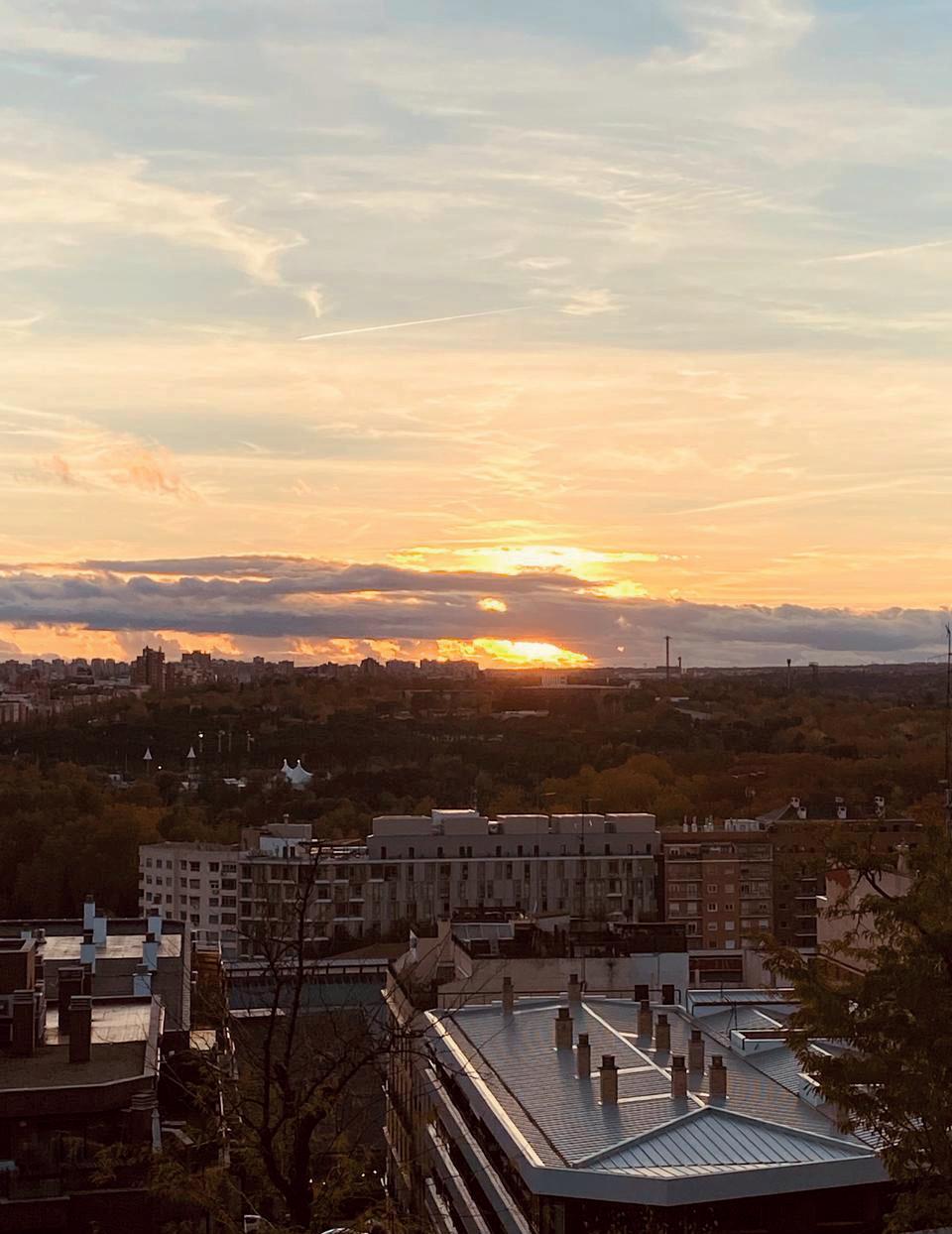
In the city, they say that watching a sunset at the Temple of Debod marks a milestone in your journey. Several friends encouraged me to discover this place and increased the curiosity that set me in motion toward the Metro Line 10 and the Plaza de España station, from which I emerged feeling among good smokes, in orbit, and reconnected with the city after the summer holidays.
Strolling through its gardens allowed me to greet Miguel de Cervantes Saavedra (I had to do it), or rather, to encounter this tribute –made a statue– to the legend of Hispanic literature. (I’ll open a parenthesis, as a commitment, so that in future columns we can travel together to Alcalá de Henares, the birthplace of the famous writer).
The families gathered and the children playing in the recreational spaces made me feel like a local as I walked toward one of Madrid’s wonders: the Temple of Debod. Although, like everything in life, it wasn’t easy. After taking Ferraz Street, you have to start climbing the Montaña del Príncipe Pío –originally called La Huerta (The Orchard), La Dehesa Florida (The Flowery Pasture), or Los Saltos de San Bernardino– famous for offering one of the most spectacular views of the Royal Palace and the entire western side of the Spanish capital.
Little by little, I felt the excitement of seeing thousands of tourists and locals of all ages heading toward the summit of the Mountain, climbing the stairs
with overwhelming speed, compelled, it seemed, by the last rays of sun to catch this sunset.
The vibe of the place, especially in the gardens, with families, young people, and couples enjoying a picnic, laughing, singing, or expressing their love, were moments to remember. But the truly unforgettable experience was contemplating one of the most beautiful sunsets of my life, with golds, oranges, and reds that painted me with joy. A confirmation of nature’s magic.
But next to the famous railings of La Huerta, the mentioned jewel awaited me: the Debod, an Egyptian temple dating back to the 2nd century BC, donated to
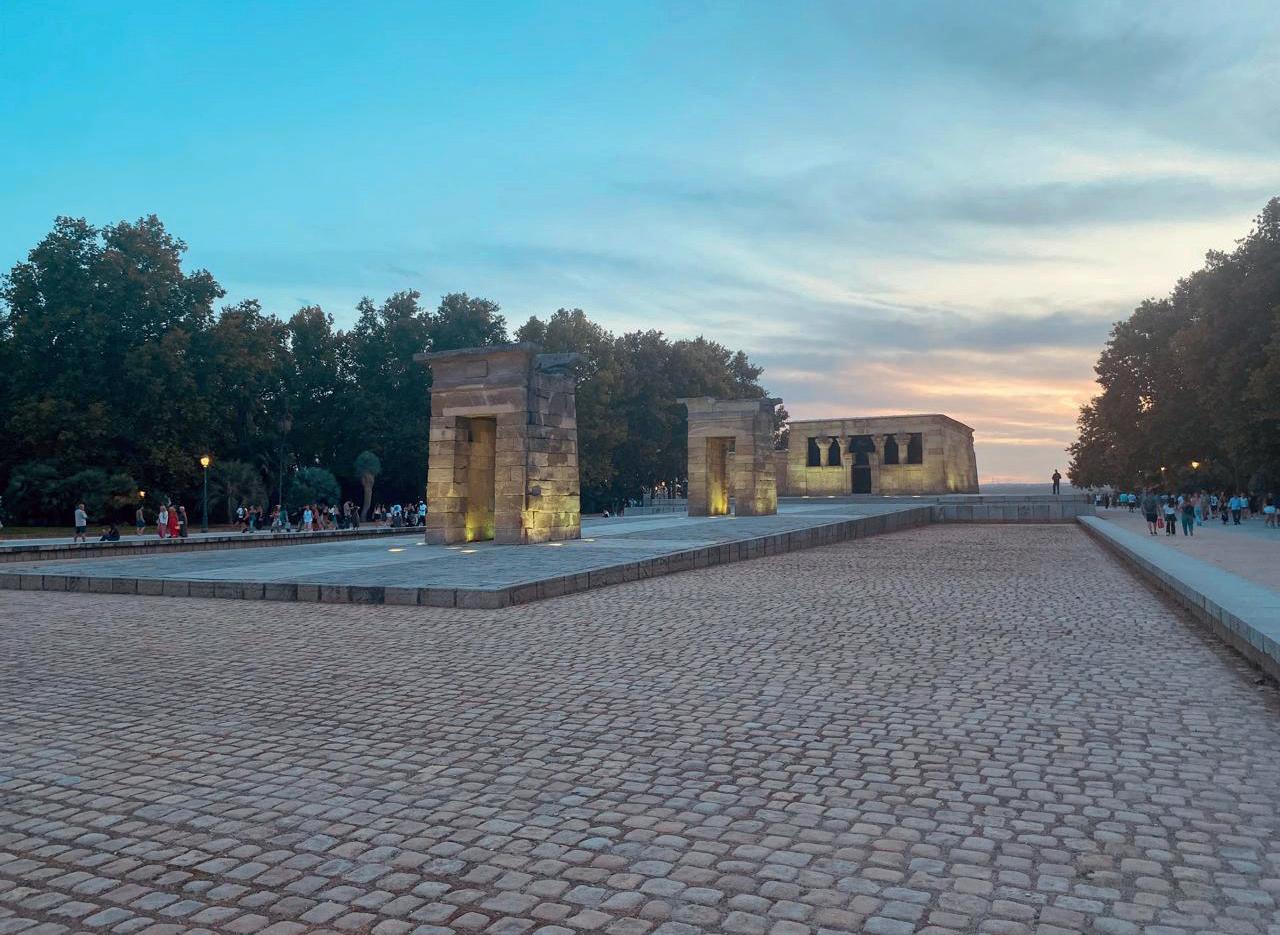
Temple of Debod.
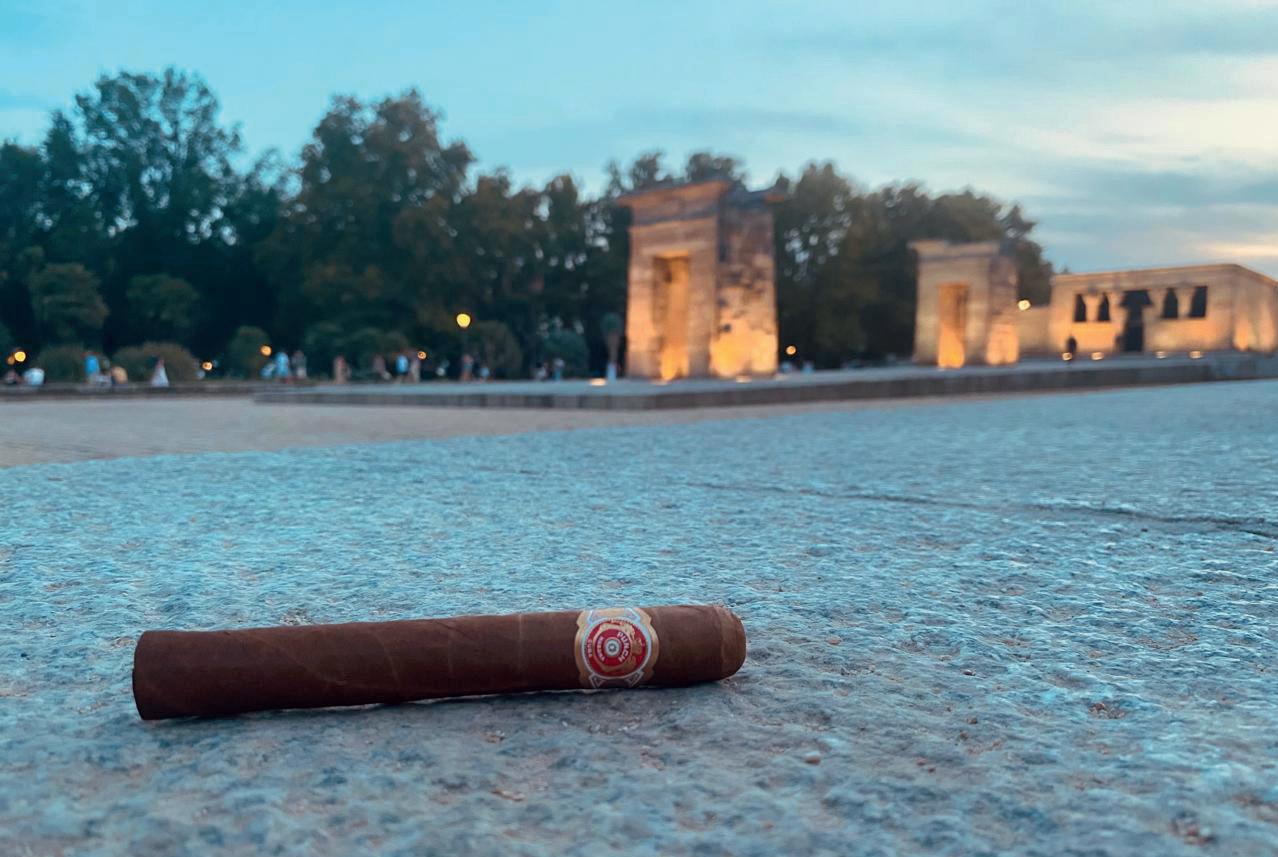
Spain in 1968 as thanks for its response to the international call to save the temples of Nubia, which were threatened by the construction of the Aswan Dam.
It is worth mentioning that Egypt donated three other temples: Dendur, to the United States; Ellesiya, to Italy; and Taffa, to the Netherlands. In the case of Debod, it was dismantled stone by stone and brought to Madrid, its original orientation being reconstructed on the site of the former Cuartel de la Montaña (Mountain Barracks). It finally opened to the public in 1972.
The Chapel of Adijalamani or of the Reliefs, the oldest part and core of the sanctuary, features paintings that represent the king adoring the gods and offering sacrifices. It was erected during the period of Pharaoh Ptolemy
IV Philopator and later decorated by the Nubian king Adijalamani. One of its sections is dedicated to the god Amun of Debod and features significant additions from the Ptolemaic and Roman eras.
Time passed and night fell over Madrid. After coming down the mountain, my next step was to converse with another foreigner: I’m referring to Punch Triunfos, a Habano created on the island of Cuba in the mid-19th century as a tribute to the British market. The brand’s name refers to the clown Mr. Punch, a glove puppet very popular in London street performances.
And to enjoy our chat in style, we followed Maestro Guerrero Street to enter the Hotel Riu Plaza España, located about a hundred meters away, and literally went up to the 27th floor. Thanks
to the nearly three-minute elevator ride and the mix of languages from the large number of tourists, Mr. Punch and I felt like we were on cloud nine upon arriving at the famous Sky Bar 360º; a place that will never go out of style.
The place was packed with people enjoying the sights, amid the lights of the old buildings that merged with the
modernity of the spectacular Gran Vía, a street where theater billboards shine in all their splendor, under an equally spectacular moon. In fact, this space offers panoramic views of the city, and if you want to get the best postcard, I recommend arriving early and, if you can, sitting at the bar that runs along the glass windows.
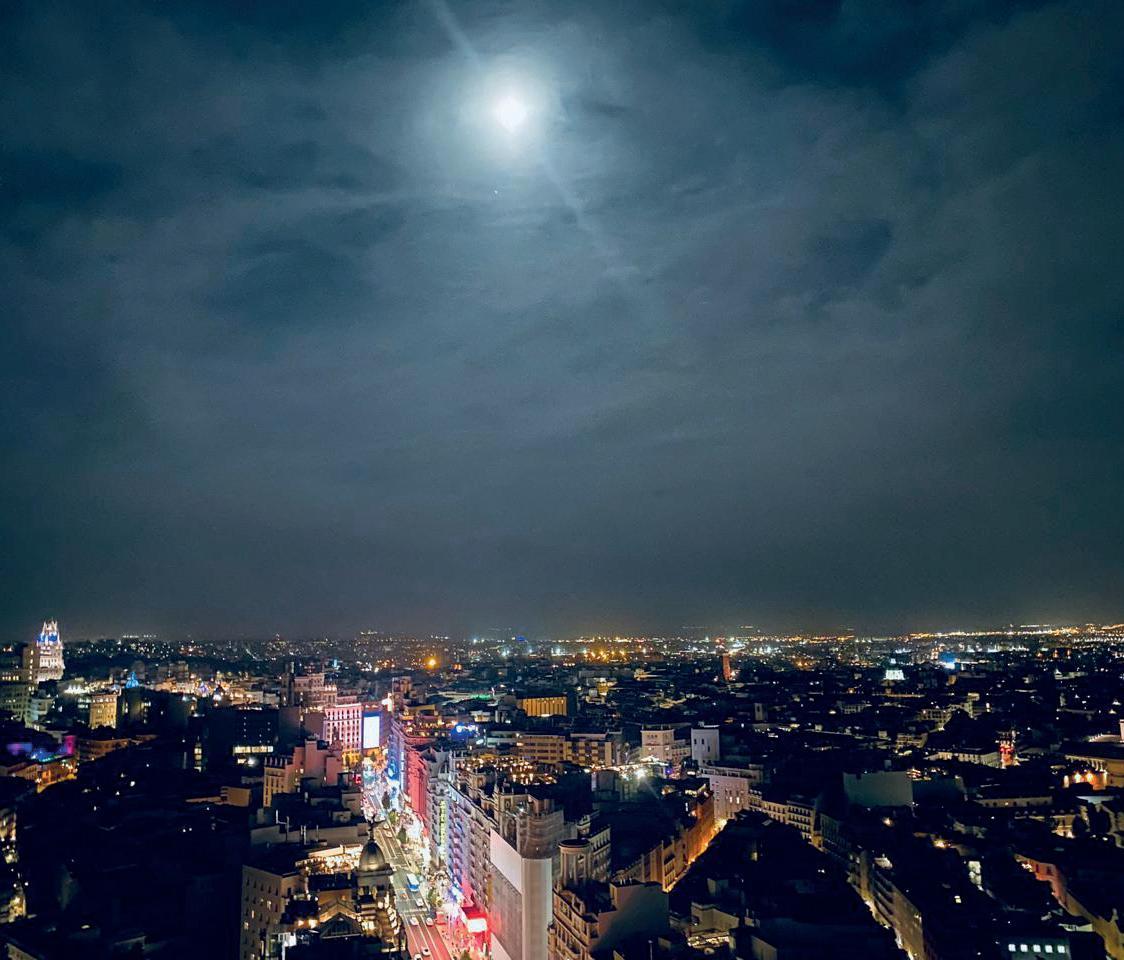
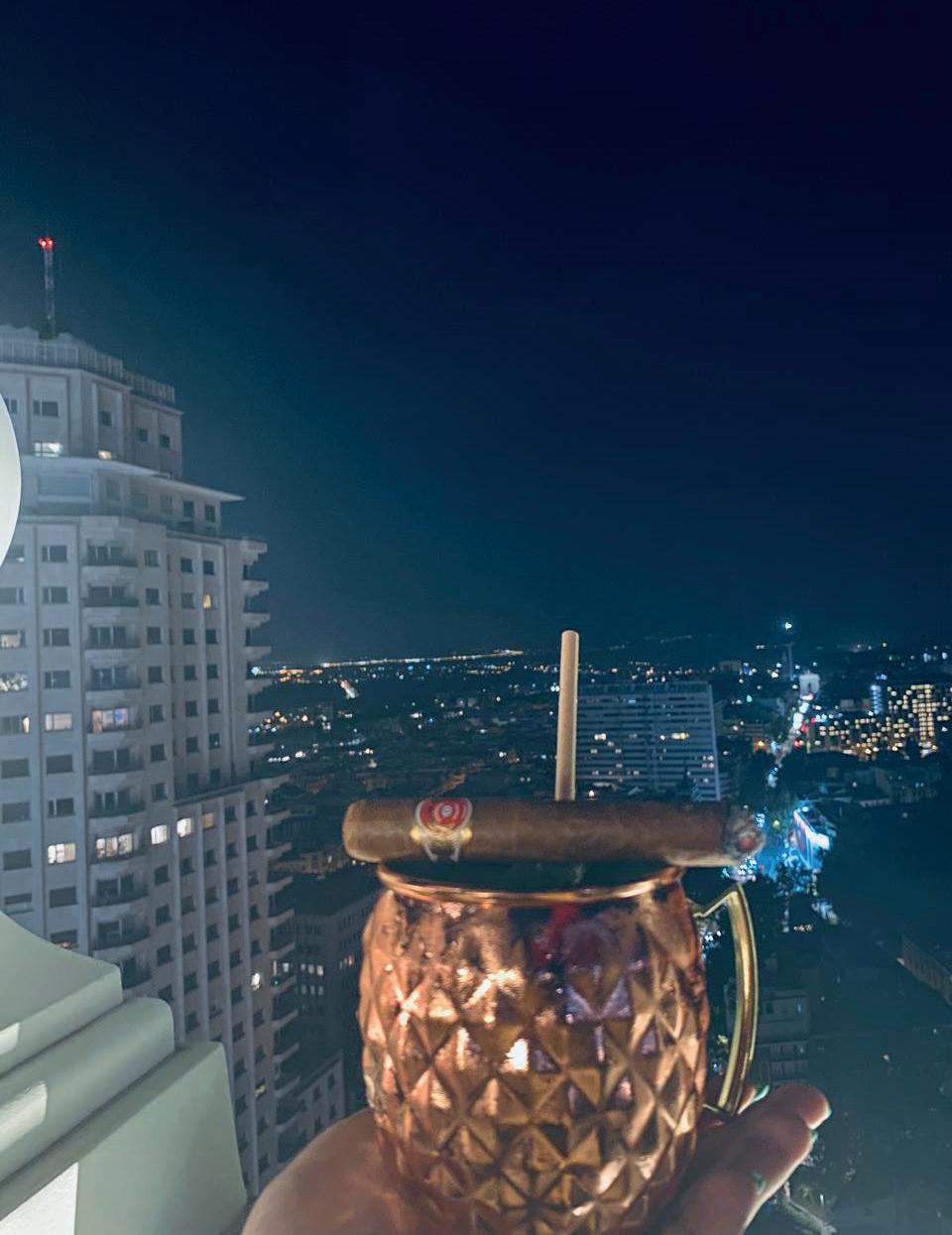
With music in the background and a cocktail in hand, Punch Triunfos began to speak to my palate with notes of nuts, toast, and the brand’s typical floral quality. As the thirds progressed, it left me with hints of honey, vanilla, and a touch of nutmeg.
Thanks to its 129-millimeter length and 42 ring gauge, I was able to create my own orbit for a little more than 30 minutes, and the path of good smokes showed me that satellites are small moments gifted to us by a night and some tobacco leaves cultivated in one of the best lands for it: Cuba, “La Isla,” as I call it.
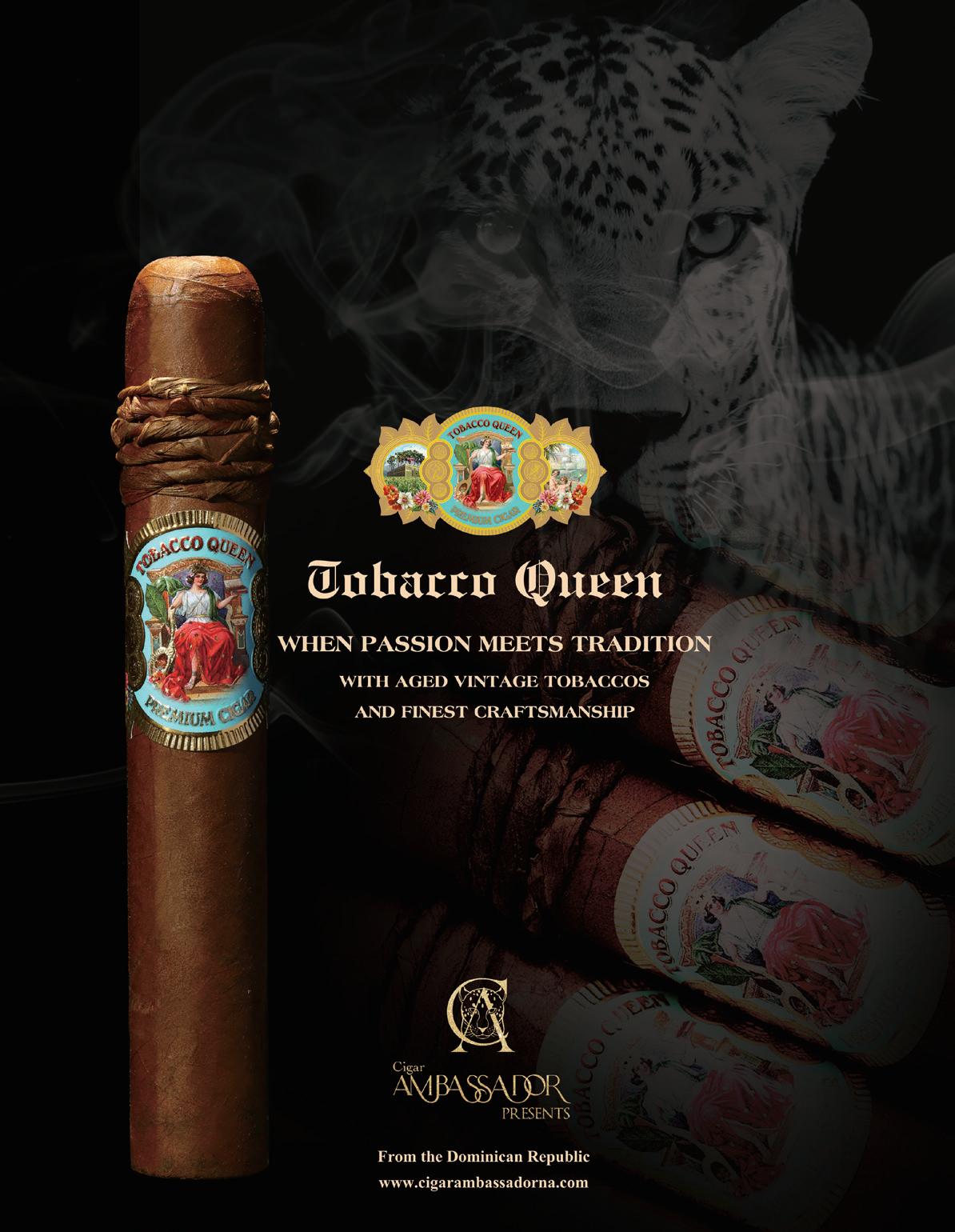
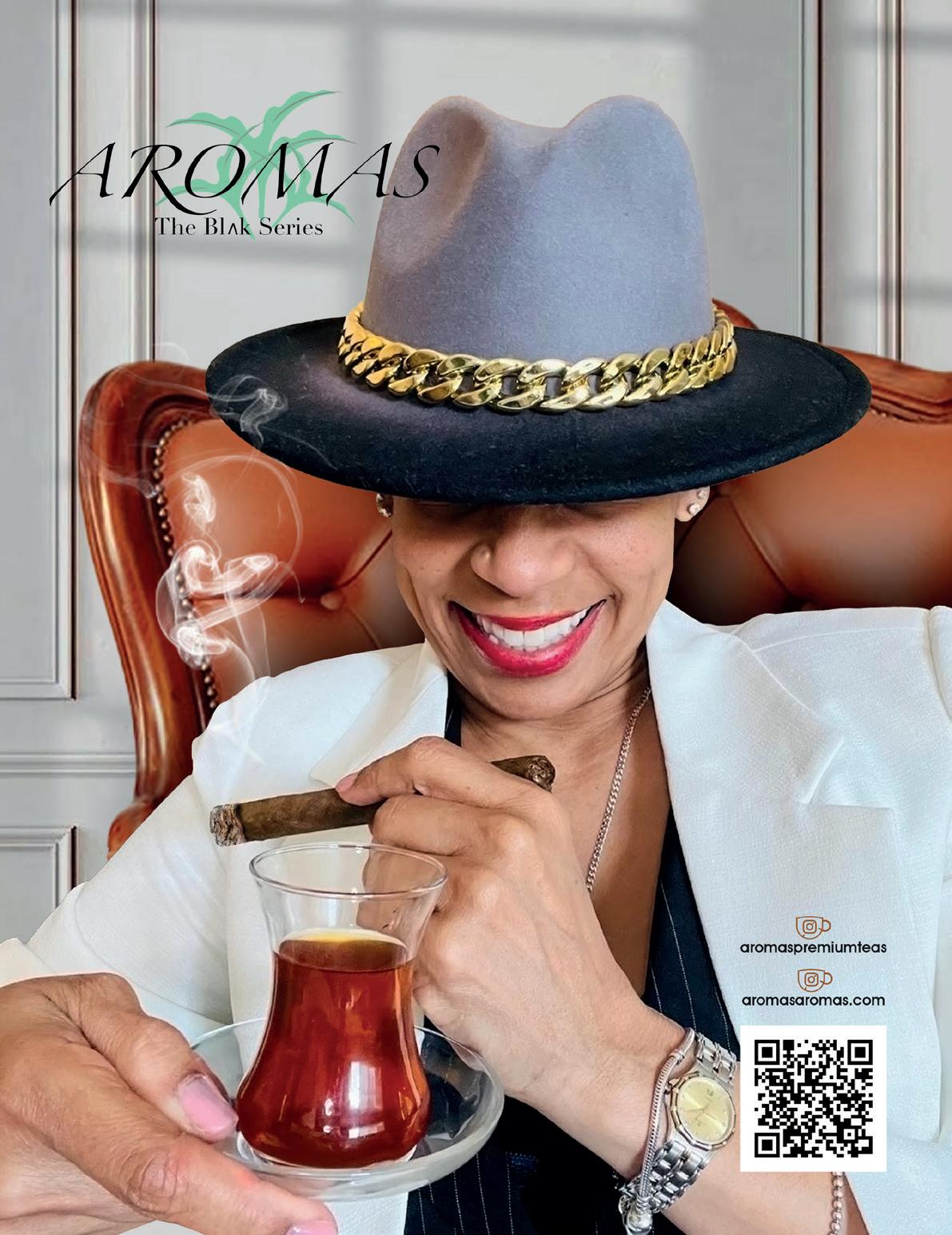
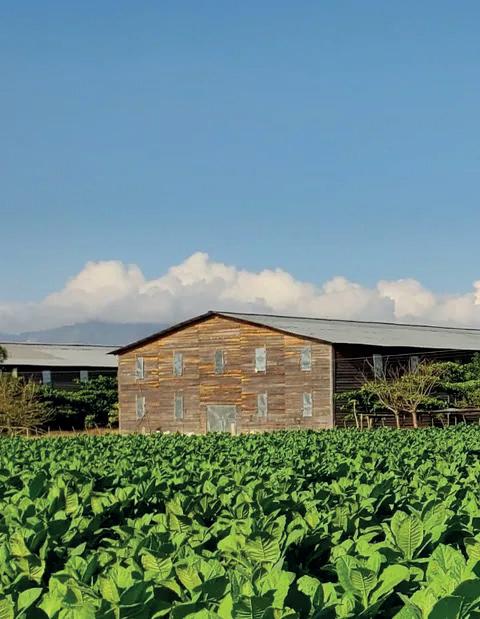
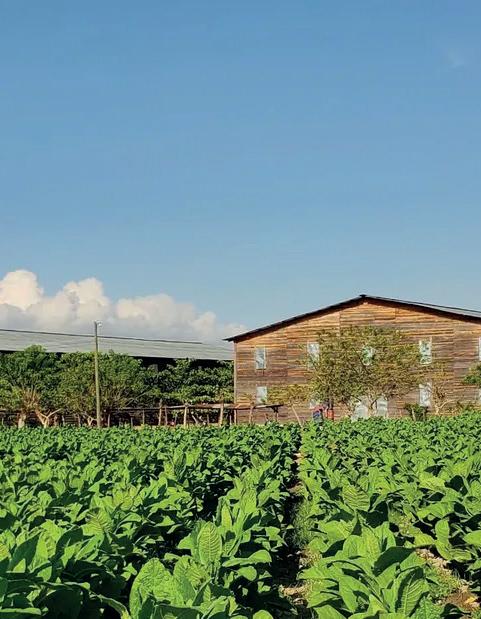
Raíces Cubanas is the dream come true of Don Romay Endemaño, whose family moved from Miami, Florida, in 2003 to establish themselves in Honduras and found the cigar factory now run by his son. Production began in Danlí, harvesting tobacco from Trojes, and since 2016, they have also done so in Jamastrán.
Having spent a lifetime related to the industry, Don Romay had always wanted to own a tobacco factory. “To this day, he still comes by occasionally to enjoy a dream come true,” says his son and current head of Raíces Cubanas, Hugo Endemaño, during an interview with the Humo Latino team.
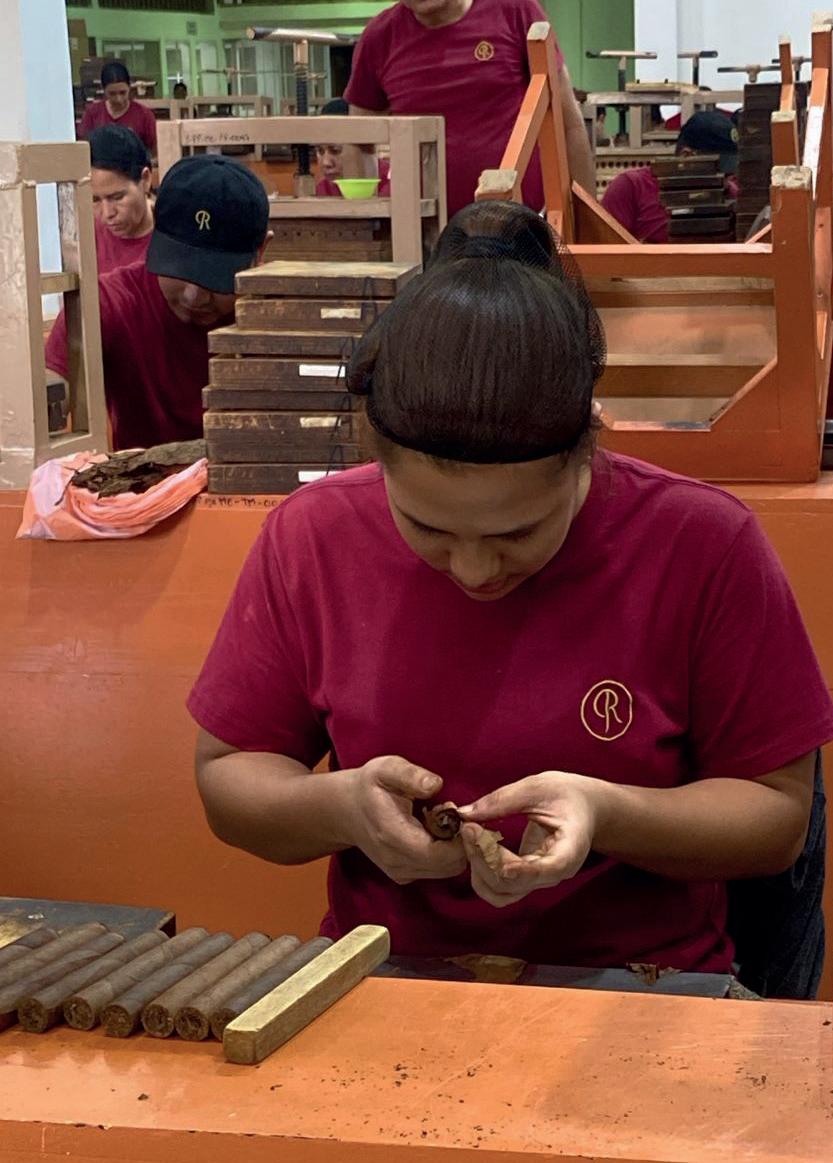
Upon arriving at the building, one can see the two wings of what was an abandoned rice mill, rescued by Romay, María, and Hugo Endemaño. The production area has rolling tables for 65 couples of torcedores (rollers); furthermore, they have a clinic to provide medical attention to the staff of between 300 and 500 field and factory employees.
They have a pilón (fermentation stack) warehouse, a cold room, a drying and sorting area, quality control, a paca (bale) warehouse with a capacity of 700 quintales (approx. 77,000 lbs) –where 40,000 pounds of tobacco are always kept– and there are plans to build another warehouse to store 500 more quintales, among other spaces or departments.

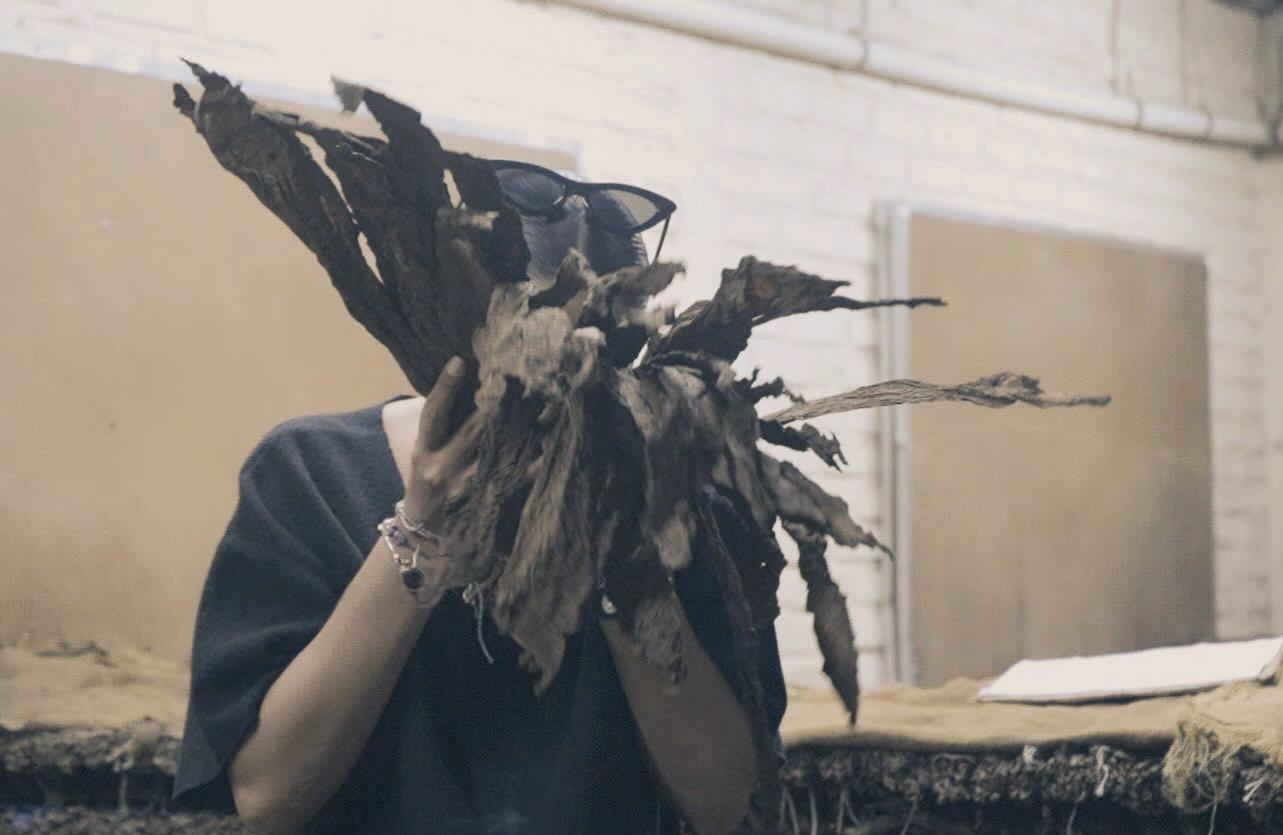
The raw material, which comes from their fields, is of the highest quality, precisely what is required by private label clients of the stature of Alec Bradley Cigars, as well as for the production of the house brands: 1941 Nuevo Comienzo, Clásico, Liga de Reyes, C5 Black, and GRD3.
Since the factory could not expand sideways, Hugo explains, it expanded upwards. After passing through other parts of the country, the family settled in these facilities in 2009, which they have gradually renovated, starting during the COVID-19 pandemic. They began by replacing the roofing, building a humidor for special products, and making other changes according to the business needs. “We still have a lot to do, but we are moving forward.”
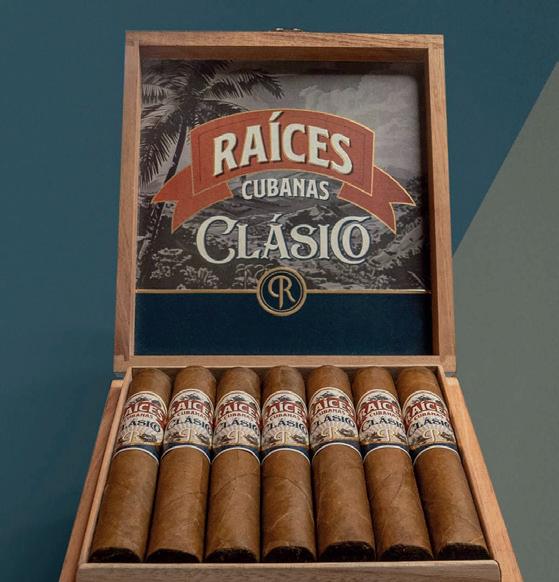
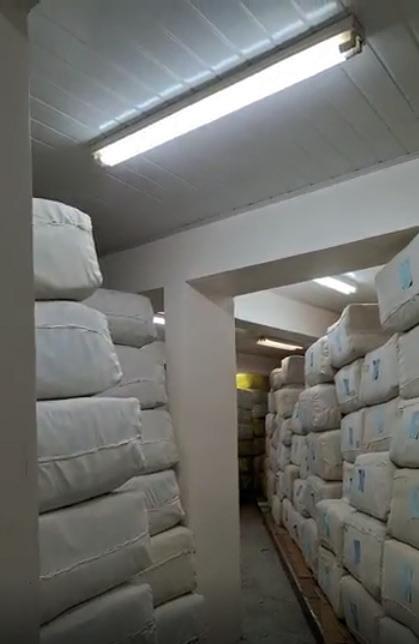
Based on effort and dedication, Hugo and his family have achieved great satisfaction with Raíces Cubanas. Among them, being the only factory in the world to have secured all three top spots in Cigar Aficionado magazine’s annual ranking, as well as having produced the first Honduran puro to achieve that distinction.
Inside the fermentation pilón warehouse, where order prevails in an aesthetic way that creates a pleasant effect –reminiscent of a honeycomb structure–stand, floor after floor, what Hugo calls “tobacco lockers,” where each leaf tells its
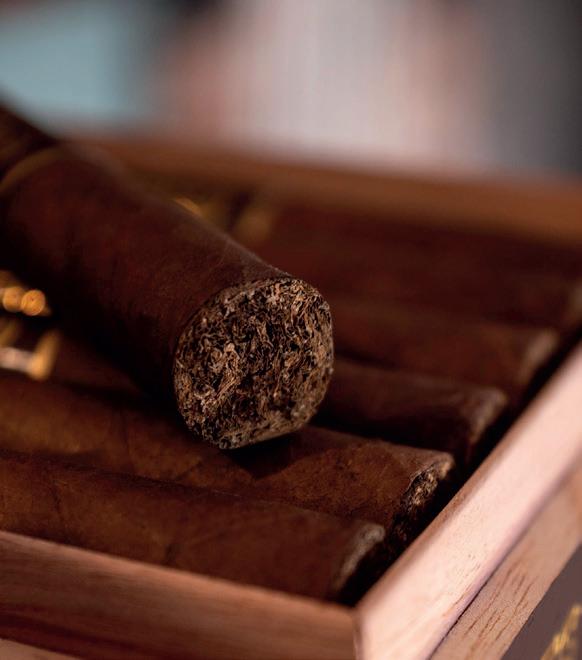
story through a card that identifies the source farm and the number and date of the cut. Furthermore, “we try to sort the tobacco as quickly as possible to separate the wrapper, binder, and filler.”
The company staff graphically records the gradual temperature increase from the center of the pilón, from the time the leaves arrive until they leave, also identifying the exact moment the moja (rehydration) is performed, a process that encourages fermentation.
Since 2025, Raíces Cubanas has been working intensely to position the portfolio of its own brands, which encompass four lines and 18 different cigars: Clásico, featuring the best Honduran tobaccos in Toro, Robusto, Figurado, Churchill, and Gordo formats; Liga de Reyes, with a touch of Nicaraguan tobacco, in Belicoso, Toro, Churchill, and Gordo formats.
Raíces Cubanas C5 Black, wrapped with fifth primings (fifth cut leaves), a reference to the leaf position from which they are obtained for superior strength, in Robusto, Belicoso, Toro, Gordo, and Doble Toro sizes, and Raíces Cubanas GRD3, in 4 x 60, 6 x 60, and 7 x 70 formats.

Hugo anticipates more launches as part of a very well-thought-out long-term strategy with clearly defined steps. He seeks to guarantee their positioning in the premium cigar market, to which they have dedicated much effort, starting from the pre-industry phase, “using the best seeds, processes, and technologies. We are happy with the blends and the results of our efforts, but above all with the response from customers.”


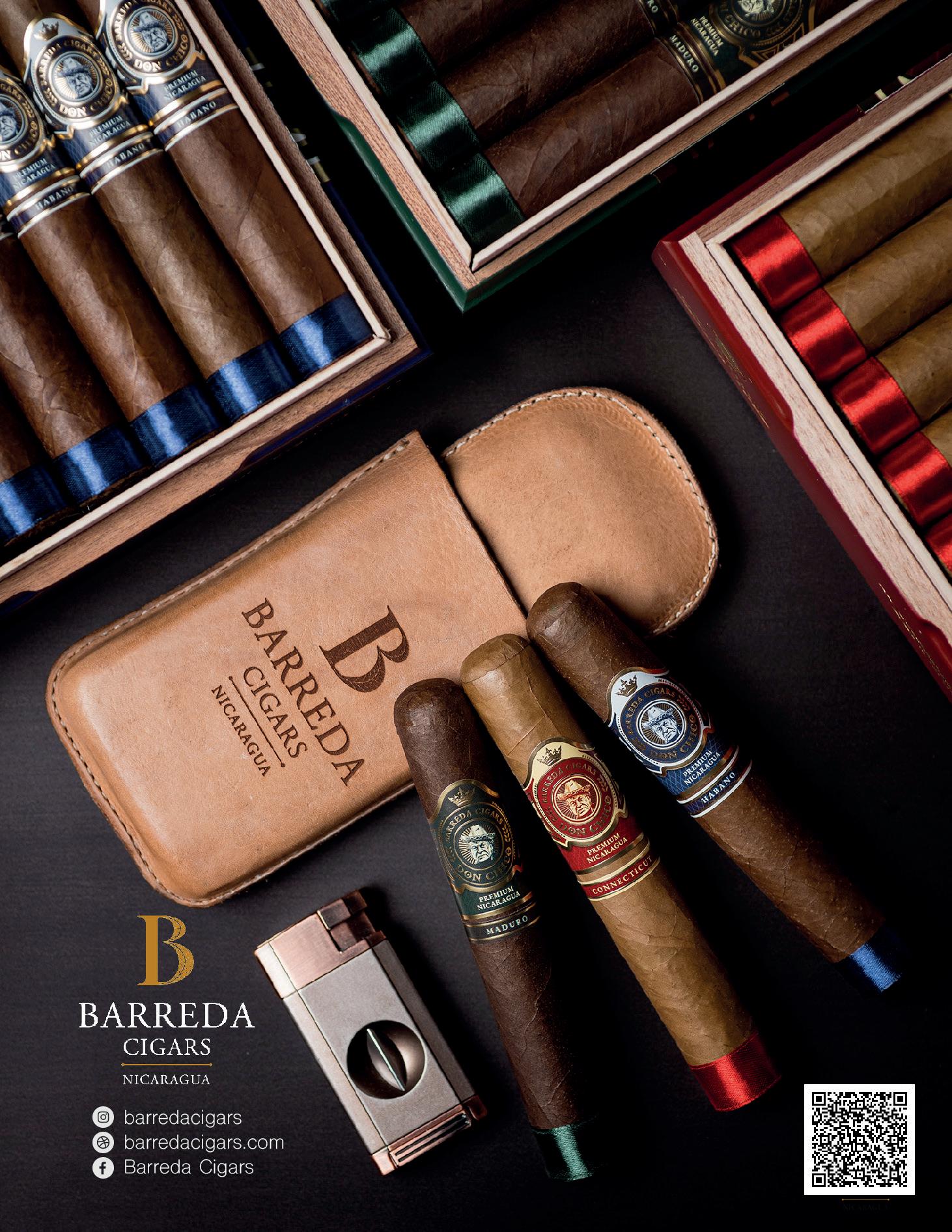
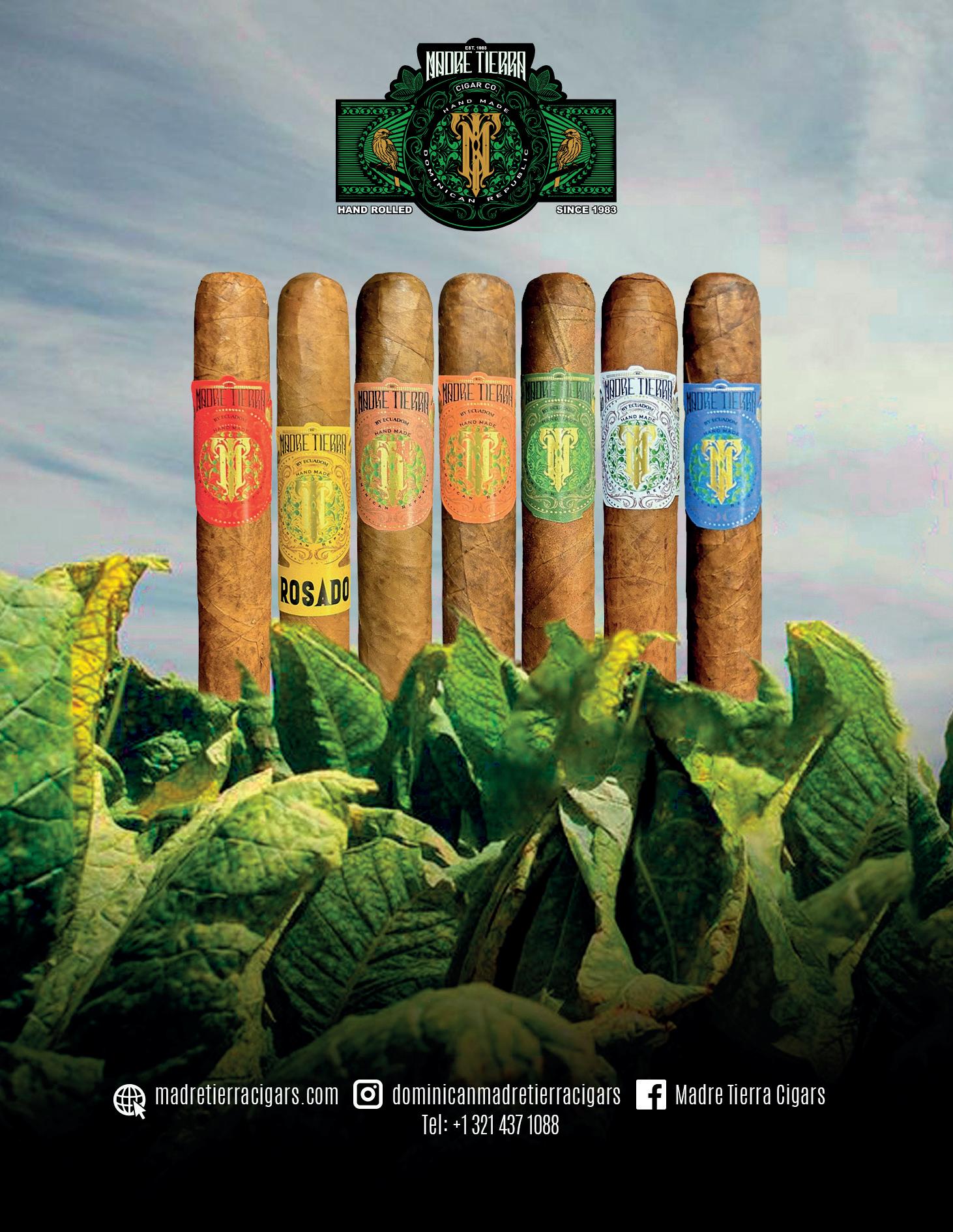
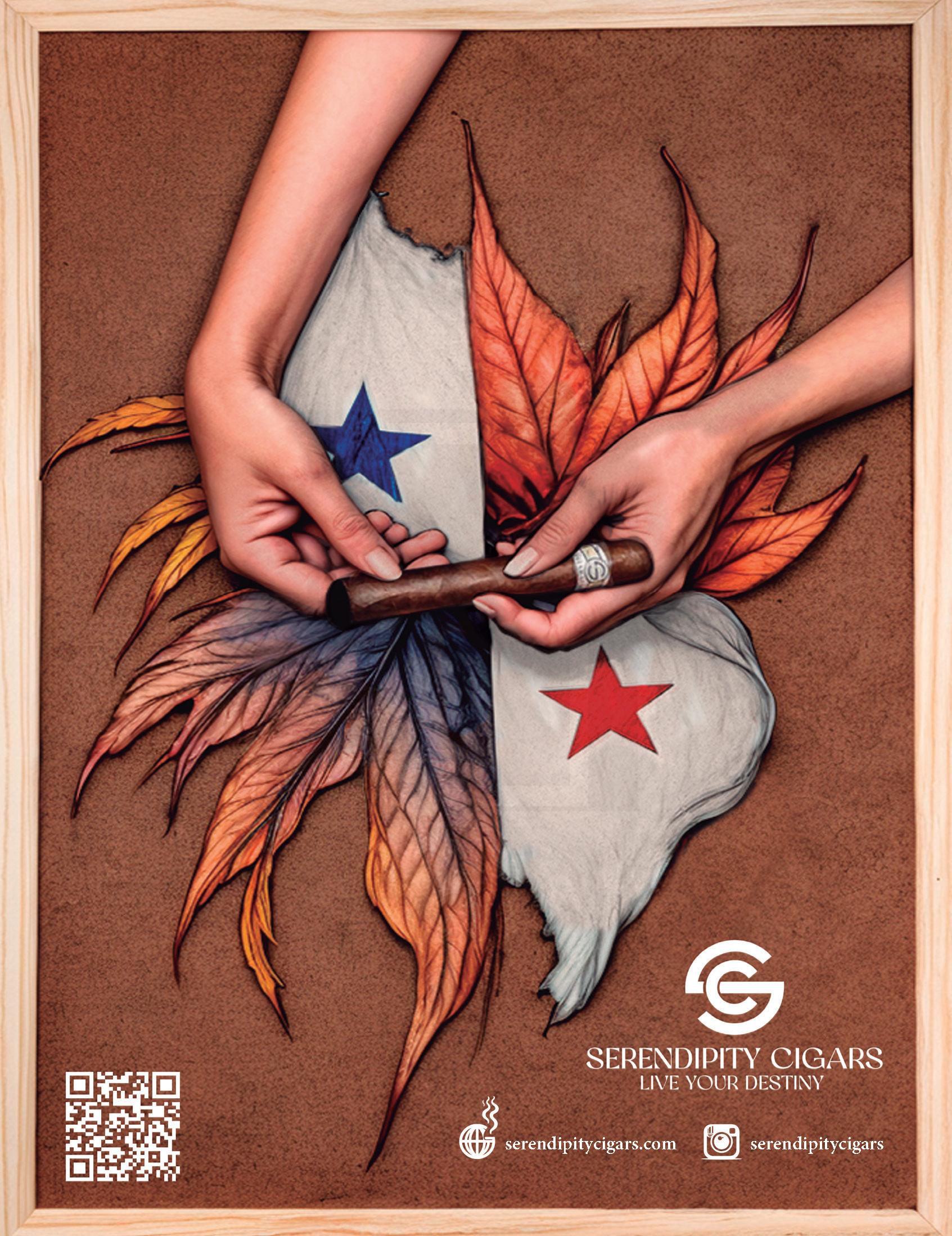

Among a sea of options for naming their debut line –some already registered and others lacking the necessary impact– the couple decided on Hoja de Quisqueya. A brand that in just three words expresses the essence of their cigar, framing flavor, heritage, tradition, and elegance; a meeting of two worlds –Taíno and Castilian– from the hands of Spain and the Dominican Republic, by and for the enjoyment of tobacco.
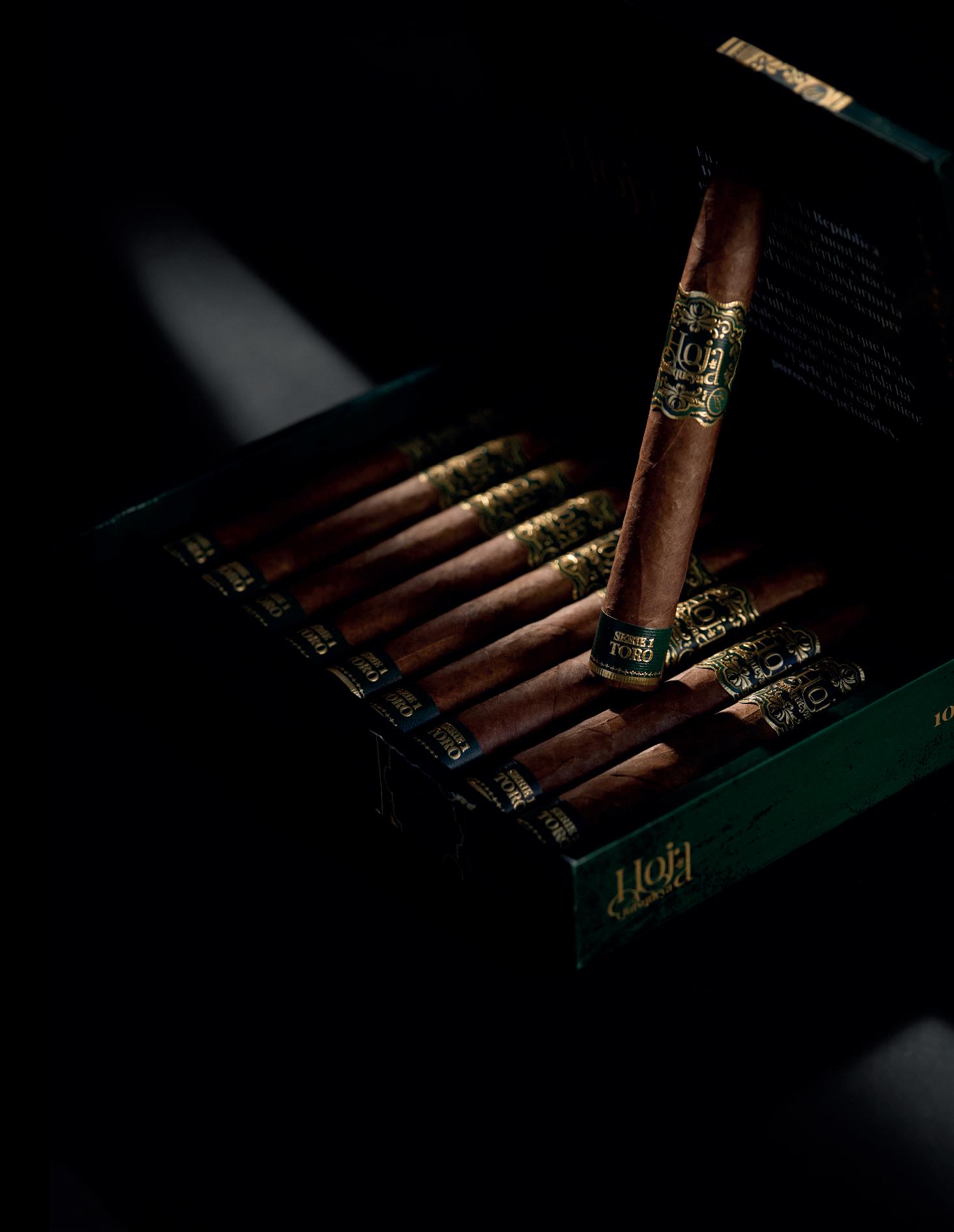
For David Martín Serrano and María Esther Carabias
Castro, enjoying tobacco always represented a special moment, whether it was at a wedding, at the bullring, or while socializing with friends. Smoking was a recreational activity that turned into a passion and a meeting point that –along with their children, Fernando and Esperanza– amalgamated into an entrepreneurial marriage setting sail on its journey into the Tobacco World.
Among a sea of options for naming their debut line –some already registered and others lacking the necessary impact– the couple decided on Hoja de Quisqueya. A brand that in just three words expresses the essence of their cigar, framing flavor, heritage, tradition, and elegance; a meeting of two worlds –Taíno and Castilian–from the hands of Spain and the Dominican Republic, by and for the enjoyment of tobacco.
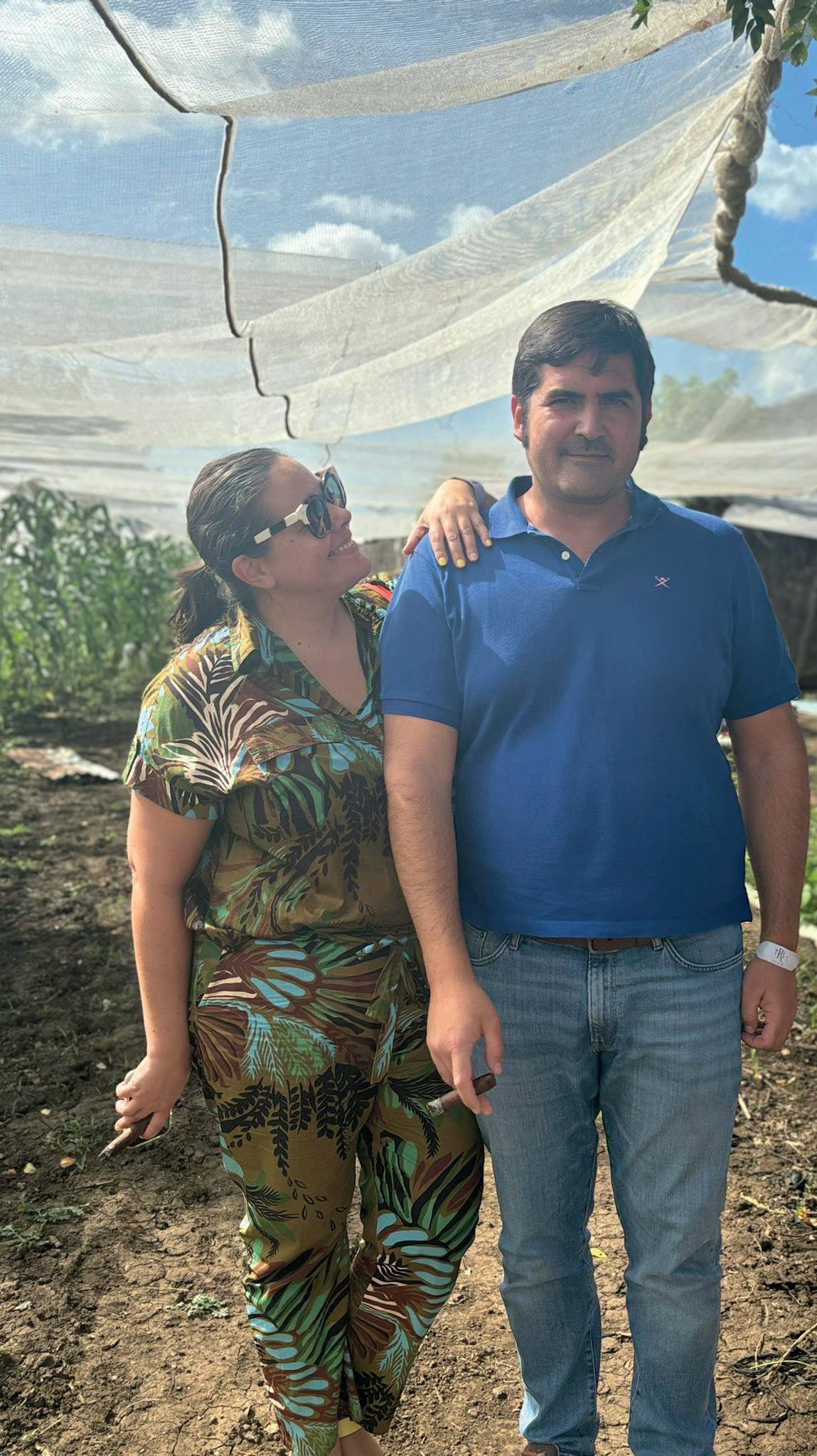

David Martín Serrano was born in Salamanca, Castile and León, the youngest of seven children in a family with an endless list of cousins, aunts, and uncles. His academic preparation reached the secondary level, as he joined the family’s ground transportation business at 19, opting for empirical education.
Between 2012 and 2013, immersed in the life of trade and business, he became involved in the import of charcoal from Cuba and the buying and selling of other food products, igniting an affinity that, a decade later and after visiting the Dominican Republic, would lead him to venture into the premium tobacco industry.
For David, a Vega Fina –the typical wedding cigar– marked his initiation as a smoker, and although he doesn’t recall specific details, he treasures the flavors and aromas of a later Montecristo No. 3. But he can’t forget the experience provided by the first cigar he tried at Martín Cornelio’s shop in La Romana, Dominican Republic: “It was a bandless cigar that had me thinking about it all day. It could have been a Flor de Bayahibe or any other of the creations that characterize our master blender.”
On the other side, María Esther Carabias Castro was born in Avilés, Asturias, into a very small family, being an only child with barely one uncle on each side of her parents. At 25, she left her homeland to work in Madrid, the capital, following the example of her grandparents, who under the culture of effort arrived in Asturias to prosper.
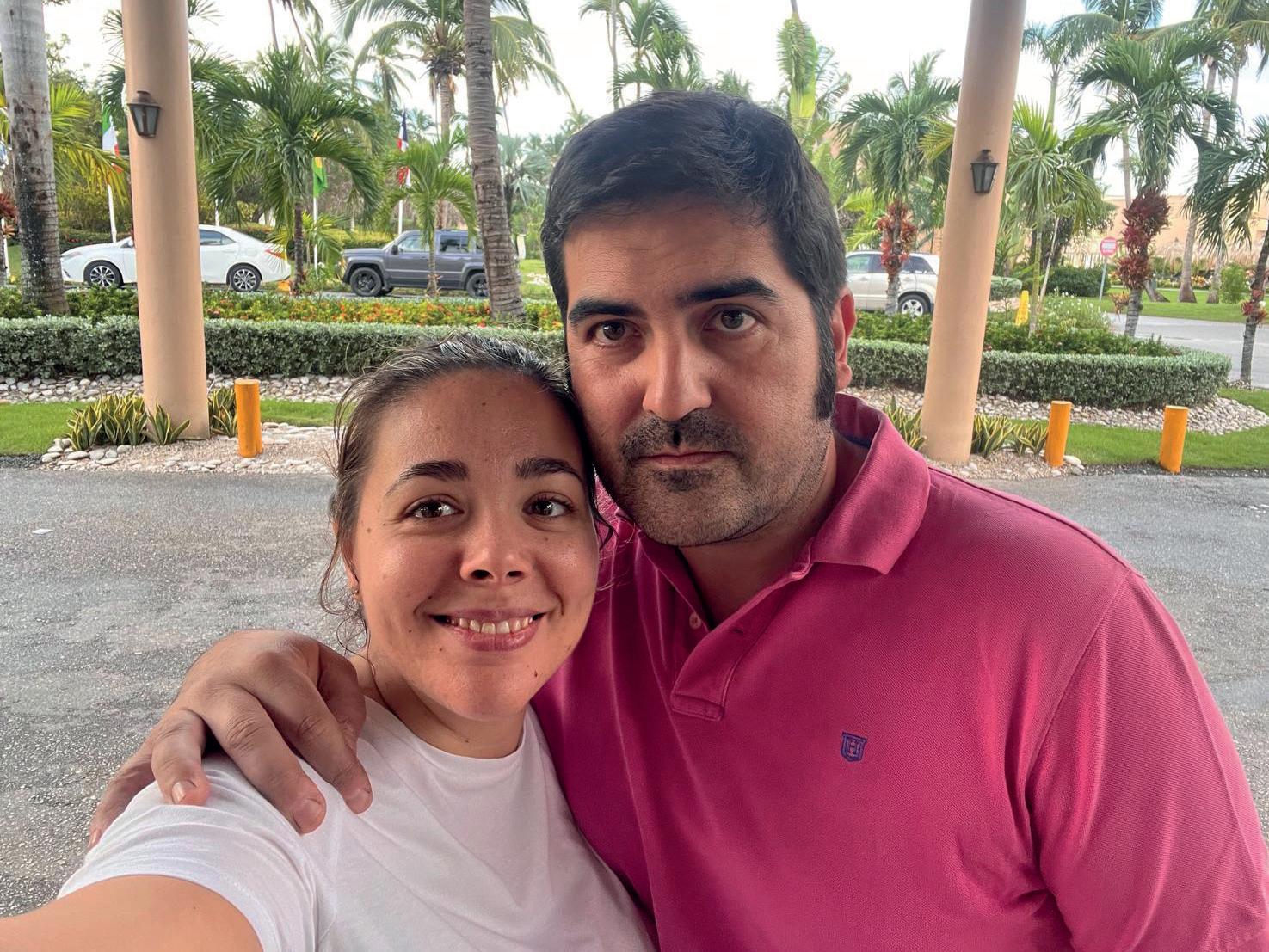
She studied Business Administration and Management at the University of Oviedo and complemented her professional training with a one-year residency in Dublin, Ireland. In 2008, she started her professional career as an employee at Deloitte, S.L., in the field of auditing and consulting.
For ten years, she specialized in the banking sector, and in 2018, she decided to shift her career toward the insurance sector, working for the second-largest company in the field in Spain. In 2025, she took a second turn –one she projects as definitive– to dedicate her time to driving Martín Diego Cigars, the family company with which they launch Hoja de Quisqueya and develop a couple of other projects.
Regarding tobacco, there was always a memory of Don Eloy smoking a Farias at her maternal grandfather’s house. But for her, just like David, a Montecristo No. 3 lit alongside Juanjo, a coworker, was one of the first sticks to touch her palate.
In 2022, to celebrate David’s 40th birthday, María Esther organized a trip to Punta Cana, in the Dominican Republic: “It was a gift, one of those things you do once in a lifetime for a big celebration.” When planning, she also considered Miami, New York, or Panama, but fate had something prepared for them in Quisqueya, the Taíno name for the Dominican Republic.
Thus, they arrived in Punta Cana for the vacation of their lives, and what they found, besides sun, beach, and sand, was a small cigar rolling and sales establishment where a man named Faustino hooked David with the idea of tobacco trade.
Business is David’s domain; he is constantly thinking about how to start something new, while María Esther acts as his complement to make and execute the decisions from a variety of projects that arise in his mind.
In late 2023, the idea took shape, resulting in their current two blends, based on the feasibility of the investment and the confirmation of their passion. “We firmly believe that we contribute something to the development and promotion of the Dominican cigar, and that is why we chose a name so intimate to the local culture.”
David and María Esther met during a wedding in Salamanca –where they now have their family residence– starting a story that today adds up to 19 years of teamwork.
Business is David’s domain; he is constantly thinking about how to start something new, while María Esther acts as his complement to make and execute the decisions from a variety of projects that arise in his mind.
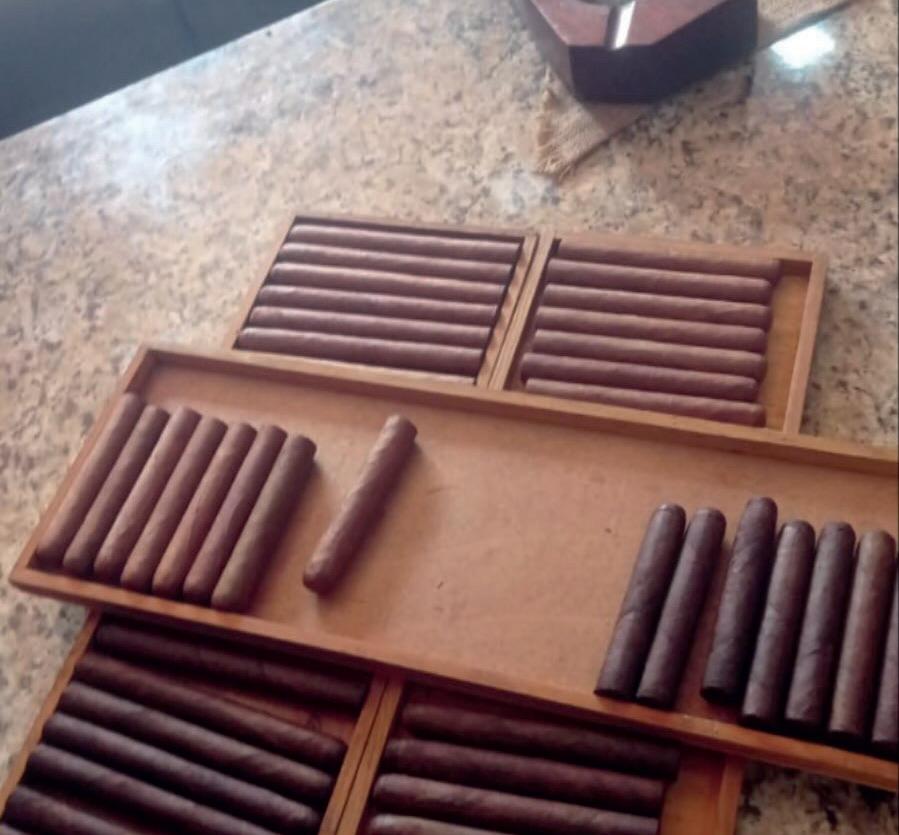
Fueled by his curiosity about the industry and a growing affinity for cigars, David set out to find someone who could help him materialize his desire to create what he calls The Dominican Cigar. “It was obvious that on the Internet I could find La Aurora, La Flor Dominicana, or Arturo Fuente, but those weren’t options for having a brand made for me,” David recalls.
Finally, and by chance, the encounter with Cornelio Cigars Factory occurred via Facebook, a social network he used to maintain contact with a store employee. When the shipment of samples failed to arrive due to customs bureaucracy, the couple decided to return to the Dominican Republic in December 2023 to continue the arrangements personally.
Although it is a short journey, their trip from Punta Cana to La Romana was peculiar, experiencing the local road culture with a driver who sped them along. When they arrived at the factory, David –who stepped out of the car pale– didn’t feel like smoking, but Martín Cornelio’s firm statement and personality left him no alternative: “I cannot make a cigar for someone who does not smoke,” he told them. So, after a cup of coffee and the first cigar, David not only relaxed... he fell in love.
Returning to Spain, they took various samples to decide which was the best option to start the journey toward their blends. As time passed, they changed wrappers and formats until they arrived at the current line.
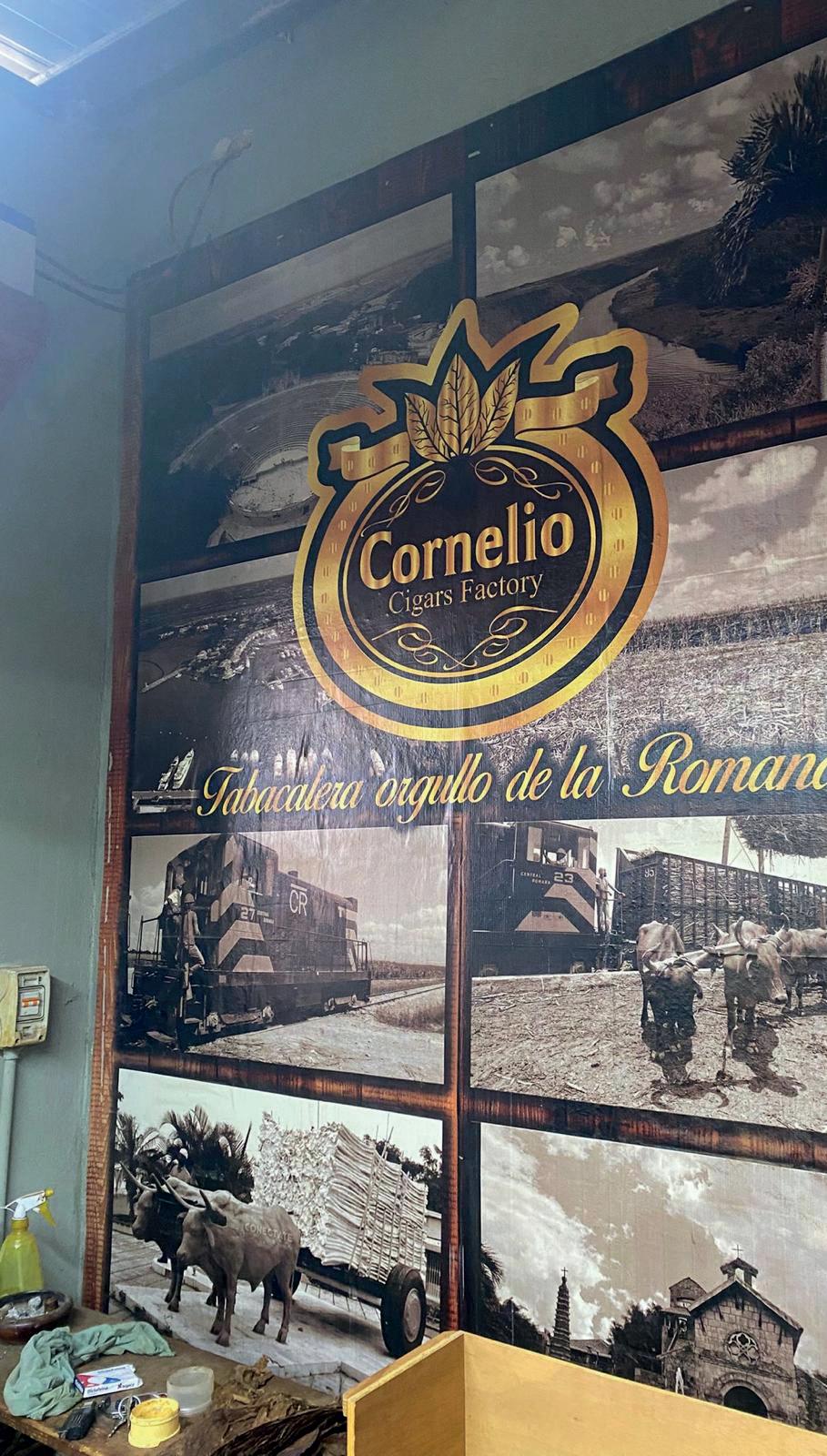

Back in 2023, David and María Esther knew nothing about Don Leo Reyes, although Cornelio had explained certain aspects of his position in the industry. It was from 2024, thanks to constant visits to his home, that everything changed. “Getting to know Leo has been quite an experience; he is someone who loves his work and can talk about tobacco for hours. The fact that he says he likes your blend is an injection of energy to keep going,” they say.
Once convinced he wanted to work with David and María Esther, after having sent samples and listened to their appraisals and objectives, Martín Cornelio knew that the blend needed a marked European style. “Over there, they are smokers; they know how to appreciate aromas and flavors above strength, and that’s what I wanted to do.”
Returning to Spain, they took various samples to decide which was the best option to start the journey toward their blends. As time passed, they changed wrappers and formats until they arrived at the current line.
The master blender recounts that according to the notebook in which he registers each of his creations, the process to arrive at Hoja de Quisqueya began with blend number 108732, to which variations were made based on the couple’s taste.
It was a period of more than a year of backand-forth, making variants and samples until the final result was achieved: a mild cigar, with flavors, aromas, and many nuances. “It has a profile similar to Flor de Bayahibe, with its variation of Carbonel tobacco from Quin Díaz, which, even though they come from the same seed, are different varieties when harvested in other lands. The Quin Díaz has more aromas, more flavors, more sweetness. It is a mystery that only the natives know.”
Martín Cornelio’s work, for all his cigars, is based on high-quality tobaccos provided by Don Leo Reyes; leaves with aging processes of up to six years. “I knew where the best tobaccos were stored, so I went to look for them and bought them. It is a product that almost no one uses, so I take advantage of it.”
Before leaving the factory, the cigars with which Hoja de Quisqueya made its presentation in Germany, during the InterTabac 2025 trade fair, had a resting period of half a year, and the time will continue to be added to the batch until the shipment of the total production.
Cornelio affirms that the materials that Leo sells are secured, so it is not a limitededition blend, but leagues with a future. “I don’t use strange seeds because they don’t appear later, and I have to juggle to get or correct the blend.”
Martín Cornelio’s work, for all his cigars, is based on high-quality tobaccos provided by Don Leo Reyes; leaves with aging processes of up to six years.
The tobaccos present in each Hoja de Quisqueya stick come from Peñuela, a land in Mao where they continue to be planted, and will only change slightly depending on the weather. “But nothing significant. With a lot of sun, the strength goes up, and with water, it goes down, but the aromas and notes remain the same, and that is what you are looking for.”
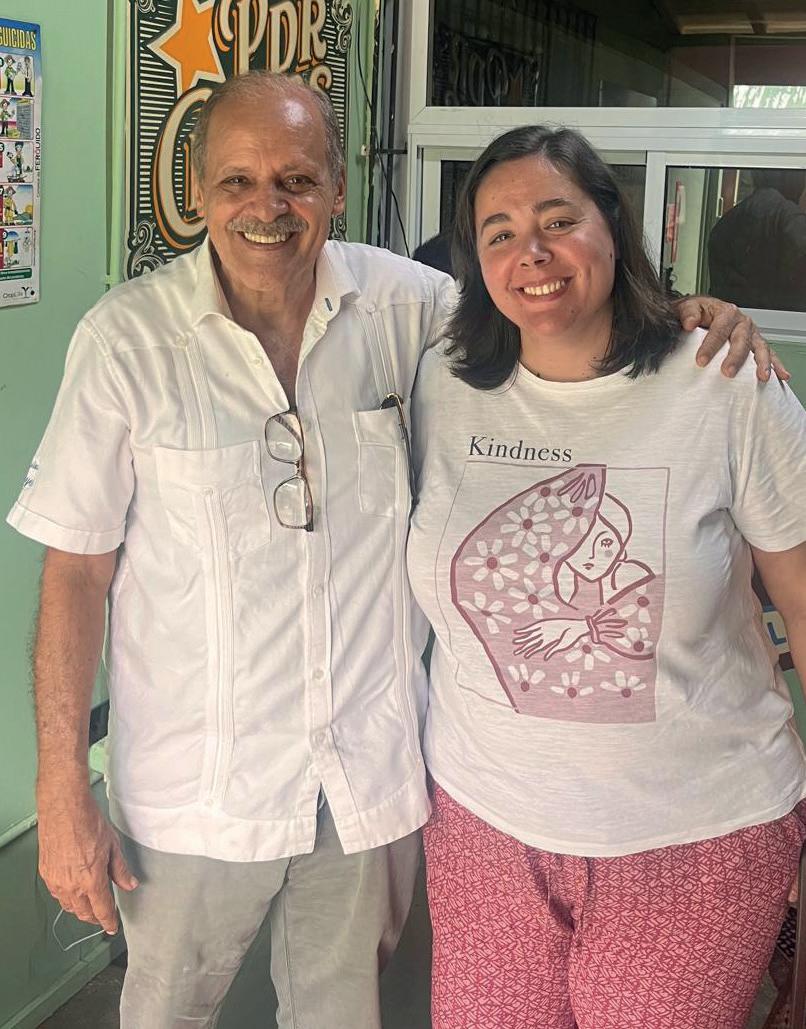
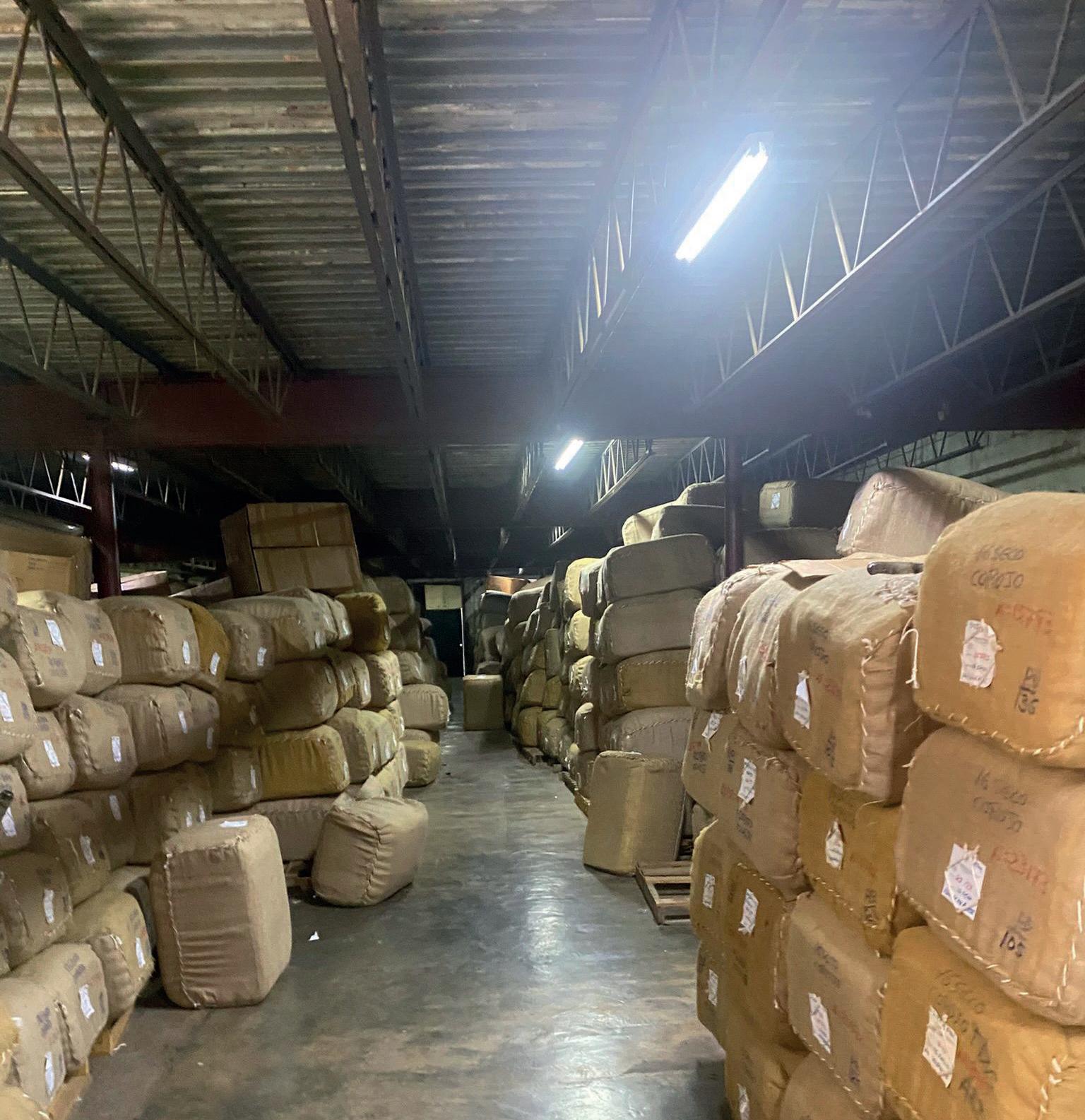
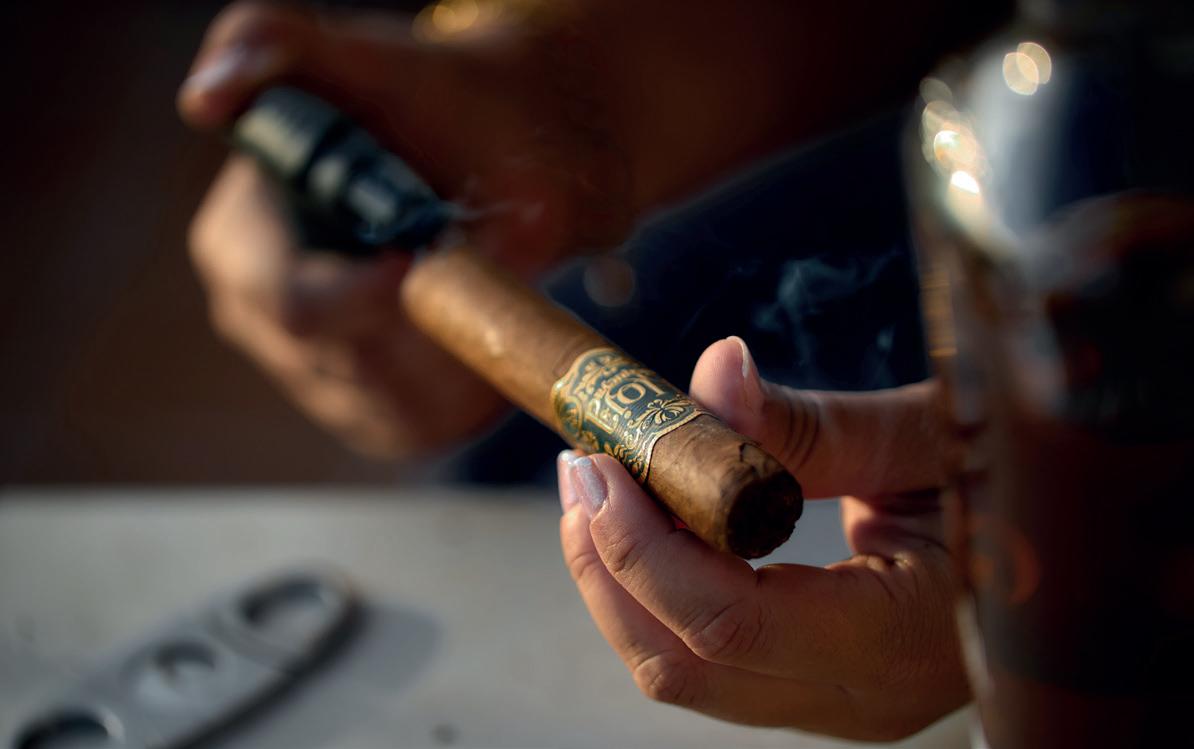
Convinced that the path to follow was to venture into the premium tobacco industry, David and María Esther commissioned Cornelio to manufacture the cigars, while they sought the name, registration, and completed all the necessary paperwork to begin.
The original name idea turned out to be a registered trademark of Spanish origin, while all the other options were also occupied in other countries. But they did not give up and finally settled on an option with a lot of identity: Hoja de Quisqueya.
Hoja de Quisqueya is a line that encompasses two blends and formats:
Serie 1, a Toro with a Corojo wrapper, and Serie 2, a Robusto with a Habano 2000
wrapper; a minimal change that defines a pair of very different smokes. While the first presents a medium strength with flavor intensity, the second is characterized by a lower intensity, with slight peppery notes and great flavor on the palate.
Under these two distinct wrappers, the cigars contain an HVA binder and filler based on the Quin Díaz, Criollo ‘98, and Piloto Cubano varieties.
During testing, David and María Esther experienced different flavors on the palate, until they obtained a cigar that is enjoyable throughout all three thirds, maintaining a savory and creamy aftertaste. “Strength does not have to be at odds with flavor. The cigar has to be my friend, not my enemy,” they state.
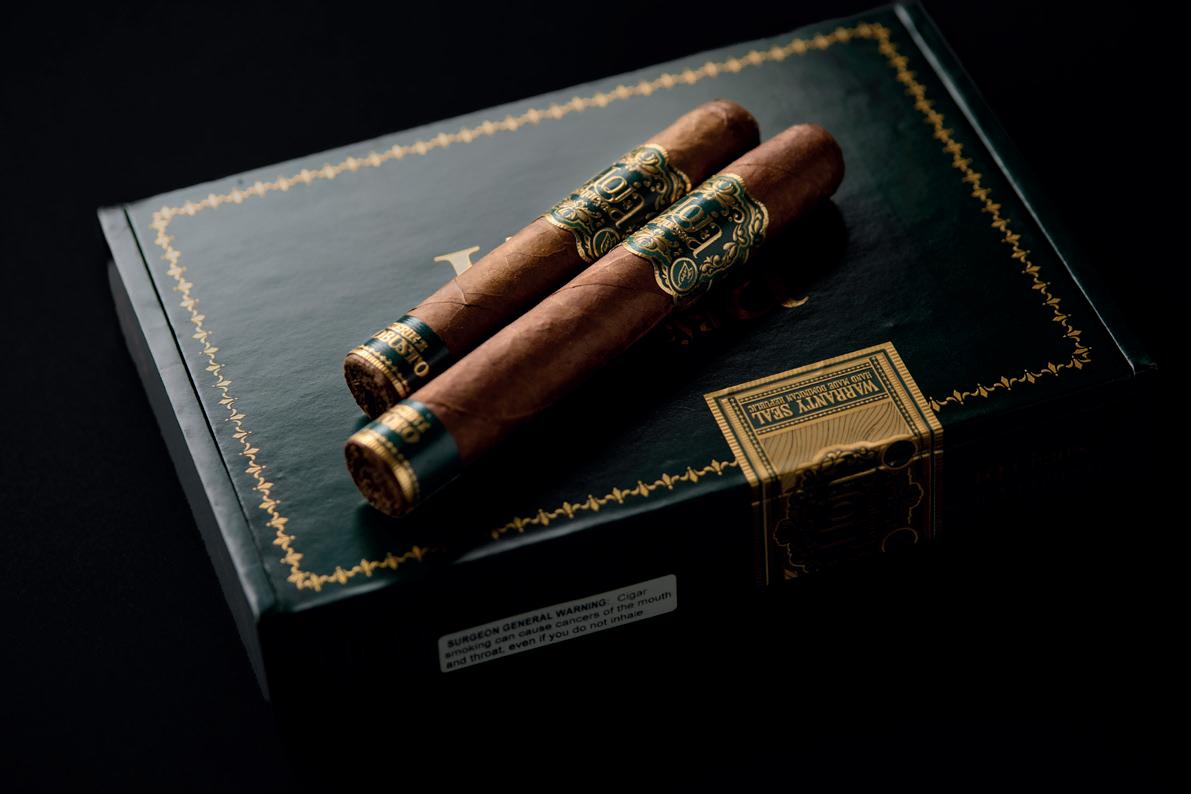
The couple was always clear that the presentation of their brand should be in an international showcase. They originally thought of starting in the United States, perhaps at the Total Product Expo (TPE) or the Premium Cigar Association (PCA) Trade Show, but the presentation took place at the recent InterTabac, the largest tobacco fair in Europe. “The market is global, and it’s inevitable that it should be. Spain was going to be the last country of entry, but in the end, it will go parallel with the rest; it will be an all-at-once approach.”
They consider themselves to have “their feet on the ground,” even though their expectations after the fair were greatly exceeded, knowing that the results will come in the future. “We have to let the public sample and get to know the product; that is the only way the public will realize the value of this effort.”
The starting point was Germany, and the process will take time, but negotiations have extended to various places, including the Dominican Republic itself. “We are not going to rush, because we know we are a new brand, but we expect a good reception.”
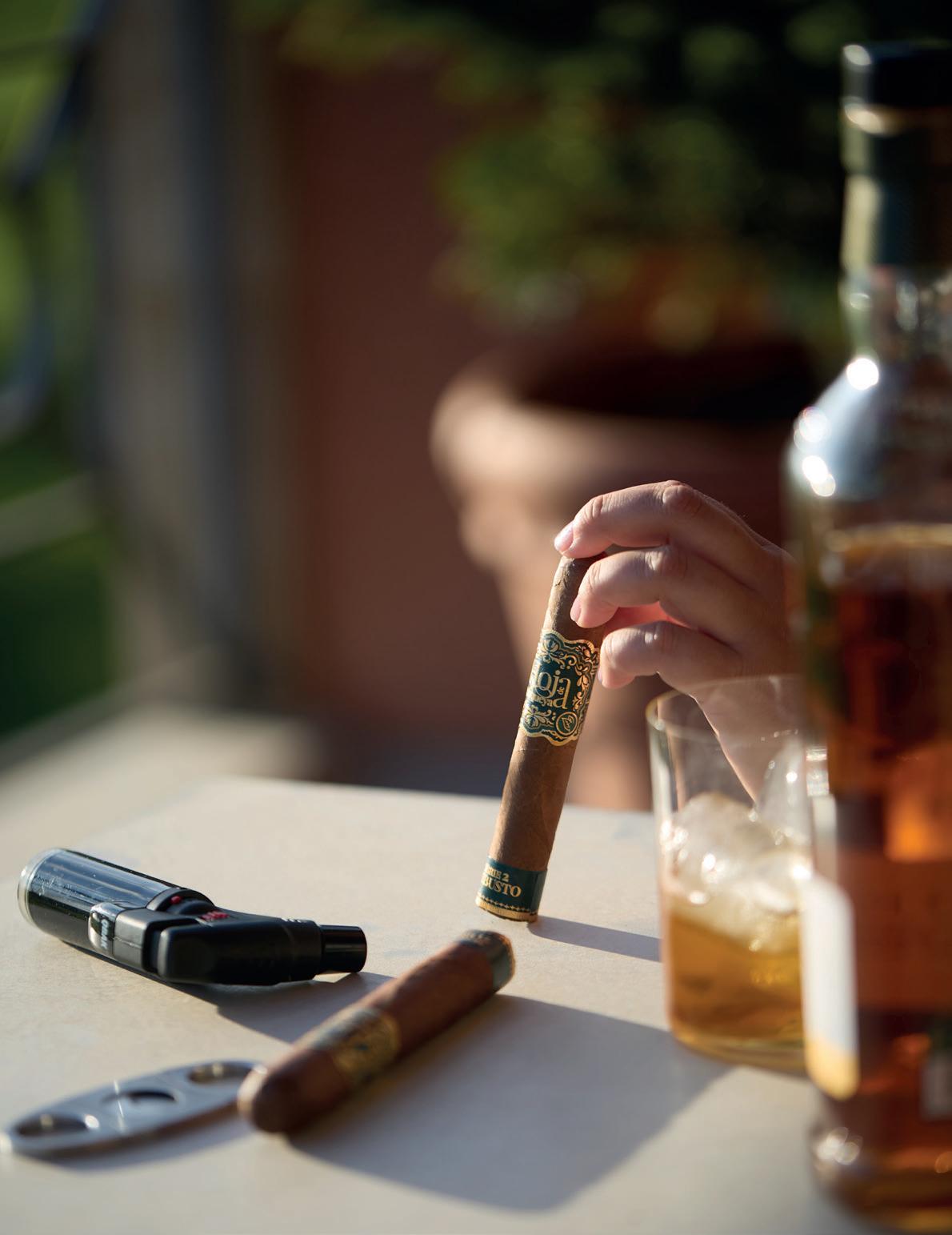
As hard workers, raised under the culture of effort and with a couple of children awaiting a legacy, their dream is to be able to make a living from tobacco, advance the brand, create more vitolas, and think big. “Having dreams is easy, but the day-to-day work is what weighs heavily. However, after our experience in Germany, we felt barbaric satisfaction hearing so many people say good things about our cigar.”
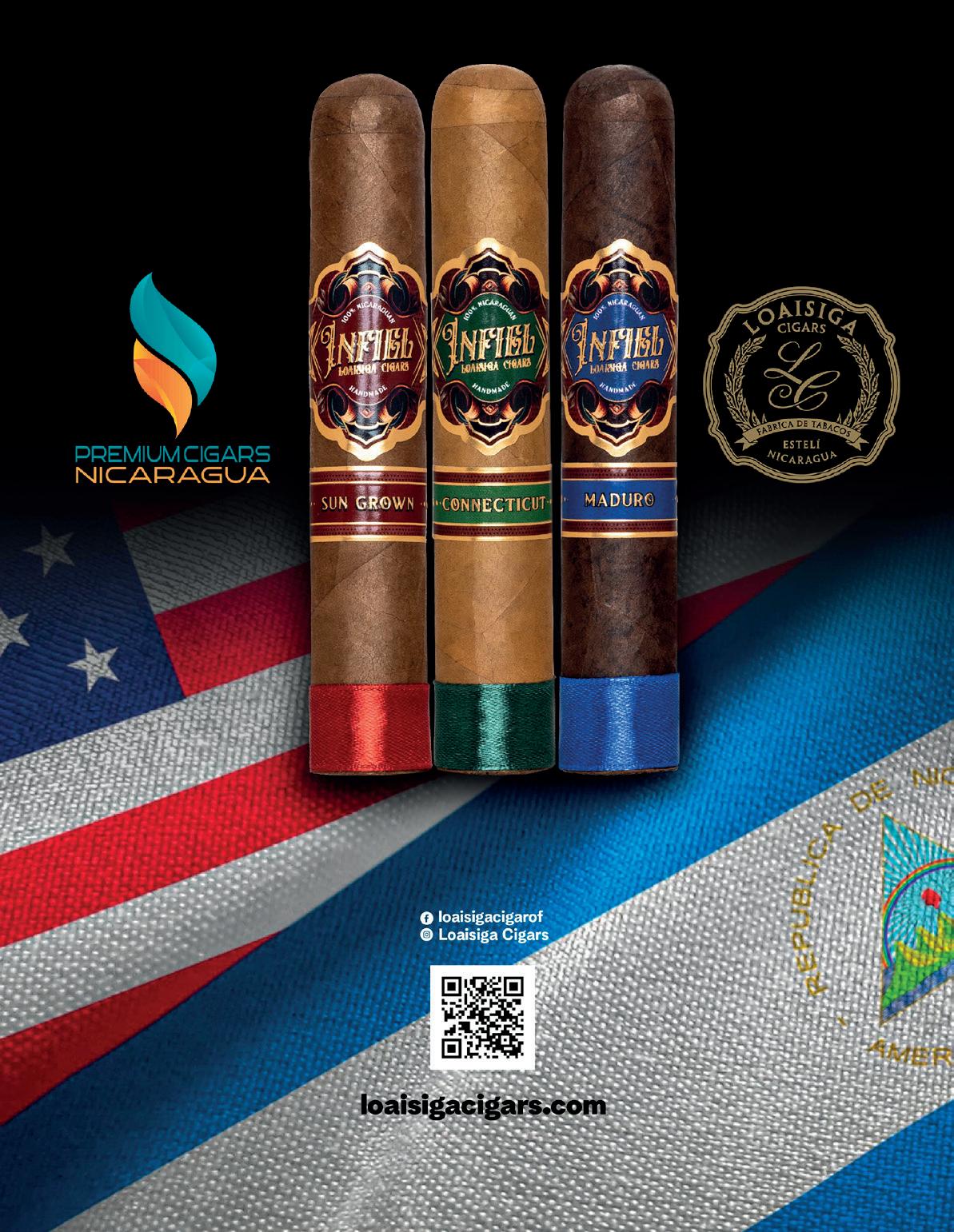
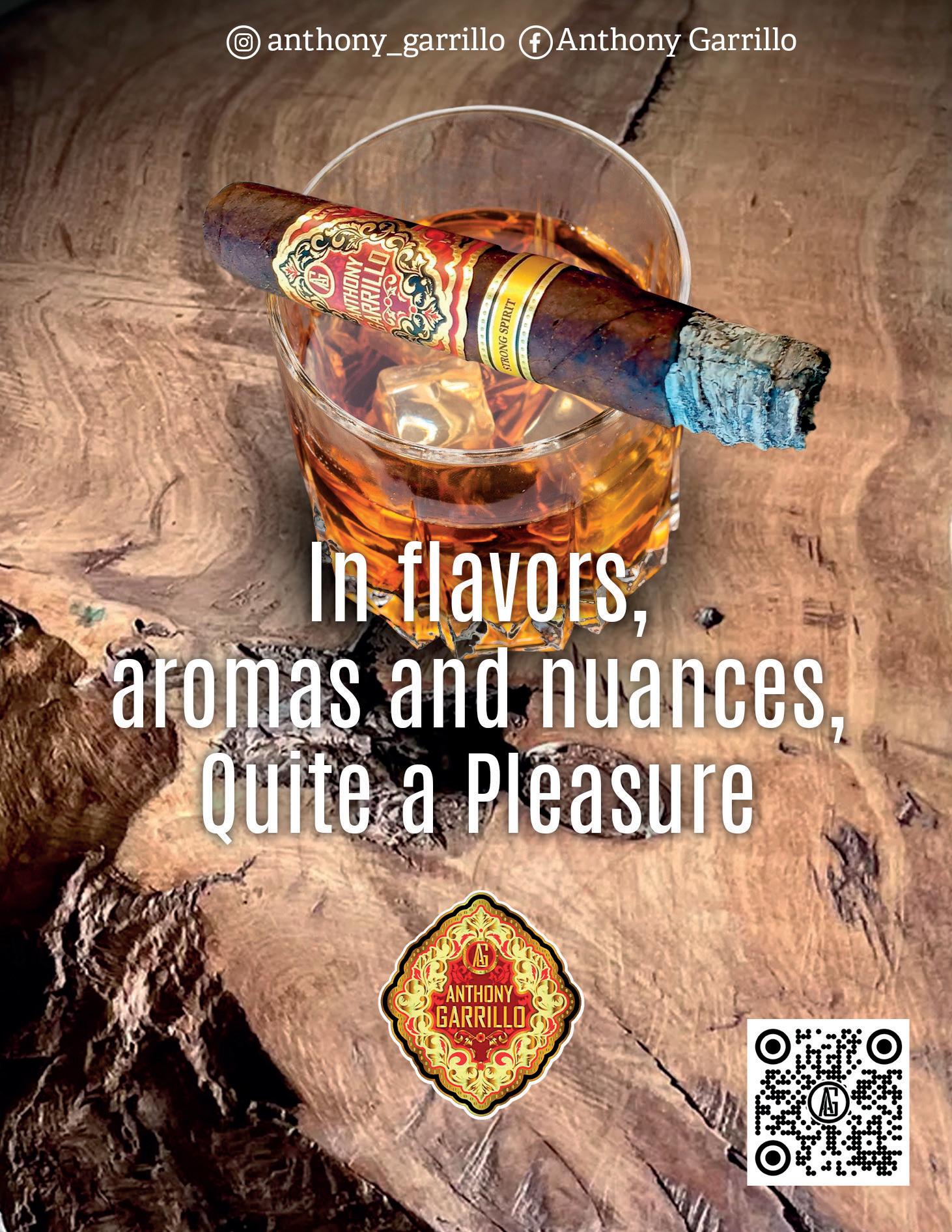
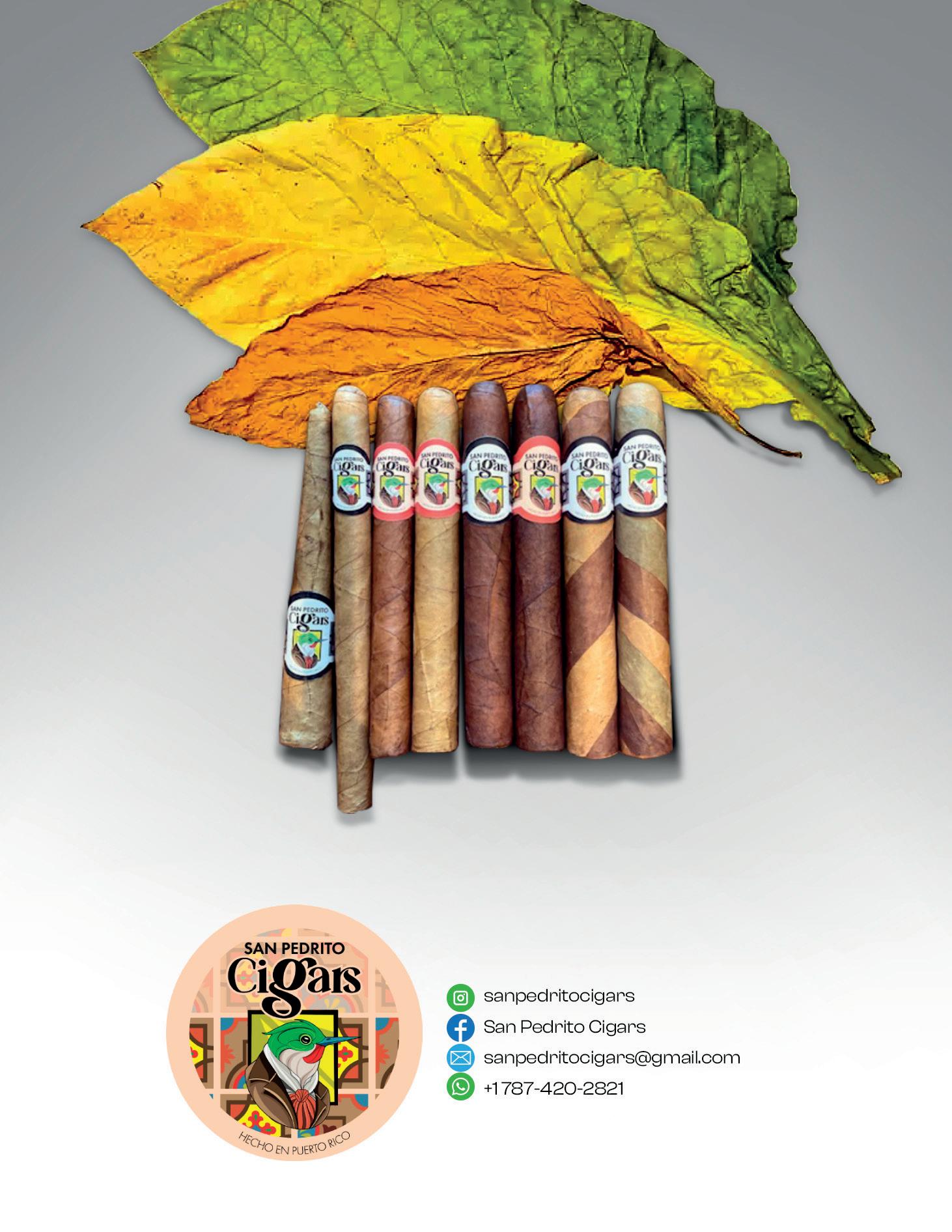

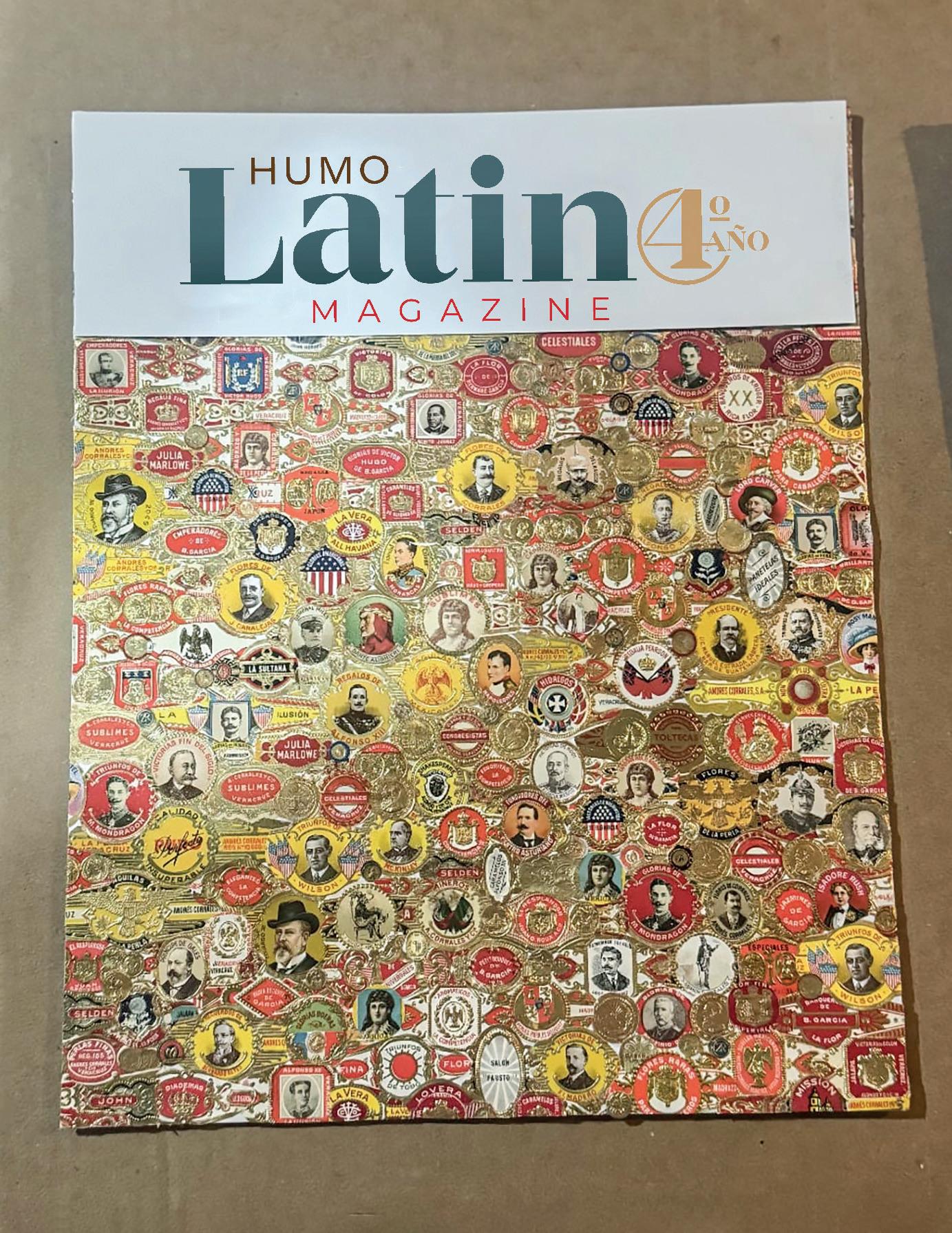
Robert Glick
Raúl Melo
An attorney with a law firm in New York, where he has practiced his profession for over three decades, Robert Glick is a cigar aficionado. At the age of 25, drawn by the beauty of their gold details and die-cut reliefs, he began to collect the cigar bands of the cigars he smoked. For some time, a glass container was the destination for dozens of bands that shone inside like coins, but when it exceeded its capacity, Robert had an idea that would change the course of his hobby.
On a table, something as simple as a coaster inspired the lawyer’s artistic heritage to turn it into something more, helped by the aesthetic and elegance that cigar bands could provide. Thus, this piece of wood became the first object his curiosity “intervened upon,” and the result was satisfying.
Over time, Robert’s technique evolved into a kind of puzzle that takes shape piece by piece, with no lines or edges that make it obvious that they are bands. This is how he seeks to set himself apart from other artists and continues to learn to improve.
Born in Queens, New York, and a fan of the Mets, he went to law school in Massachusetts and has no artistic training whatsoever. But he does have the influence of his mother, a woman with a very good eye for art, as well as his father, who for many years was dedicated to graphic design and the creation of various works focused on advertising.
At first, his designs were linear, but then he experimented with more complex objects, expanding the range of materials for their preservation and learning something new with each new piece.
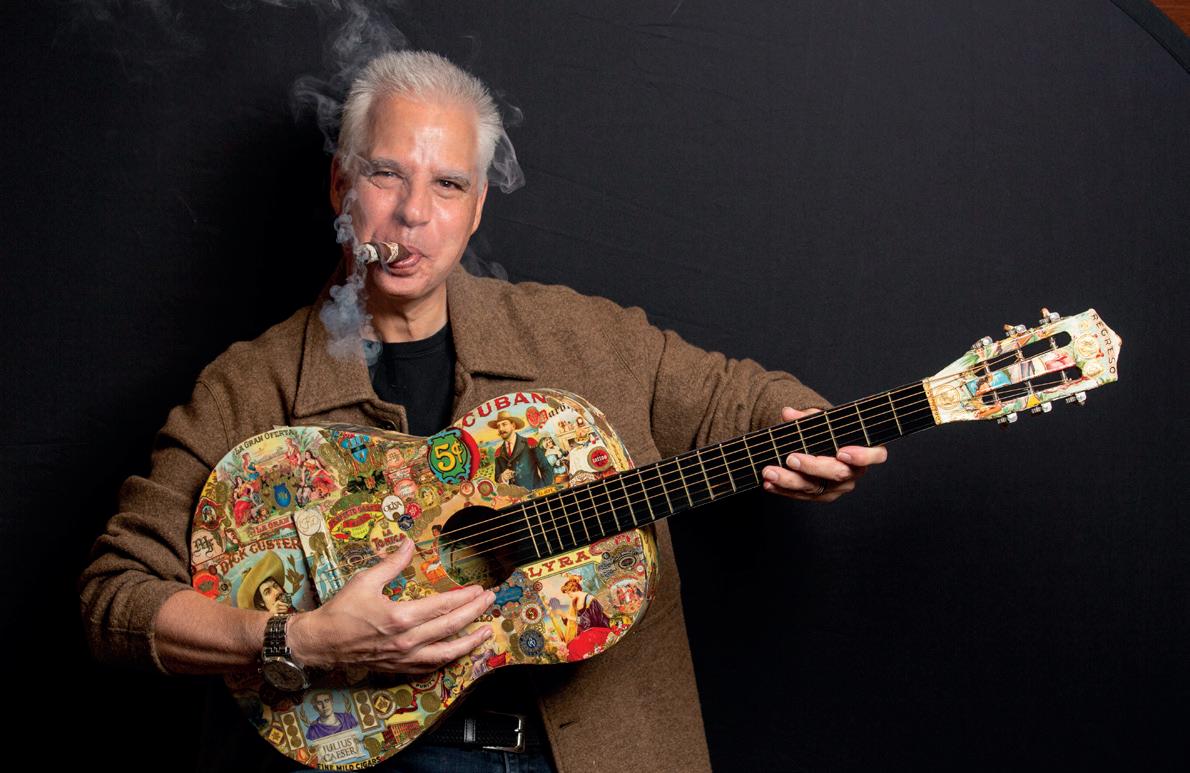
Playing with my favorite bands: a real guitar “intervened upon” with over three thousand bands and antique box applications.
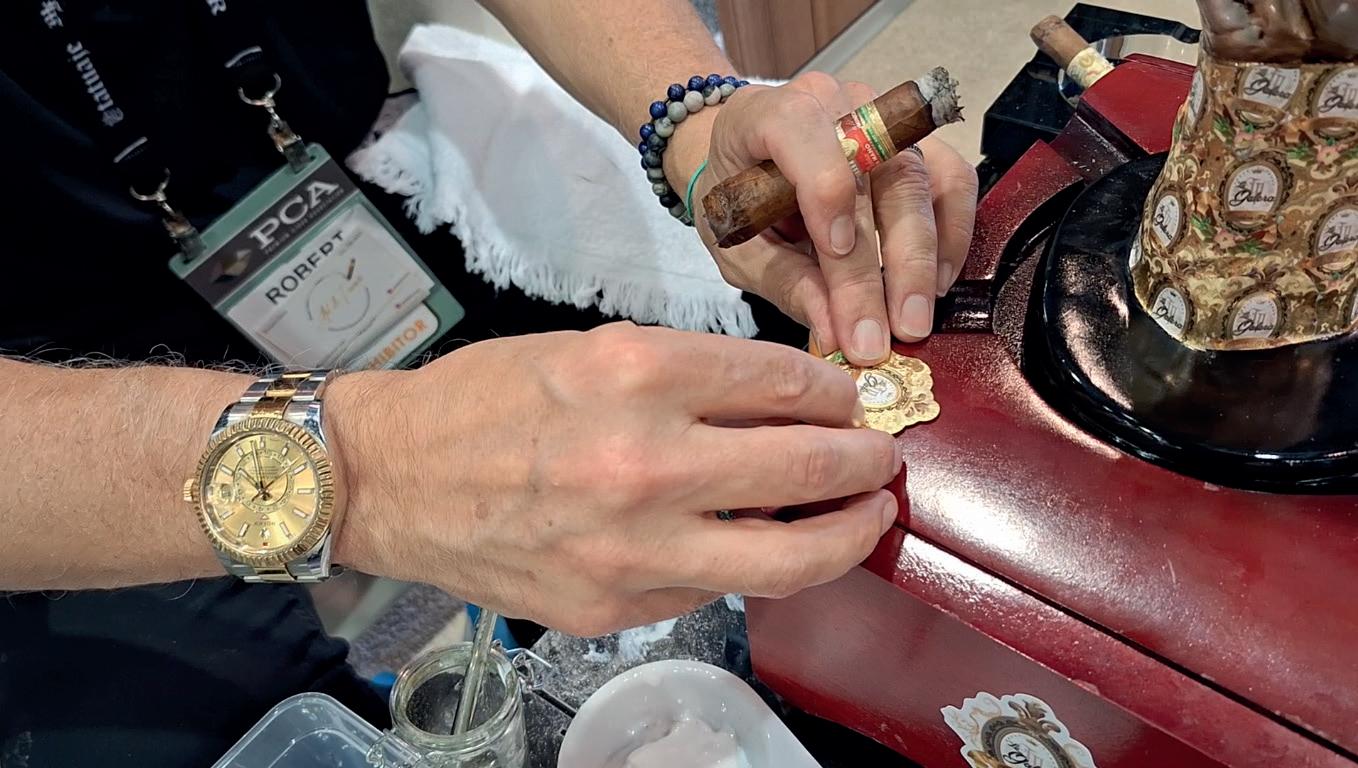
This led to the creation of a home studio and Artdefumar, the Instagram account where it all began, where a sudden flood of followers appeared to enjoy what Robert was doing.
He created pieces on humidors, ashtrays, cutters, and lighters that were a great success among his friends at the Cigar Lounge. Thanks to the industry events he has been invited to, he met and became friends with many of the sector’s leading producers, for whom he has done special work –a list that includes Tony Gómez, Eladio and Emmanuel Díaz, Jorge Padrón, Carlito Fuente Jr., and many other people with whom he slowly connected so that his art would reach such levels that he is now part of the global tobacco family.
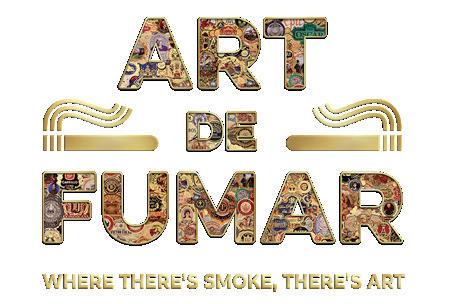
For Robert, the most attractive elements of a cigar band are the textures, the gold applications, and the small medals or coins that many include in their designs. This is something that stands out in the vintage style of the La Perla bands selected to adorn the cover of this Special Edition, pieces that date from between 1889 and 1972, “with majestic details that recall royalty,” Glick shares.
At Art de Fumar, the key to the designs lies in the connection that Robert achieves between each band, pieces that –although they have their own discourse and tell a story on their own– are turned into a single work of art by being brought together as one, “in the same way that the industry becomes a big family.”
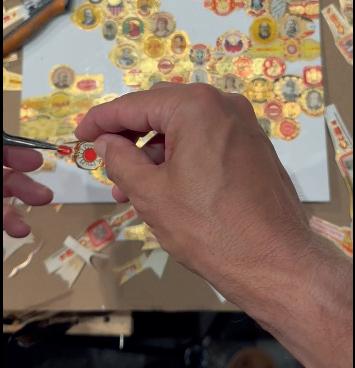
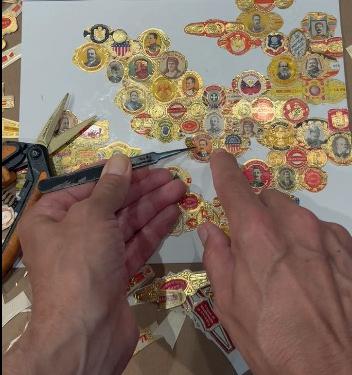
When working on a flat surface –as in the case of this cover– Robert’s goal is to work with as many different pieces as possible, making sure each one has its own visibility and space, while maintaining a balance that respects its identity.
In contrast, when creating a 3D work of art, such as the selection we previously presented in the Anatomy of a Piece of Art section, the bands lose their individual identity and collaborate with the overall piece. “Maintaining the authenticity of the piece on a cover like this is a challenge, because the goal is for each band to be present, but at the same time form part of a work with others.”
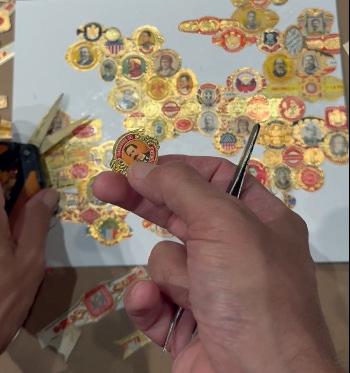
Throughout his years as a smoker and an artist, Robert has had the opportunity to witness the evolution of the premium tobacco industry through the bands of each cigar he has enjoyed. According to his experience, technology has played a fundamental role in these changes.
For him, the technology used to print them, for the die-cutting, and even for cutting them, in addition to the paper and inks used, all make a difference. He points out that there are particular cases like the bands of Arturo Fuente Cigars or the Diamond Crown from J.C. Newman, which, although belonging to the modern era, retain classic and nostalgic designs.
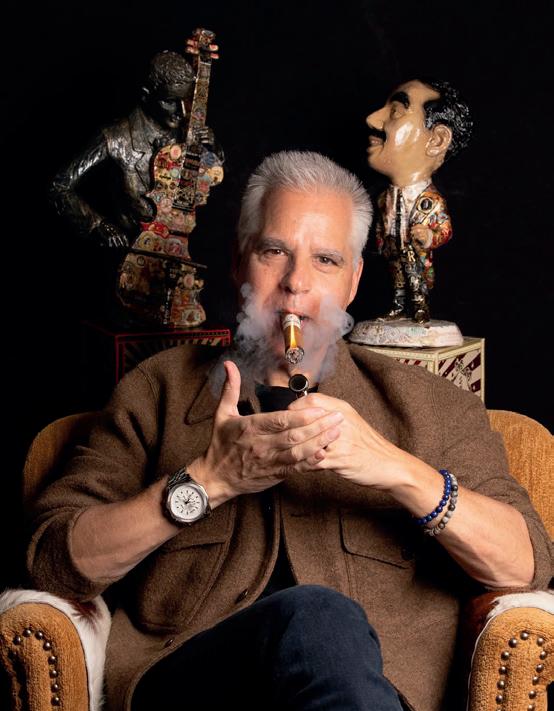
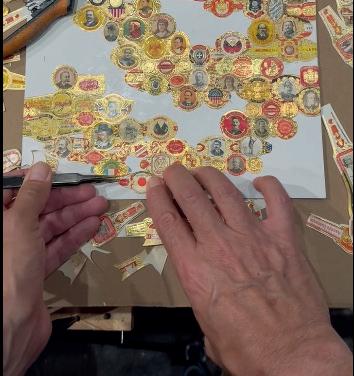
However, in comparison to the bands of La Perla, the textures and paper thickness are very different and make you feel their historical value when you hold them in your hands and work with them with a subtle touch of the fingers. “What I try to do is maintain a balanced mix of old and modern styles when I design, and with that, in addition to expressing something as a whole, I can tell part of the history and evolution of cigar bands over time.”
In this sense, Robert says that the La Perla bands are an example of a style that has unfortunately been lost in the modern era, and for that reason, he especially enjoyed creating this cover. He took the opportunity as a celebration of a past era within the industry, reserving some pieces in his collection of “oils and watercolors” to continue honoring the past through their inclusion in future works of art.
Robert Glick’s studio resembles a small factory with perfect order. Shelves, drawing tables, and workspaces show all kinds of tools and materials, surrounded by dozens of boxes filled with bands sorted by shape and color, as if they were tubes or pots of paint.
In a way, the objects he covers are like 3D puzzles. “The secret is that I take any band and separate the design elements that compose it, which are of various sizes, and organize the pieces. It’s very detailed work, a process that many people would find tedious and that requires special equipment like magnifying glasses, adhesives, tweezers, and so on...”
To achieve perfect designs without borders or blank spaces, Robert uses small clippings from parts of his bands, and during the process, tiny pieces of paper become scraps that invade and dirty the piece. “And instead of using my hand, I intentionally chose to use a paintbrush to clean the surface. With that detail, I create a sensory connection that makes me feel like a painter. It’s the way I express my intention.”
Once the bands are placed, the coating depends on the piece. For example, on an ashtray, he uses a heat-resistant epoxy resin, and on glass pieces, he sometimes adheres them from underneath and then covers them in a different way. He sprays boxes and other objects with matte or high-gloss lacquer, and when he wants the textures to be felt –especially when he’s using bands that contain reliefs and a lot of artistry in their design– he follows a different process.
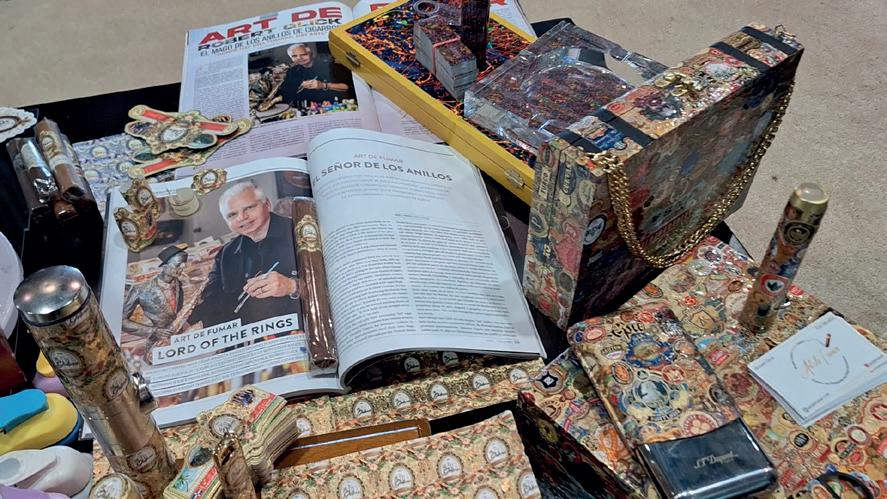
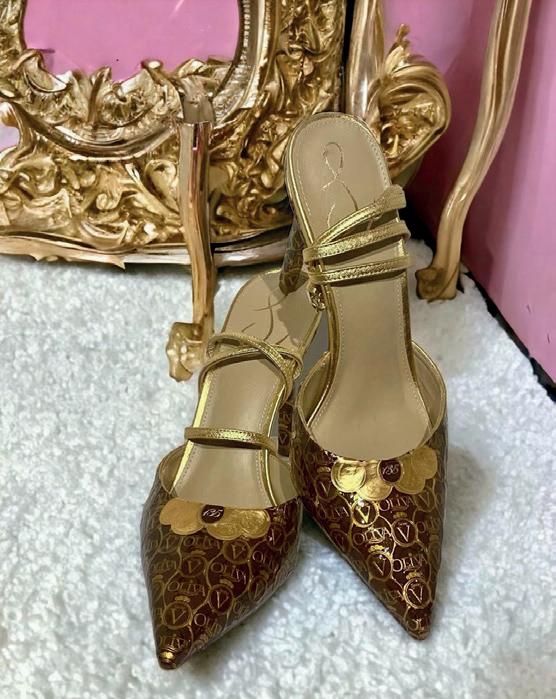

This is the case with lighters and cutters. He protects them so finger oils don’t ruin them, but if he’s working on a table or a chessboard, he looks for a mirror finish, a leveled surface, that allows them to continue being used for their original purpose. “I feel that each band must be in a certain position that I cannot predetermine. It’s as if they were guiding me, and that’s why I sometimes play a game of cutting a piece and waiting for it to tell me where it wants to be.”
Among many other things, he has covered musical instruments, furniture, masks, shoes, hats, posters, paintings, ceramic figures, antique objects, toys, clocks, and even created advertisements for cigar lounges. When asked directly, he responds that each work is like a child, and although he is very satisfied with his trumpets, shoes, and flags, if he had to choose just a few, the chessboard would definitely be among his favorites.
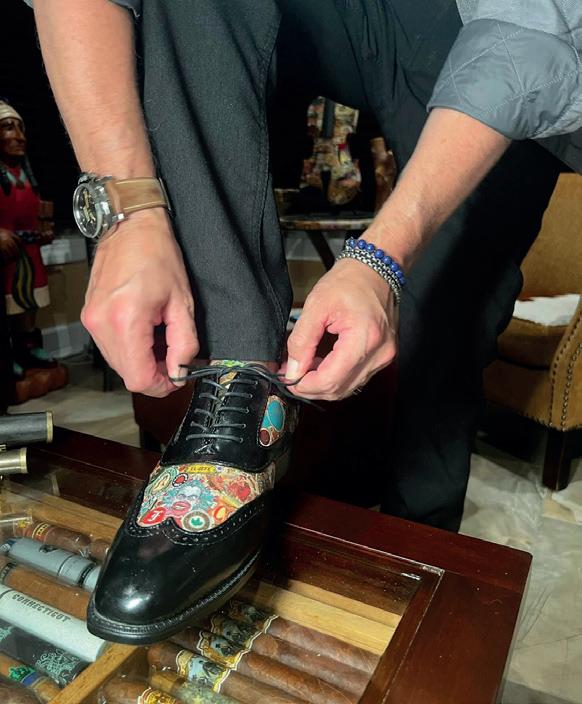
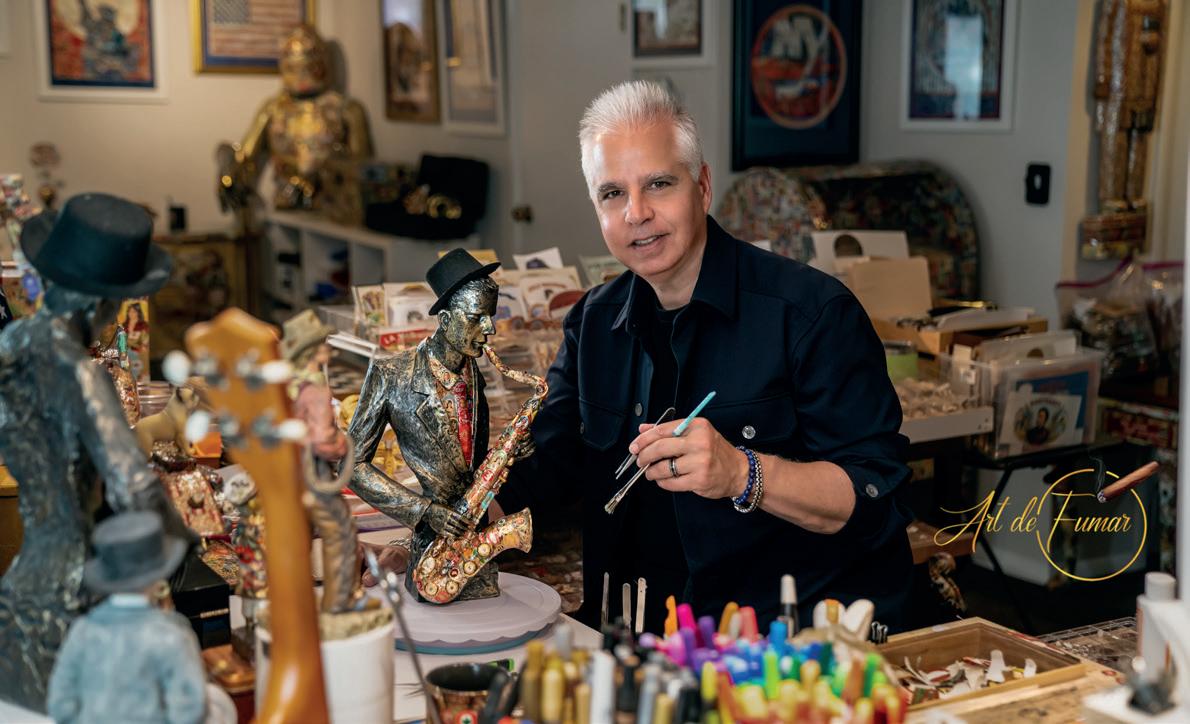
Robert works alone, with the television on in the background, and when he is not in his role as a lawyer, any place is good to develop his art: the waiting room of an airport, or while traveling on a plane... “in hotels, I get up every morning and work on something, because it’s what I love to do.” In fact, it is his habit to “keep six or eight projects going at once,” because each one requires its own time to be analyzed, to make changes, and even to be discarded. “There are pieces that can take me hours, while others need several months.”
Robert Glick is a perfectionist who performs delicate work with a steady hand and a lot of patience. He is an artist whose greatest pleasure is to observe and listen to the impressions his pieces awaken in people, “because there is no greater reward than enjoying what you do when others enjoy it too.”
For him, working with the La Perla bands was a special challenge because of how old they are and the delicate paper, which, beyond its age, is a finer and thinner material. “A special mention must be made of the fact that there are no more of them, and while I work, I also show respect for their history. Speaking of modern bands, they can be obtained very easily, but that possibility does not exist when you work with such old materials.”
Finally, Robert says he is satisfied with the result obtained for this cover, both as a piece of special edition work and for what it represents as a reflection of the industry, of the different manufacturers, as well as of his passion and performance as an artist.
artdefumar.com/ artdefumar

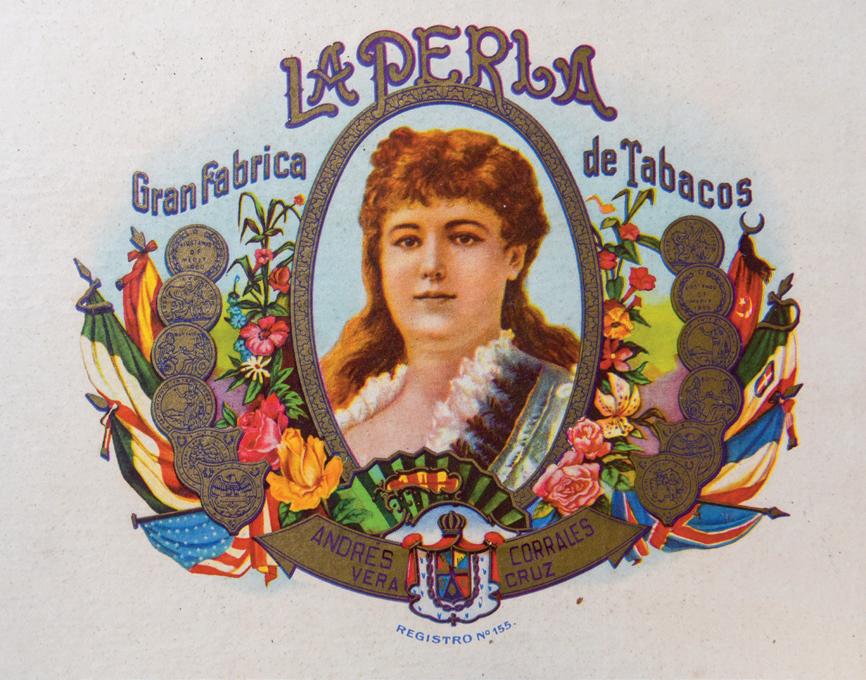
The story of La Perla, one of the emblematic cigar factories in this industry in Mexico and, for the time being, the longest-running, concluded in 2025 –after 127 years–with the sale of its last building in the city of Banderilla, Veracruz. A source of employment and wealth, it survived the Revolution and the labor union movements of the last century, interspersed with its initial boom and the prosperity that World War II brought to the sector.
Four generations of the Corrales family –now with five men named Andrés– and also women, wives, and daughters, were at the helm of the business, whose decline began in the 1950s after a temporary closure and an economic crisis, compounded by the popular consolidation of cigarettes, taxes, and a changing market whose modernization they could not keep up with, as well as the lack of definitive internationalization of their products and other factors, in a country where tobacco now only implies a past.
However, the leading role achieved by La Perla in other times is present in a rich historical legacy that survives in objects, images, and pieces of paper transformed into valuable art: rings, cigar bands, or vitolas that collectors –vitolphiles– have treasured over the years in Mexico and abroad, mainly in Spain.
A representative sample of the final stock of the company’s graphic materials, gifted to Humo Latino by Alejandra Corrales Amezcua, the founder’s greatgranddaughter and the last person in charge of the factory, accompanies this story.
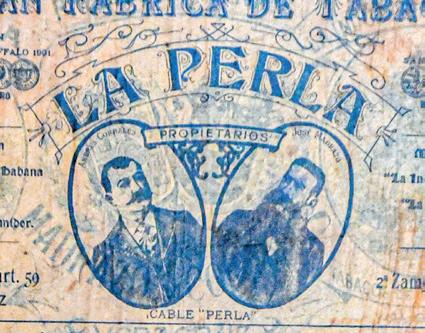
Caption: Fragment of the Madrazo y Corrales
“Current Prices” list, published in December 1899.
José Madrazo, a Spaniard who left Cuba amid the “revolutionary powder keg,” founded the La Unión factory, Madrazo y Cía., in the port of Veracruz in 1871. This factory was a major reference point in the national cigar industry during the last decades of the 19th century. In fact, one author attributes it as being the very first cigar factory in the country.
The company achieved fame after winning prizes at the National Exposition in 1874 and 1875. According to their promotional material, it was the “Only one awarded at the Philadelphia Exposition (1876), and at the Paris Exposition (1878),” in which they described themselves as a “factory of tobaccos, cigars, and a leaf tobacco warehouse.”
For his part, Andrés Corrales Corrales was born in Santa Eulalia (Santolaya), the capital of the Cabranes council in eastern Asturias. He arrived at the port of Veracruz, where he initially established himself, and was a manager and partner in the El Arte factory. If this is correct, La Perla, by Madrazo y Corrales, emerged from
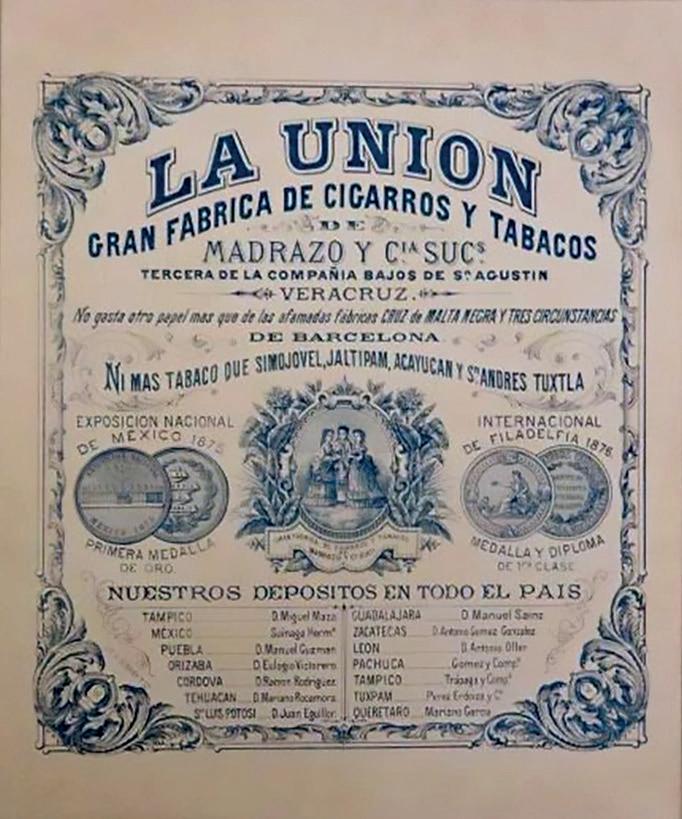
Propaganda in the Primer Almanaque Histórico, Artístico y Monumental de la República Mexicana for 1884 and 1885.
the merger of the aforementioned companies and initially operated alongside its annex, La Industrial Mexicana.
There is also a version that several partnerships participated in La Perla, which were unified in 1902 as Andrés Corrales y Cía. These included the one mentioned with José Madrazo; a second, with Tomás Pereda; a third, with Santos Ortiz and José Somoano; and a fourth in which the same Santos Ortiz participated, as well as José Corrales García, Francisco Corrales Sánchez, and Andrés Corrales Sánchez.
Regarding Corrales Corrales, we know that he died in Banderilla, but it is unknown if his principal partner ever separated from the company. Without documentation to prove it, and besides his discretion, it has been suggested that José Madrazo also worked in the financial sector.
Alberto Arizmendi
On May 12, 1898, the chief administrator of the Stamp Revenue in Veracruz certified registration number 155, corresponding to the La Perla “perilla” cigar factory of Andrés Corrales Corrales, established at 55 5 de Mayo Street in the city and port of Veracruz. Two months later, the Day Book was presented to the same authority, with stamps valued at 7.11 pesos and 144 usable, sealed, and signed pages for the company’s administration.
But he had already registered the name La Perla in 1896, as soon as he arrived in the country from Spain, according to his great-granddaughter Alejandra. This fact is confirmed by the inventory of the
Patent and Trademark Office 1890-1902. (1) Andrés Corrales partnered with José Madrazo in 1897, when the brands Águilas Mexicanas, Regalía Pearson, Flores Americanas, Perlas Finas, and Regalía El Gran Pacífico were authorized in both their names.
On December 1, 1899, Madrazo and Corrales published a list of “Current Prices” headed by the images of La Perla(2) –a “tobacco factory and leaf warehouse”– and La Industrial Mexicana –”Cuban tobaccos and according to consumer preference”– accompanied by coats of arms that, it is understood, correspond to their surnames. They listed 86 regular vitolas (shapes and sizes), plus another 22 for export.

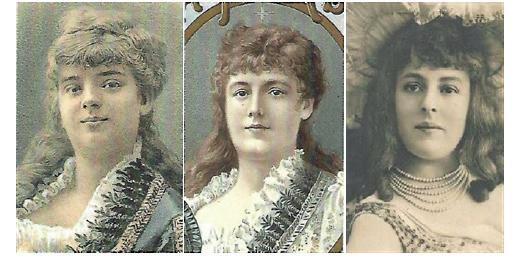
Practically since its inception, La Perla featured the face of a woman as its image, a portrait that has led to various stories and no small number of speculations. She is known as La Muñeca de La Perla (The Doll of La Perla) or La Muñeca de Corrales (Corrales’ Doll). The Valencian vitolphile José Pascual is credited with having identified or linked her to Émilienne André, born in 1870 and renamed Émilienne d’Alençon upon becoming a variety artist in the frivolous Paris of the late 19th century.
Given the number and variety of the brand’s cigar bands and packaging seals on which she appears, it has been written that Andrés Corrales Corrales may have chosen her portrait after meeting her during a trip to Paris, or that they even had a romance. Imagination has also run wild, speculating that the businessman saw her perform, loved her art, and insisted until he obtained permission to reproduce her face as the image of La Perla.
However, our Spanish contributor José Antonio Ruiz Tierraseca, president of the Grupo Vitolfílico del Sureste (Southeastern Vitolphilic Group), dedicated an extensive

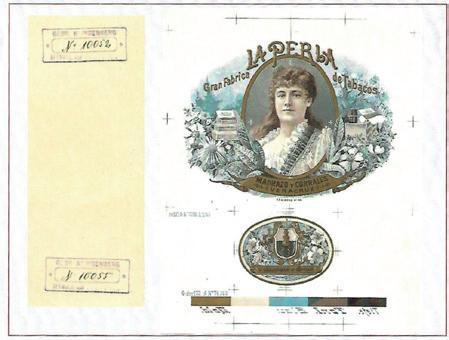
serialized article to solving the mystery. He states that the character appears anonymously on an emerging brand, which would do little to help the artist. There is also a lithographic proof sealed by the Gebr. Klingenberg (GK) house that is estimated to correspond to 1894.
He posits that the original, Full Bloom, was actually created by the lithography company Heppenheimer and Maurer (1872-1885) when Émilienne was still a child. When the commission to create something for La Perla reached GK, they saw the model, liked it, modified it with their style, and that was the result.
“Let’s not forget,” he adds, “that by 1898 everything related to Heppenheimer had dissolved into the American Lith. Co.”
By April 1902, a new poster titled Gran Fábrica de Tabacos La Perla (The Great La Perla Tobacco Factory) included the portraits of the partners, flanked by the gold medals obtained at the Universal Exposition of 1900 in San Antonio, Texas, and at the PanAmerican Exposition held in Buffalo, U.S., a year later. Announcing themselves as leaf tobacco warehousemen and tobacco manufacturers, they presented their annexed brands La Ilusión and La Camelia.
The price list, per thousand, included 99 vitolas for which they specified the container and its capacity, as well as the approximate weight in kilograms. They also detailed the cost for placing bands, shipping costs, and other charges, as well as the presentation of their products with lead foil and bands; bands only, and in bundles. The address of the establishment was listed as 27 Playa Street,(3) in addition to a warehouse at 1 Lerdo Street.
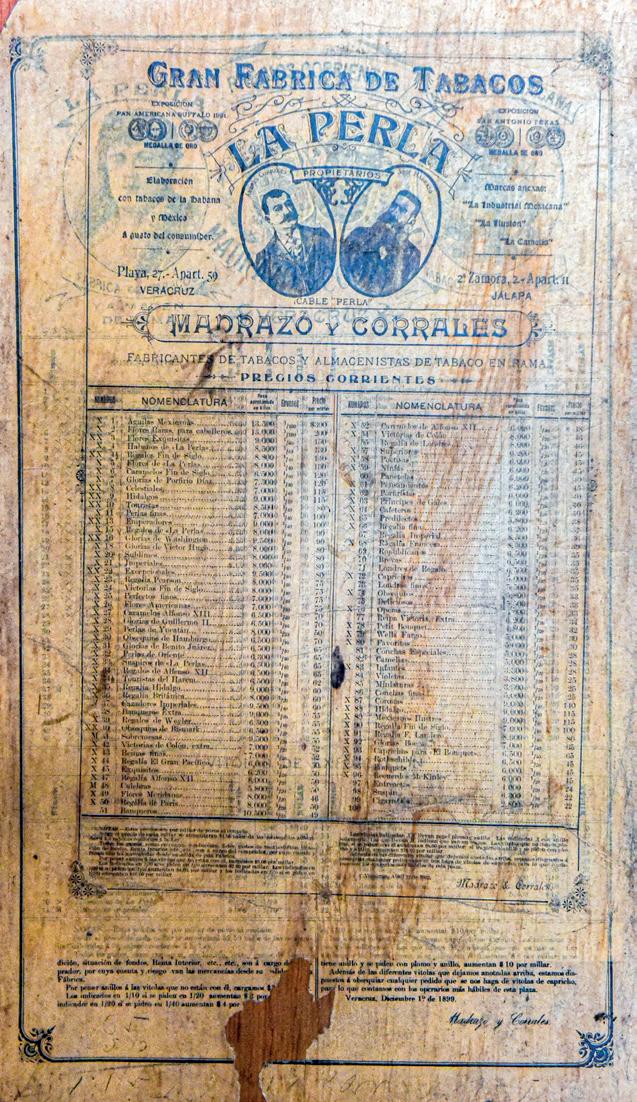
“Current Prices” list, 1899.
Over the years, La Perla featured bands on its products under different company names: A. Corrales, Andrés Corrales, Madrazo y Corrales, Madrazo y Corrales Sucr., Andrés Corrales y Cía., and Andrés Corrales, S.A. These names corresponded somewhat to the company’s evolution and changes in its ownership structure.




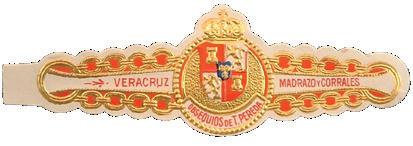
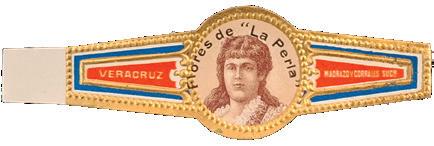
Regarding their provenance, the bands from the earliest period originated with the German lithography companies Gebr. Klingenberg (GK) and Hermann Schott (HS). They were later printed in the U.S. by Consolidated Lithographing Corporation (C), at Galas de México in the capital city, and finally at the family’s printing press in Xalapa, where a Chandler printing machine and a Thompson-style diecutting machine were used.
Of the jobs commissioned from GK, an entry in the Administration Book dated May 17, 1899, records a payment of 668 pesos. Below are some samples corresponding to different eras:
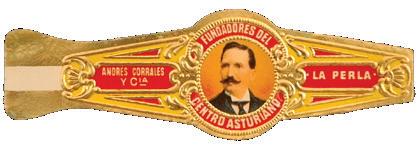
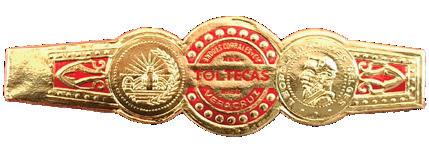





La Playa Street in the port of Veracruz, at the beginning of the 20th century.
By then, they had also put a workshop into operation in the city of Xalapa, the state capital, at 2 Second Zamora Street. It is also recorded that in the same year, the construction of a full-fledged factory was completed at 82 of the old Colón Street, now Úrsulo Galván. (4) They maintained the slogan that appeared on the first poster: “Ready to give any requested order for fancy vitolas, for which we have the most skilled laborers in this area.”
It was shortly before 1907 that La Perla would move to Banderilla(5) –a small town, an “unimportant” municipal seat, but close to Xalapa and located on the main road between the port of Veracruz and Mexico City, where, since 1892, a station of the Interoceanic Railway operated, connecting it with the rest of the country.(6) Here, a building specifically designed for the factory was also constructed, at 92 of the current Benito Juárez Street.
The factory on the old Colón Street, now Úrsulo Galván, in Xalapa, Veracruz.

Certificates 11,242 and 11,243 of the Patent and Trademark Office reserved the names or slogans “Victorias de F. I. Madero” (Victories of F. I. Madero) and “Obsequios de F. I. Madero” (Gifts of F. I. Madero) –alone, or combined with other words– on May 18, 1911, in favor of Andrés Corrales y Cía., as trademarks to distinguish all types of manufactured tobaccos, especially cigars.()

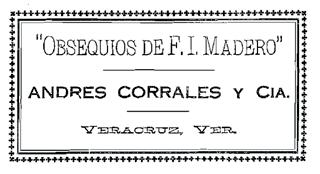
They could be used on bands and labels, engraved or represented on boxes and packaging, with any size, font, alignment, and colors, including metallics. Ultimately, they could be used in any way deemed best to promote a product and evidence its origin.

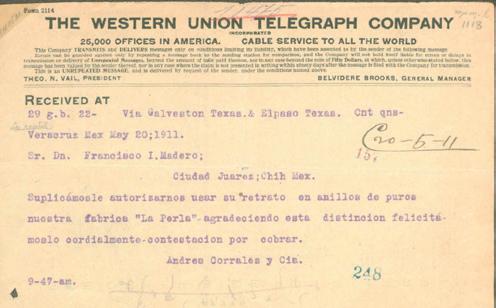
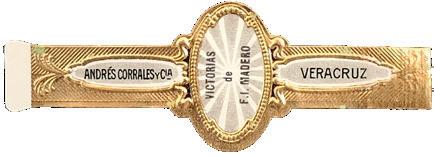


The first cigar bands appeared without the President’s image.
On May 20, a telegram was sent on behalf of the company to Ciudad Juárez, addressed to Francisco I. Madero, requesting authorization to use his portrait on the La Perla cigar bands, and cordially congratulating him(). This occurred days after the capture of Ciudad Juárez, which forced the resignation of the dictator Porfirio Díaz on May 25.
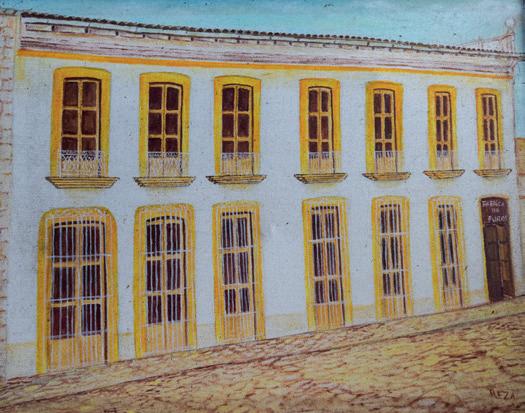
This is confirmed by the attendance of its worker representatives at the First Congress of Workers of the Tobacco Industry in Mexico City in July 1906. (7) This was a time of growing social movements, which in this case favored the registration of the Tobacco Rollers Union of the La Perla factory by the Central Board of Conciliation and Arbitration, subordinate to the then-Syndicalist Federation of the Jalapa Region.(8) ***
Between 1911 and 1919, the area was affected by the revolutionary movement,(9) suffering the disturbances caused by carrancistas and zapatistas, joined by the hacendados’ “white guards,” until the Federal Army of President Venustiano Carranza finally managed to pacify the area.(10) In any case, the tobacconists included cigar bands with characters from one side or the other, which allowed them to navigate the changing situation.
The Banderilla Tobacconists Guild was one of the clubs supporting Madero.
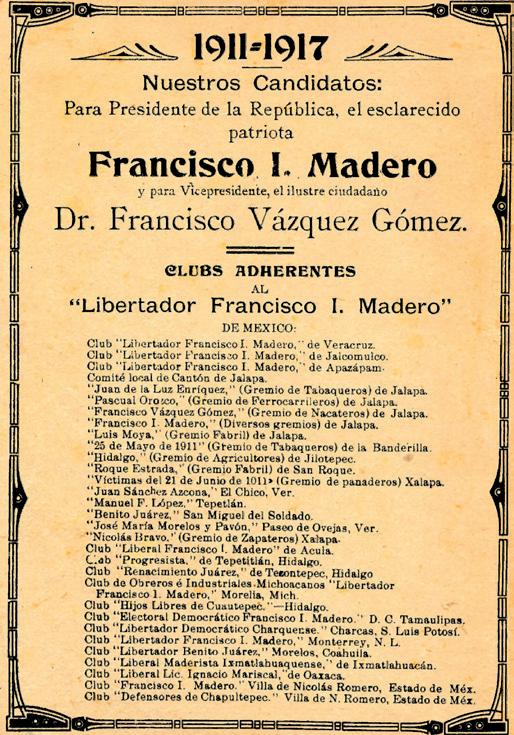
During the first two or three decades of the 20th century, Madrazo y Corrales –and later Corrales y Cía. Sucrs.– wholly absorbed different brands registered by other entrepreneurs, such as La Camelia. They also gained control of the La Ilusión brands from Veracruz, which were owned by Maus y Oropesa. They went on to purchase the brands of Bernabé García; the Peláez



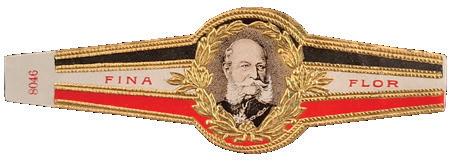
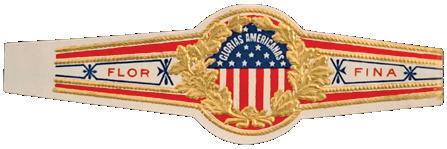

factory from Puebla; the La Esperanza factory from Teocelo; and around the 1950s, they acquired the workshop and brands of El Toro from Alfonseca Sucrs. in Xalapa.
The obtained collection also includes cigar bands corresponding to Alonso y Cía. from Xalapa; Flor Fina –without further reference– from Veracruz; Juan O. Roux y Cía.; La Competencia; and others that remain unidentified. The following sampling excludes those from major companies, which are addressed separately.





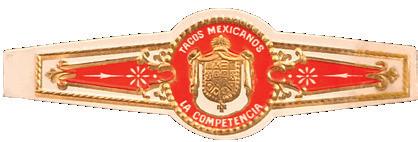
Although cigarette factories had existed in the country since the mid19th century, it was around 1910 that consumption became so widespread that companies like El Buen Tono were producing more than one hundred million packs a year. The technological development that accompanied the use of machinery allowed the multinational British American Tobacco (BAT), which entered Mexico through the Compañía Manufacturera de Cigarros El Águila, to almost completely dominate the market by 1928.(11)

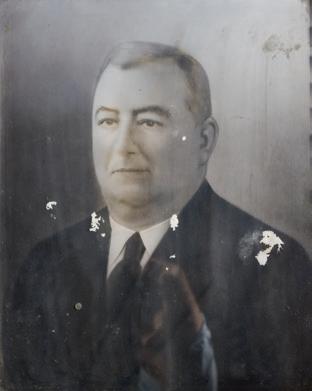
Nevertheless, during the 1920s and 30s, the improvement of Banderilla allowed for industrial development, and La Perla’s production was high, as it not only supplied the national market but also engaged in export. Andrés Corrales Corrales had acquired the entirety of the company, and over the years, he had also bought and absorbed many others, remaining at the head of the business until his death in 1935.
Propaganda from El Buen Tono, the cigarette factory that began the popularization of cigarette consumption.
In the book Monografía Descriptiva de la Ciudad de Veracruz. Apuntes históricos, geográficos, estadísticos, guía práctica para el viajero y el hombre de negocios (Descriptive Monograph of the City of Veracruz. Historical, geographical, statistical notes, practical guide for the traveler and businessman) (1900) by the editor Francisco J. Miranda, the Professional Directory (Commerce, industries, authorities, public offices, railways, maritime commerce, etc.) provides a list of tobacco companies.
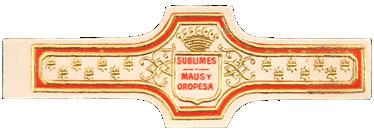



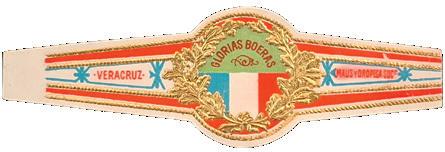

Among them, La Ilusión, owned by Maus y Oropesa, S.C., is advertised as a factory, leaf tobacco warehouse, and manufacturer of its own brand of cigars for export. Located at 22 Vicario Street in Veracruz, a “view” of the building’s façade is shown. Its absorption by Andrés Corrales y Cía. removed this company from official documents at the end of the first decade of the century.
On some cigar bands used by La Perla, the names of Maus y Oropesa were suppressed or crossed out.






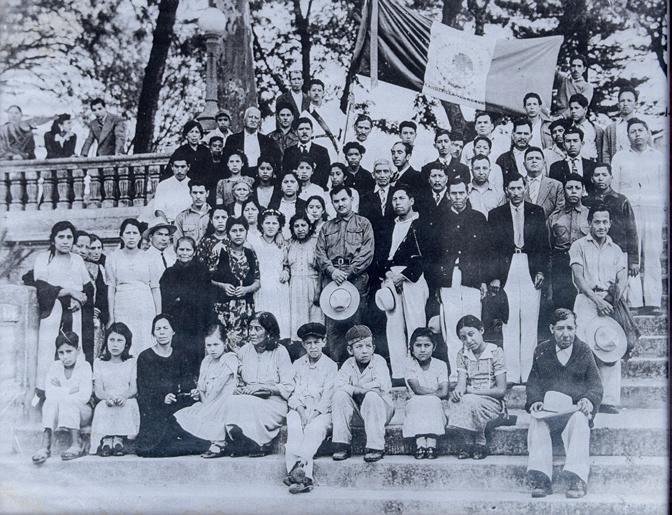
As a product of his marriage to the Mexican Clara Sánchez, their only son, Andrés Corrales Sánchez, took charge of La Perla. Since World War II was also a period of prosperity,(12) the factory developed on a large scale: “Large quantities of quality Habanos were sent to the north of the country, and likewise, by rail, to Mexico City, as well as to private individuals in Oaxaca, Mérida, and
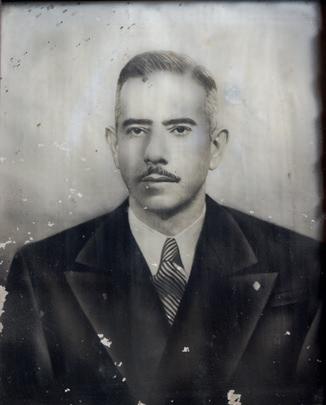
abroad.” The raw material was obtained in El Valle Nacional, Oaxaca, and San Andrés Tuxtla, Veracruz, thanks to exclusive growers who guaranteed the quality of the tobacco.(13)
Rail cars full of cigars went to the northern border, where the largest buyer was the U.S. military. La Perla was a source of employment that even led to the migration of workers, but this phenomenon lasted for a short time, as unionists took the opportunity to demand improvements and progressively increase their benefits, so much so that between 1940 and 1950 they maintained a constant threat of a general strike that finally occurred in 1951, when the establishment remained closed for a year. (14)
Records show that Corrales Sánchez, a member of the Chamber of Commerce of Xalapa, stated that despite his benevolence toward his workers, he lacked the economic means to modify the collective bargaining agreement and satisfy their “excessive demands.”(15)
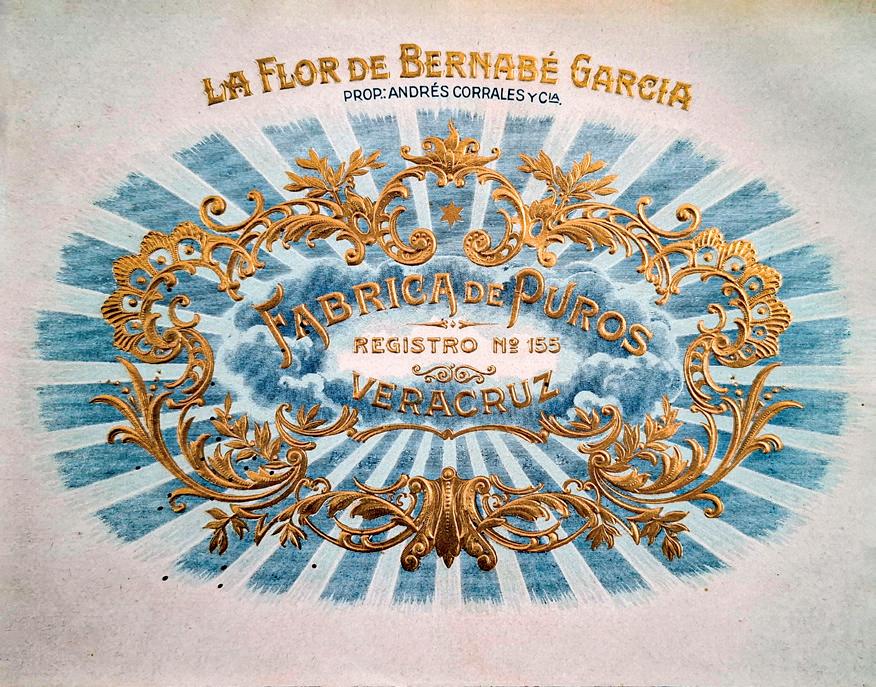
This company operated under different denominations or trade names: between 1885 and 1892, B. García y Cía.; from approximately 1893 to 1903, Bernabé García y Cía. Sucesores; and from 1904 onward, B. García or simply García, as both names are found indistinctly on the wings of its cigar bands. Its primary brands were La Rosa de Oro and La Flor de Bernabé García.
Based on an analysis of its vitolario (cigar portfolio), it has been written that the founder must surely have been
Spanish and of Asturian origin, given the texts found on the bands, such as Mineros, Flores de Asturias, and Glorias de Pelayo, among others.
Although this company predates La Perla, it eventually became its property, as confirmed by a pair of lithographic paper slips from the La Flor de Bernabé García brand, which bear the text “Prop.: Andrés Corrales y Cía.” and include the registration number 155.
But the businessman’s life was brief, and in 1952, his wife, Julia Elena Correa Bretón, or Doña Julita, took the reins and integrated a new company: Andrés Corrales, S.A., with her children Andrés, Julia Elena, and María Concepción, as well as her nephew Ignacio Hinojosa Correa. (16) However, after its reopening, La Perla never flourished again: “A new, more severe economic crisis was generated between 1965 and 1968, when it almost disappeared. This situation, stemming from a lack of government support, transformed it into a traditional microbusiness.”(17)
When Doña Julita passed away, in 1991, her son Andrés Corrales Correa took over the factory. After experiencing a “good” period during the sixties and seventies, with warehouses full, its final decline
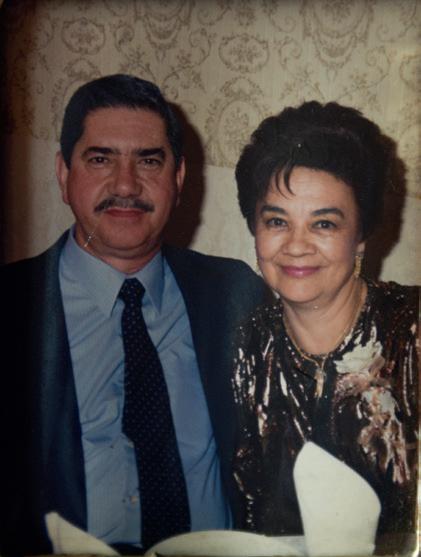
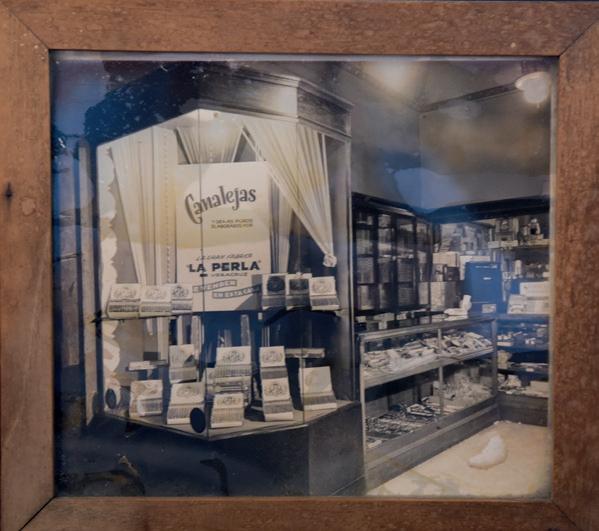
began in the following decade. The sale of its products decreased, and they were left only with the national market, where some distributors, like Casa Petrides, located in the Historic Center of Mexico City,(18) were promoting its flagship product: Canalejas.(19)
The account of this final era is provided by Lucía Alejandra Corrales Amezcua, the founder’s great-granddaughter, who, starting in 2007, was responsible for the family business after her father’s death. She explains that they simply stopped being competitive against other companies with more financial and commercial resources that were able to dedicate themselves to export.
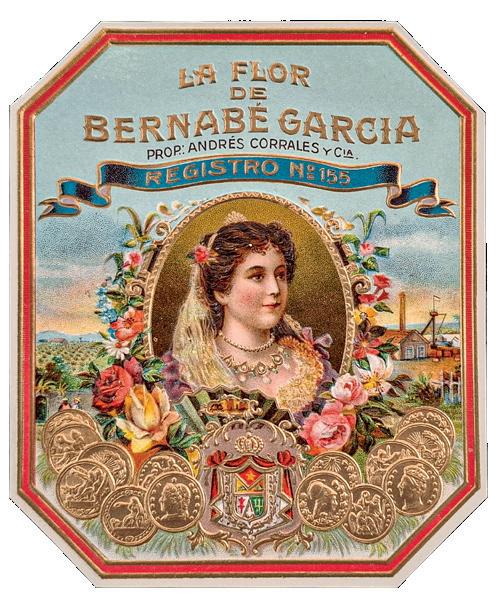
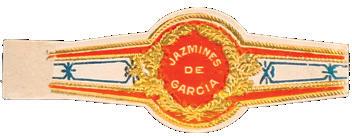



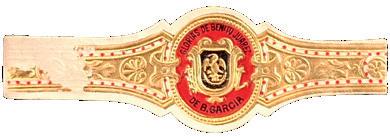

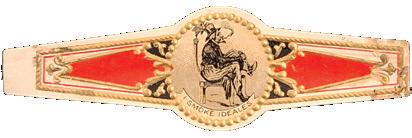





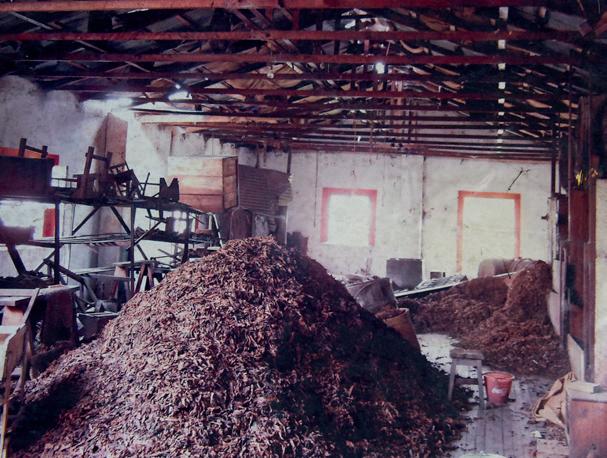

Covering payroll forced her to reduce work hours to practically a half-shift, and this was compounded by the seniority of many cigar makers, who retired around 2012 after 40 to 50 years with the company. By buying less raw material, they also hurt the growers, from whom they primarily obtained the Sumatra variety, so she recalls her father getting tobacco from regions other than Los Tuxtlas.
On the other hand, she decided to keep her job as a professor and dedicate her free time to the factory. “Even in my dad’s time, the business wasn’t profitable. For years, he had owned a printing press in downtown Xalapa and used it to get resources to keep the company going, practically as a family memory.”
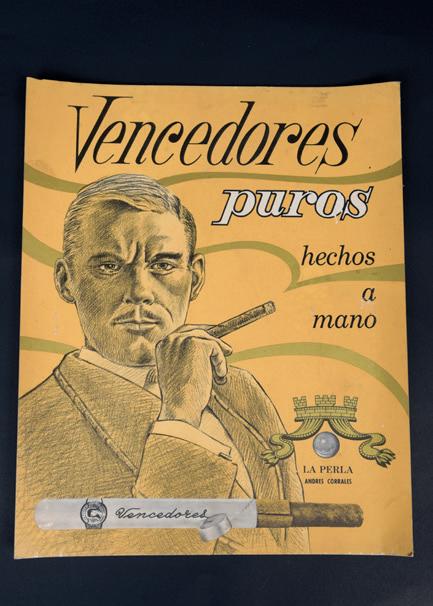
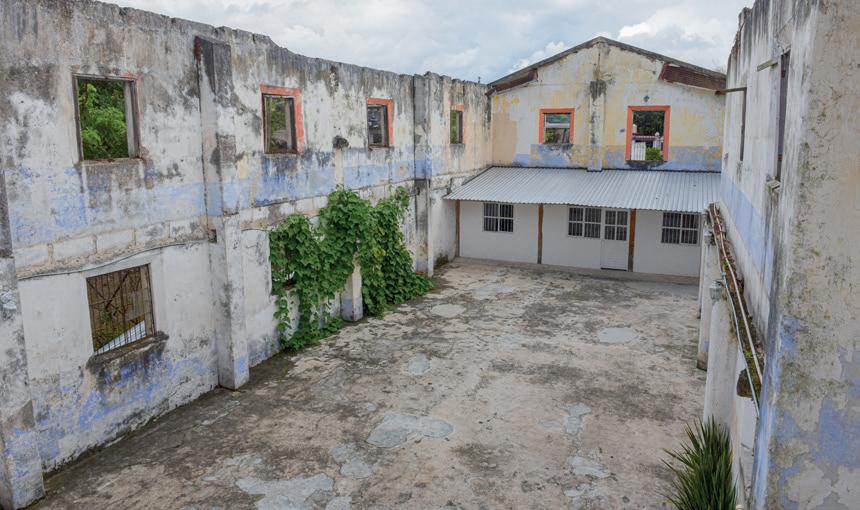
Although some of the retired cigar makers agreed to work on the side to earn extra money, the number of employees gradually decreased, and in the end, there were only four rollers, one packer, and an office assistant. The last sale to a distributor was in April 2013, shortly before it closed, although it should be noted that in the following years, small batches were sporadically made for weddings and other social events.
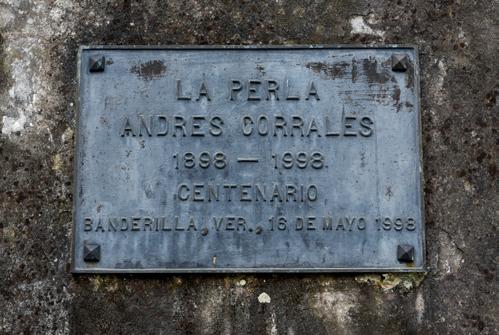
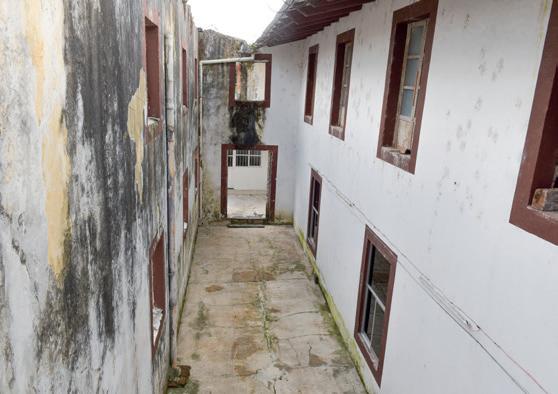
Despite the difficulties, Alejandra remembers that in return, she gained some joys, as happened at the Banderilla Fair, where they broke the record for The Largest Cigar in the World with a piece more than 26 meters long. Another, when she was younger, was the celebration of La Perla’s centennial, which took place on May 16, 1998 –four days after the official date– and included the unveiling of a commemorative plaque at its facilities.(20)
1. DIARIO OFICIAL, Volume LXI, no. 13, July 15, 1902, p. 132. Ministry of State. Office of Development, Colonization, and Industry. Patent and Trademark Office, Inventory of registration by progressive numbering of trademark files corresponding to the law of November 28, 1889 of the Ministry of Development, Second Section, received July 22, 1903. The registration file for La Perla, number 1673, consists of 14 pages.
2. The iconic image of the brand appears, with a woman whose identity is a separate topic.
3. The 8th street of La Playa –currently Landero y Coss Avenue– replaced Calle de Los Cuernos (Horn Street), known as such between the 17th and 19th centuries for housing the butcher shop and slaughterhouse, where the horns of the slaughtered animals were piled up. Data and photograph from 1900, in Veracruz Antiguo, [https:// aguapasada.wordpress.com/2013/12/06/nueva-veracruzcalle-de-los-cuernos/](https://aguapasada.wordpress. com/2013/12/06/nueva-veracruz-calle-de-los-cuernos/) Photograph from 1867, at [https://www.pinterest.com.mx/ pin/412642384590904258/](https://www.pinterest.com.mx/ pin/412642384590904258/)
4. ROMERO RAMÍREZ, Raúl, 1999. “El papel informal en el desarrollo de la región de Banderilla, Veracruz (1940-1994),” in Vázquez Palacios, Felipe R. (Coord.). Las interacciones sociales y el proselitismo religioso en una ciudad periférica, CIESAS, Mexico, pp. 19-62.
5. GONZÁLEZ SIERRA, José. Monopolio del Humo. Universidad Veracruzana, Center for Historical Research, Institute of Humanistic Research, 1987. According to sources, it is not possible to document the exact dates of the factory’s transfer to Banderilla or the closure of its headquarters and/or branches in both the port of Veracruz and Xalapa. It is sufficient to note that in various official documents La Perla appears at one or another location between 1913 and 1930.
6. ROMERO RAMÍREZ, Raúl. Op. Cit.
7. MELGAREJO VIVANCO, José Luis. Breve historia de Veracruz. Universidad Veracruzana, Xalapa, Veracruz, 1960. pp. 232-233.
8. VELASCO FUENTES, María Trinidad. Actores locales y reforma agraria en el centro de Veracruz. Un análisis sociopolítico, 1915-1941. Universidad Veracruzana, Institute
for Social Historical Research, Master’s Thesis in Social Sciences. Xalapa, Veracruz, June 2020.
9. On April 22, 1911, the revolutionary faction led by Cándido Aguilar confronted federal forces and took the town of Banderilla, where they destroyed the Interoceanic Railway line. President Francisco I. Madero granted the individual the rank of brigadier general, and in his time, President Venustiano Carranza granted him that of commander of the Mixed Division. (DE LA PAZ REYES, Karina. Veracruz, pionero en la Revolución Mexicana, in Universo. Universidad Veracruzana: [https://www.uv.mx/ prensa/reportaje/veracruz-pionero-en-la-revolucionmexicana/](https://www.uv.mx/prensa/reportaje/ veracruz-pionero-en-la-revolucion-mexicana/)
10. MELGAREJO VIVANCO, José Luis. Op. Cit.
11. GONZÁLEZ SIERRA, José. Op. Cit.
12. As with many other factories, the legend circulates that the British Prime Minister, Sir Winston Churchill, came to try their cigars.
13. ROMERO RAMÍREZ, Raúl. Op. Cit.
14. VELASCO FUENTES, María Trinidad. Op. Cit.
15. Ibid.
16. FERNÁNDEZ MANOVEL, José Luis. El Prestigio de una Marca: La Perla, de Andrés Corrales, in Revista de la Asociación Vitolfílica Española (AVE), no. 100. Madrid, Spain, March-April 1966. The author cites as a source for some data Doña Julita and her daughter Conchita, whom he interviewed personally.
17. ROMERO RAMÍREZ, Raúl. Op. Cit.
18. Casa Petrides, owned by Tracíbulos Petrides, was on the current Madero street, but his brothers Zenón and Nicolás established Hermanos Petrides on República de Uruguay street. “It was a time when the Historic Center of Mexico City had a unifying character: ‘There were up to two tobacconists per block, but also many taverns, bars, and restaurants.’” MARMOLEJO, Roberto, in: Foropuros: [https://www.foropuros.com/threads/la-favoritatabaquer%C3%ADa-de-ciudad-de-m%C3%A9xico.9475/] (https://www.foropuros.com/threads/la-favoritatabaquer%C3%ADa-de-ciudad-de-m%C3%A9xico.9475/)
19. Various La Perla bands allude to José Canalejas Méndez (1854-1912), a Spanish liberal lawyer and politician who was assassinated while serving as President of the Council of Ministers.
20. Un siglo de la Gran Fábrica La Perla de Tabacos, in Diario de Xalapa, Friday, May 29, 1998.
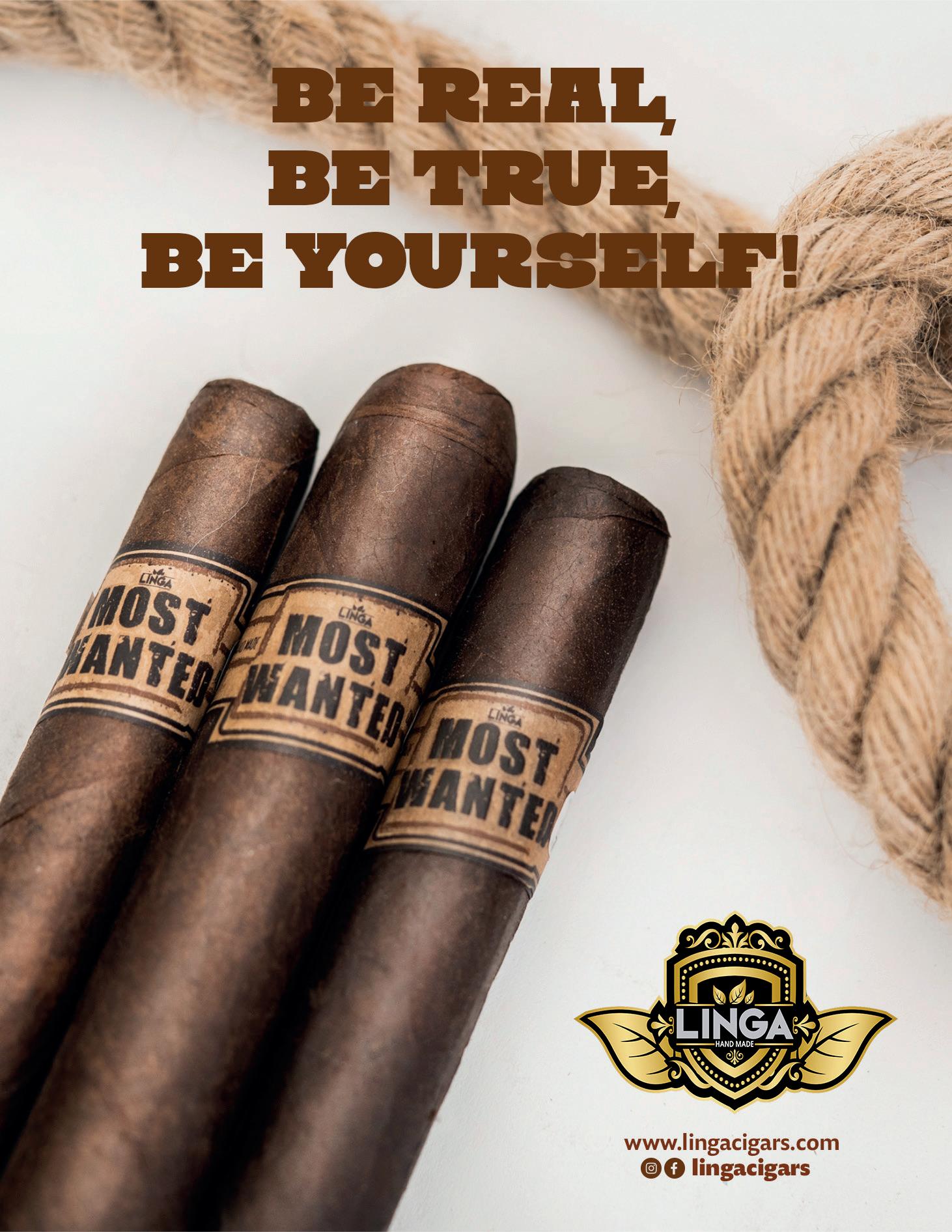
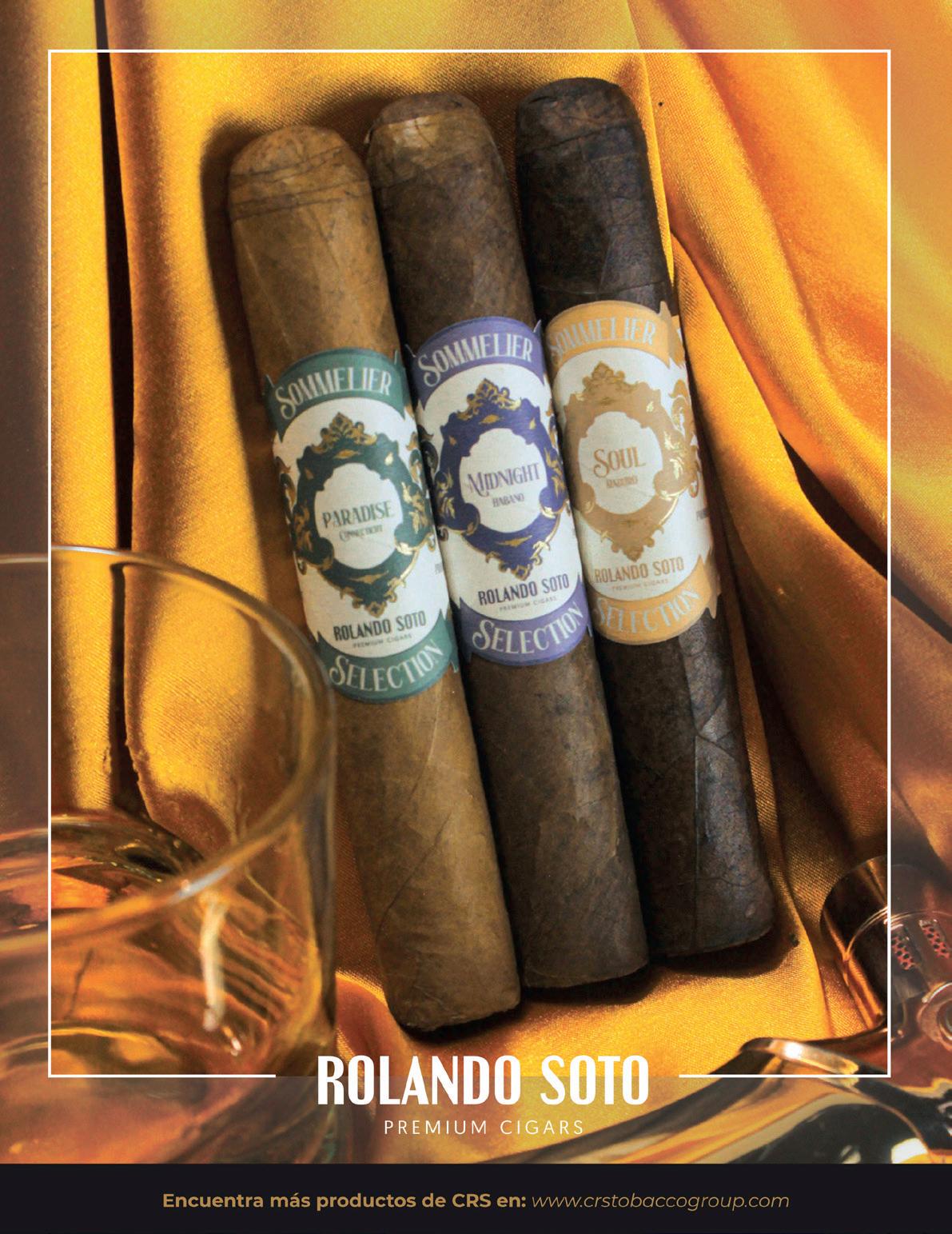
Since 2017, the Sisters of the Leaf Global Movement has been reshaping the cigar world, paving the way for a new era of empowerment and recognition for women. Founded by the visionary leadership of Dr. Anastasia Psomiadi, this movement has redefined the cigar world, making it a space that acknowledges and highlights women’s contributions.
Central to its mission is the empowerment of women, achieved through education, promotion platforms, mentorship, selfexploration, and fostering personal growth. The Sisters of the Leaf Global Movement represents a transformative shift, breaking barriers and opening doors to new opportunities for personal development and network building for both women and men.
Supported by its esteemed Advisory Board and Chief Business Development Officer, Lefty Karropoulos, the SOTL Global Movement inspires individuals, as well as local, national, and global associations, to develop similar initiatives and drive impactful change in the cigar industry and beyond.
Key Initiatives and Impact
· Education Through SGM Maestro School of Certified Cigar Sommeliers:
Education is central to SGM’s mission, represented by the Certified Cigar Sommelier Tobacconist (CCST) program. In partnership with Tobacconist University, this comprehensive certification provides participants with in-depth knowledge of cigars, equipping them with valuable skills, enhancing their expertise, and opening doors to new opportunities in the cigar industry. It empowers both women and men to excel and thrive professionally while deepening their appreciation of cigar culture.
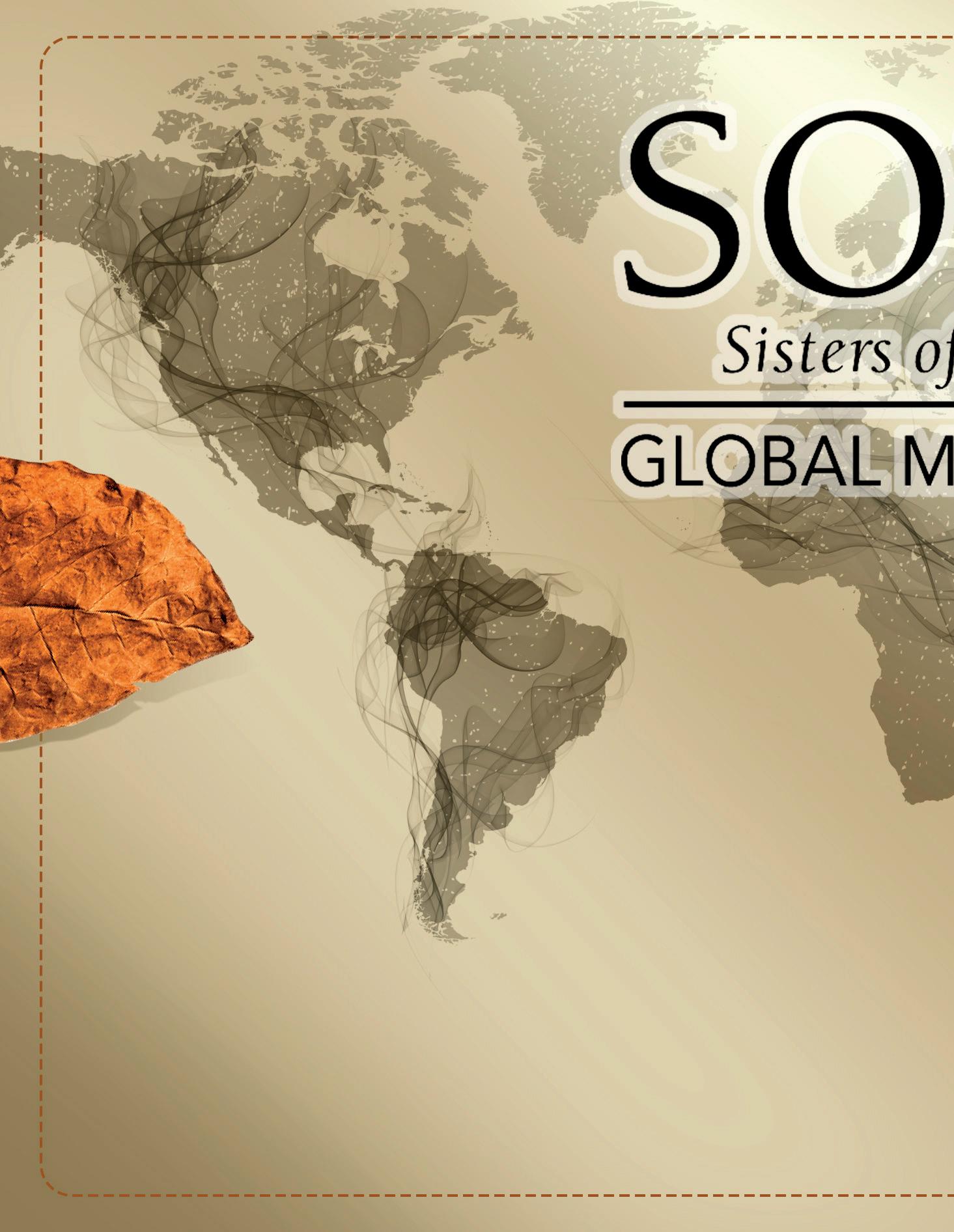
· The SGM Maestro School of CCST Alumni:
The mission of the SGM Maestro School of CCST Alumni is to build a vibrant community of graduates, providing a platform for networking, knowledgesharing, and professional growth. Through its collaboration with Humo Latino, SGM will showcase interviews with Alumni members, available in both Spanish and English. These stories highlight their journeys, achievements, and passion, serving as an inspiration for aspiring sommeliers and contributing to the global appreciation of cigar culture.
· SGM - Women-Friendly Cigar Destinations:
SGM is transforming cigar lounges, shops, resorts, bars, restaurants, clubs, and more with its Women-Friendly Certification, setting a new standard for respectful and welcoming environments. The vision is to build a global network of SGM Cigar Destinations that uphold

these values and elevate the quality of cigar culture. Certified venues must meet specific criteria, such as offering cigars from women-owned brands, training staff, hosting educational events, and collaborating with local organizations.
· Global Dialogues and SOTL Roundtables:
For the first time in cigar history, within the principles of social responsibility and business ethics, the SOTL Global Movement initiated a groundbreaking international dialogue to present women’s stories, their perspectives on the stereotypes they have faced, potentials, achievements, and aspirations. Since 2019, the movement has organized 11 “Changemakers” Roundtables, conducted in-person, virtually, and in hybrid formats, creating a significant social impact and fostering meaningful influence in the cigar world and beyond.
· Rum Festivals Collaboration: Through a partnership with The Rum Lab, SGM provides free platforms and booths for cigar brands and lounges, bridging the gap between cigar and rum audiences at Rum Festivals across the USA. This collaboration, initiated in 2023, engages enthusiasts through VIP pairings and exclusive events, further strengthening the connection between the rum and cigar communities.
· Supporting Local, National, and Global Initiatives: SGM has mentored women and supported various initiatives, uplifting voices, empowering communities, and offering ideas, models, and access to networks. It fosters personal growth, helps set new goals, and helps initiatives and projects to succeed.
Dr. Psomiadi, as a social innovator, academic, and entrepreneur, has redefined the cigar world by integrating social psychology and sustainability methodologies into the movement’s framework. Her vision extends beyond cigars, emphasizing connectedness, the social health of cigar enjoyment, and the broader impact of every initiative that reflects respect, self-growth, and social development.

Dr. Anastasia Psomiadi
I would like people –especially those in the cigar industry– to know these individuals. Even if they decide to shorten my text, since they are humble, I want their essence to remain. If someone asked me to describe them in one phrase, I would say: “Too good to be true.”
The word that best characterizes them is ETHOS –a Greek word that means the inner character, the moral essence, and the integrity that guide a person’s actions. It is not something that can be taught; it is something one is, expressed through genuine kindness and quiet strength.
I am personally blessed that our paths have crossed, not only in the cigar journey but on the journey to self-actualization. Everything we love and dedicate our time and resources to –whether it is cigar culture, the SOTL Global Movement, or Humo Latino– becomes a vehicle for growth, a tool for becoming more open, more tolerant, and more resilient.
Because in the end, even the obstacles we face are blessings. They reveal our potential, show us who we can become, and help us discover ourselves.
The world needs people and organizations like the Humo Latino team –because with their ETHOS, the world becomes a better place to live, to love, and to thrive.
In one sentence, what is Humo Latino?
It is the showcase where, through the experience of a team specializing in journalism, small and medium-sized premium tobacco, accessory, and related brands can share their stories with Spanish-speaking and global aficionados.
How did it all begin?
Humo Latino started from the curiosity of a couple of journalists who were premium tobacco aficionados and initially entered the industry with a cigar shop. There, they met and befriended local producers (Mexico), which sparked the idea of creating a space to promote the tobacco culture, not just in Mexico, but across different parts of Latin America, because “tobacco is spoken in Spanish,” the slogan with which it began. They were convinced that since the main tobacco-producing countries are Latin, news and information about tobacco should follow that path. Naturally, expansion to the United States and Europe followed.
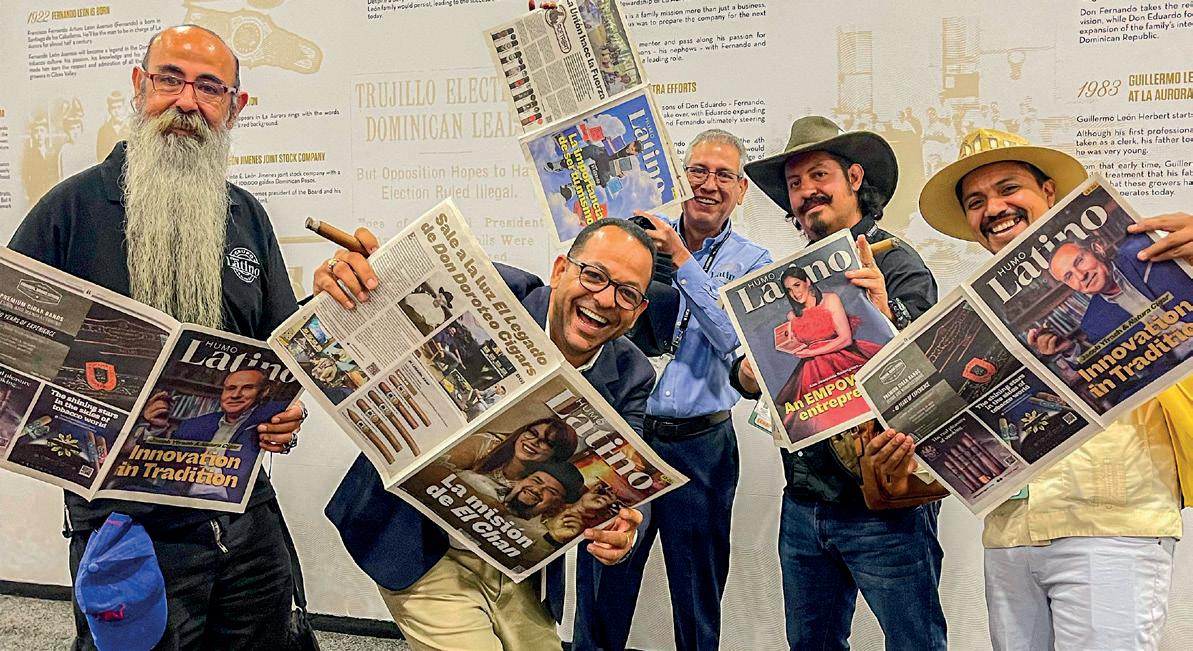
What is the core philosophy, mission, and vision guiding them?
Mission: To disseminate information, knowledge, stories, brands, images, and reflections through quality interviews, news, and articles regarding tobacco, cigars, and their production and commercialization process.
Vision: To be the best specialized magazine for disseminating information about cigars and tobacco in both Spanish and English, offering quality content and reliable information in every publication to achieve international recognition.
What are the next steps? What do you dream of, build, or hope to change in the Cigar World?
We want to continue growing, opening new spaces to bring exposure to the brands that have trusted us. We started with one digital magazine; now we have two digital editions (the Magazine in Spanish and Global in English), a
quarterly print edition (Humo Latino Dominicana) and a special English print edition (Humo Latino Global). For the future, we project at least a couple more print editions, in addition to strengthening our clients’ presence on social media.
What obstacles have been overcome?
There have been many obstacles, but I think we could highlight how difficult it is to scale and grow. As in any project, the needs are infinite, but the resources are not.
What message or spirit do you want to convey to the world?
Resilience and resistance. Never give up, because in this industry, any fight is worthwhile, and sooner or later you will achieve your goals. It’s no coincidence that the big brands in the industry have more than a hundred years of history.

General Director, Humo Latino Group.
Location: Xalapa, Veracruz, Mexico.
When I meet digitally with César Salinas, I see a radiant smile, and I feel a warmth that carries both wisdom and peace. He reflects optimism, even when life brings struggle. I sense that César’s philosophy is that he already has everything he truly needs –resilient, grounded, and deeply human. In every exchange with him, I feel that his happiness comes from a place of truth– from his work, his values, and his gratitude for the journey itself. And that is why his presence at Humo Latino feels so essential: because César doesn’t just lead with knowledge; he leads with heart.
César is a journalist specializing in social and political communication, with over twenty years of experience in the field. A graduate of Hispanic Language and Literature from the Universidad Veracruzana, he began his career at eighteen as a copy editor. Over time, he held multiple roles across journalism and public communication.
He is also an entrepreneur. He founded Torre de Madero, La Tabaquería, a cigar shop specializing in Mexican cigars from independent producers, where he partnered with Alberto Arizmendi more than ten years ago. Later, he cofounded and served as Editorial Director for Latino Aficionado Magazine. After completing that project, he and Alberto founded Grupo Humo Latino, creating Humo Latino Magazine and later Humo Latino Journal, a full-color newspaper that ran for eight editions.
In November 2024, they established a company in the Dominican Republic and launched Humo Latino Dominicana, followed by a special English print edition, Humo Latino Global, released during the 2025 PCA Trade Show in New Orleans.
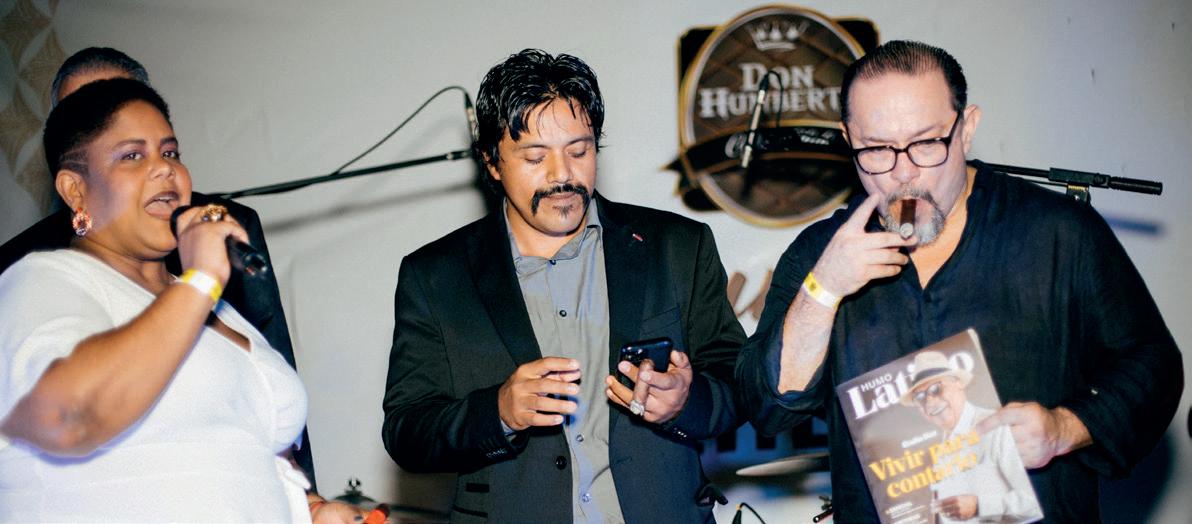
As General Director, César manages the overall operation and vision of Humo Latino. This position, he says, has allowed him to see and live the premium cigar industry from a more human and intimate perspective. Supporting the tobacco industry through specialized media and bringing something unique to the market is, for him, more than professional success –it’s “a constant life lesson” for which he is deeply thankful.
César describes his relationship with the team as fabulous. The Editorial and Design teams have known each other for many years and worked together at different points in their careers, which is why this team was formed. “We know how we work, we’re clear on our strengths and weaknesses, and we work well together.”
He remembers the 2023 PCA edition as one of their most unforgettable experiences –where the team celebrated Raúl’s birthday in Las Vegas with “an overabundance of overly sweet whiskies,” creating a night full of laughter and memories.
“The biggest challenge was the first two years,” César explains, “when Alberto and I put in a tremendous amount of effort and sacrifice to sustain, grow, and make our company profitable.”
They faced difficult moments but overcame them through belief –in their work, in their shared vision, and in Humo Latino itself. As César says, quoting Jochy Blanco: “If you want to get into this industry, you have to meet two requirements: passion and patience.”
César’s relationship with cigars began when he quit cigarettes after discovering his first bundle from the El Toro Cut Cigar Factory (Gran Fábrica de Puros Recortados El Toro). “They were the most rustic thing imaginable,” he says, “but they were made for the common person.”
He reflects: “Tobacco either grabs you or it doesn’t. There’s no middle ground.” That passion led him to open a cigar shop and co-found Humo Latino. For him, “to live, to truly know, and actively participate in the world of tobacco is a great life project.”
César describes a pivotal experience that transformed his outlook on life –
his time as a rural teacher in Pajapan, a Nahuatl-speaking community in Southern Veracruz. Through his time among the people of Pajapan, he learned the rhythms of nature, the wisdom of the land, and the strength of community.
In his own words: “It’s where I truly discovered who I am, where I understood why I love being a journalist, and where I sealed my love for books and reading. I understood life. I understood myself there.”
“I watched how a plant, when transplanted, loses all its leaves because it dies to live.” That experience became the foundation of his personal and professional philosophy –that growth often requires sacrifice, and that true understanding comes from listening, observing, and connecting with others.

César’s goals are clear, both personally and for the company: To broaden the editorial scope with a gender perspective and promote more women’s participation and leadership in the industry.
He summarizes his approach in three words: Shift the balance.
“Since I feel like part of the organization, my wish is for us to continue working to make a difference in the industry... I want to see more visibility for new ventures, more research, more events, and better spaces for smokers, both men and women. You can count on us.”
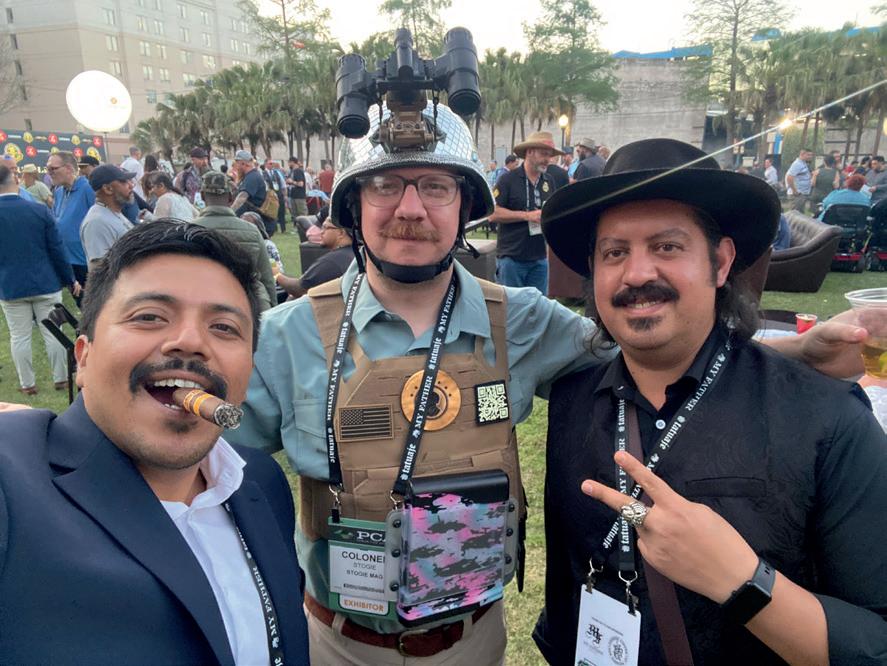
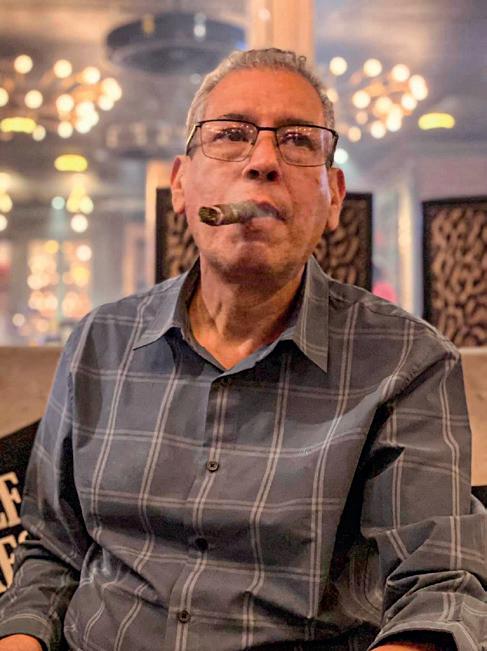
Founding Partner and Editorial Director, Humo Latino Group.
Location: Orizaba, Veracruz, Mexico.
From the very first moment I met Alberto Arizmendi, I understood that he is the inner strength of Humo Latino –the foundation of trust, the reflection of true journalism, not only as a profession but as a mission to elevate people’s values, give meaning to stories, and highlight the beauty of human
character. His eyes speak the language of kindness, humility, and truth –the same language that defines real journalists, the ones who write not only with words but with heart.
Alberto began his career in journalism at sixteen. He worked as a newspaper reporter before earning a degree in Communication Sciences. His work is marked by discipline, consistency, and a deep respect for communication and truth.
As Founding Partner and Editorial Director, Alberto is responsible for all editorial content across Humo Latino’s platforms, ensuring that every edition maintains journalistic quality, accuracy, and inclusiveness.
“The second son and only male child in a traditional family, my parents instilled values like honesty, commitment, and perseverance in me. I believe I have maintained these principles throughout my life...”
For Alberto, cigars represent enjoyment and connection –“an element of pleasure that accompanies good moments and invites sharing.”
The biggest challenge was building credibility in a market dominated by long-established publications. A challenge that, he notes, was overcome
with perseverance, conviction, and commitment. And defines the company in three words: Effort, Commitment, and Responsibility.
“I hope SOTL continues to advance in favor of the equality, respect, and recognition that women deserve –the true driving force of this industry throughout its history.”
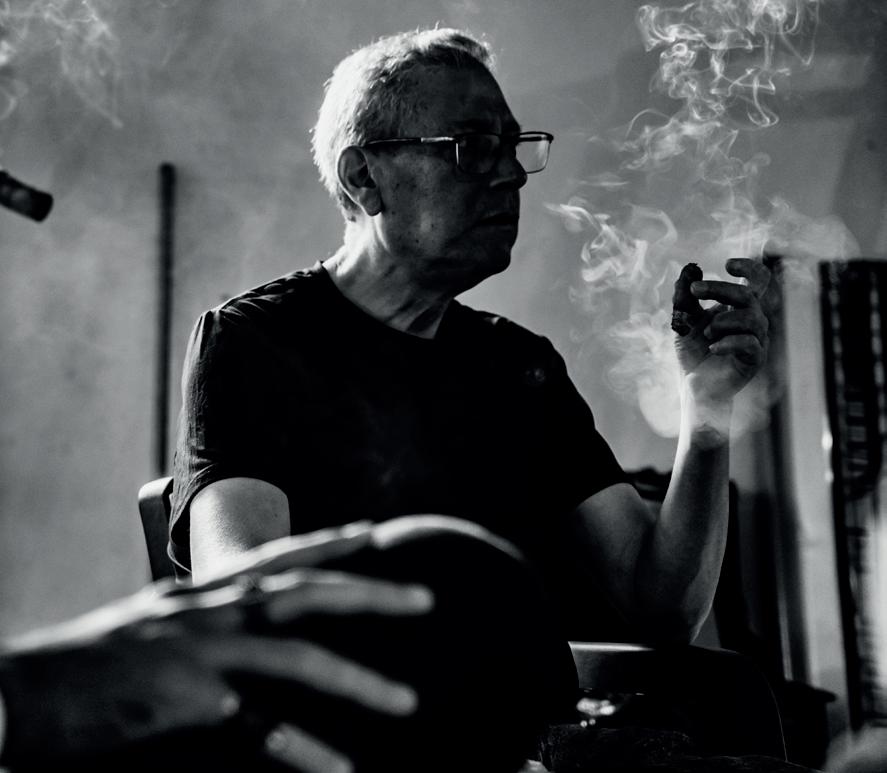
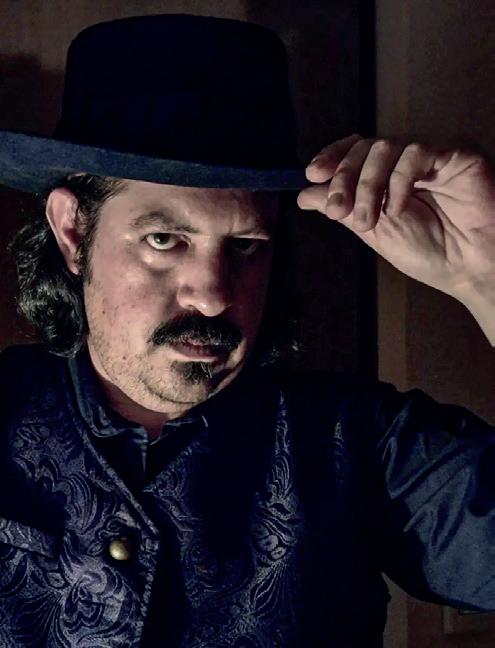
Head of the Editorial Desk, Contributor, and Editor of the Global Edition.
Location: Coatepec, Veracruz, Mexico.
With Raúl Melo, every conversation feels fluid –full of sincerity, humor, and light. He carries a quiet confidence– a certainty about things that comes from within, not from external circumstances. He speaks with honesty and carries a strong sense of happiness and joy... Beneath his humor lies a heart that feels deeply and leads with integrity.
Raúl describes his path as something that happened organically. Coming from a family rooted in engineering and science, his choice to study Communication surprised everyone. “You? The one who never talks?” he jokes. Shy by nature, he found his voice in journalism. While still in university, he began covering politics, a field he worked in for more than a decade before joining the official press team of the Government of Veracruz. After more than ten years in political communication, he discovered his passion for premium cigars through his colleague and friend César Salinas. For a time, he balanced government press work with cigar journalism until, about two years ago, he dedicated himself fully to Humo Latino’s specialized journalism.
“I’ve always believed that, beyond societal or religious dictates, what matters is being a good person –treating others as you’d like to be treated, holding no grudges or ill will. Energy or ‘vibes’ are real to me, so I think it’s better to radiate positivity to attract the same in return. Curiosity and self-teaching define me. Not everything is in books or manuals; you have to gather bits of all available information and form your own conclusions and skills. Beyond knowing, what’s truly important is understanding.”
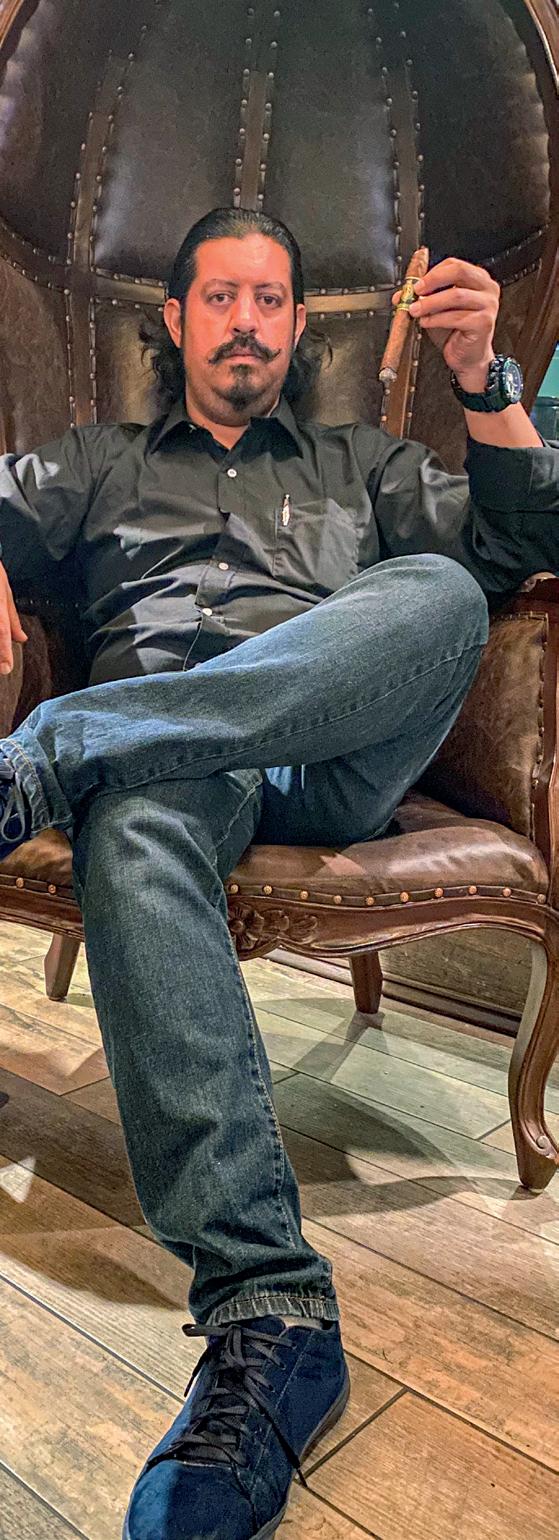
“My father was a cigar enthusiast –not the most passionate, but he enjoyed them regularly. Unfortunately, Mexico wasn’t a big market back then.” Working with Humo Latino gave Raúl regular access to cigars, deepening his appreciation.
“My father passed away in late 2023, so our time sharing cigars was short,” he reflects. “The first puro I ever smoked was one aged for 16 years, which was part of the batch my parents gifted to their friends to celebrate my birth. It is a tradition here to gift cigars for the birth of a boy and chocolates for the birth of a girl.”
Raúl’s editorial mission is clear: to spotlight boutique brands and reaffirm their place in the industry. “We’re a small business ourselves, so we relate. The goal is for Humo Latino and the brands we help elevate to stand alongside the best.”
He summarizes the magazine’s spirit in three words: Creativity, Boldness, Resilience –qualities that define the team’s approach to storytelling and innovation in Latin tobacco journalism.
“You have already achieved many changes. From my perspective, I hope that every contribution from the SOTL Global Movement continues to materialize as it has –fighting for equality in premium tobacco, highlighting the stories of men and women who are doing great things for the industry. Our mission is to continue supporting and amplifying all of this: to be the showcase for the bold, the newcomers, and those like us who envision a bright future in this industry.”
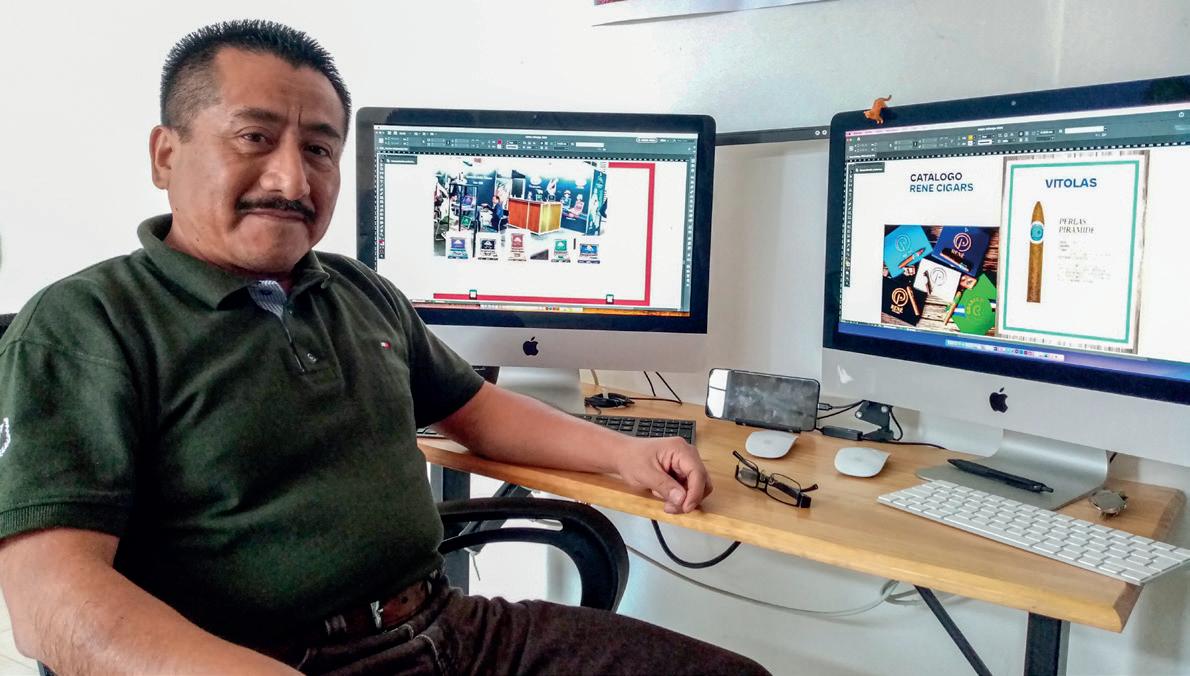
Art Director.
Location: Xalapa, Veracruz, Mexico.
Every time Lefty and I open the magazine, we look at each other and say, “Let’s see what the artist has created this month.” I have never had the chance to meet Roberto in person, yet his presence can be felt on every page of Humo Latino. His work speaks louder than words: elegant, balanced, and full of emotion. It is, without a doubt, the most refined and soulful design I have ever seen in a tobacco magazine. Every detail reflects not only talent but sensitivity –that rare combination of discipline and poetry.
With decades of experience in design and visual communication, Roberto is, more than a designer, an artist who gives life and identity to ideas. He was a student of Maestro Teodoro Cano, a plastic artist from Veracruz known mainly for his mural work, for whom he also served as an assistant in the large-scale tracing of some of his pieces.
Before Humo Latino, he had already joined Alberto Arizmendi in the creation of local newspapers in Veracruz, merging journalism and artistry to build stories that could be both seen and felt. That early experience with art and design instilled in him a profound sense of aesthetics, respect for culture, and the understanding that true art resides in the details –all of which now define the visual identity of Humo Latino.
As Art Director and co-founder, Roberto Pérez Santiago has given the magazine its distinctive character: timeless, elegant, and deeply human. His work transforms every issue into an experience, reminding us that design, when guided by soul and meaning, becomes art that endures.
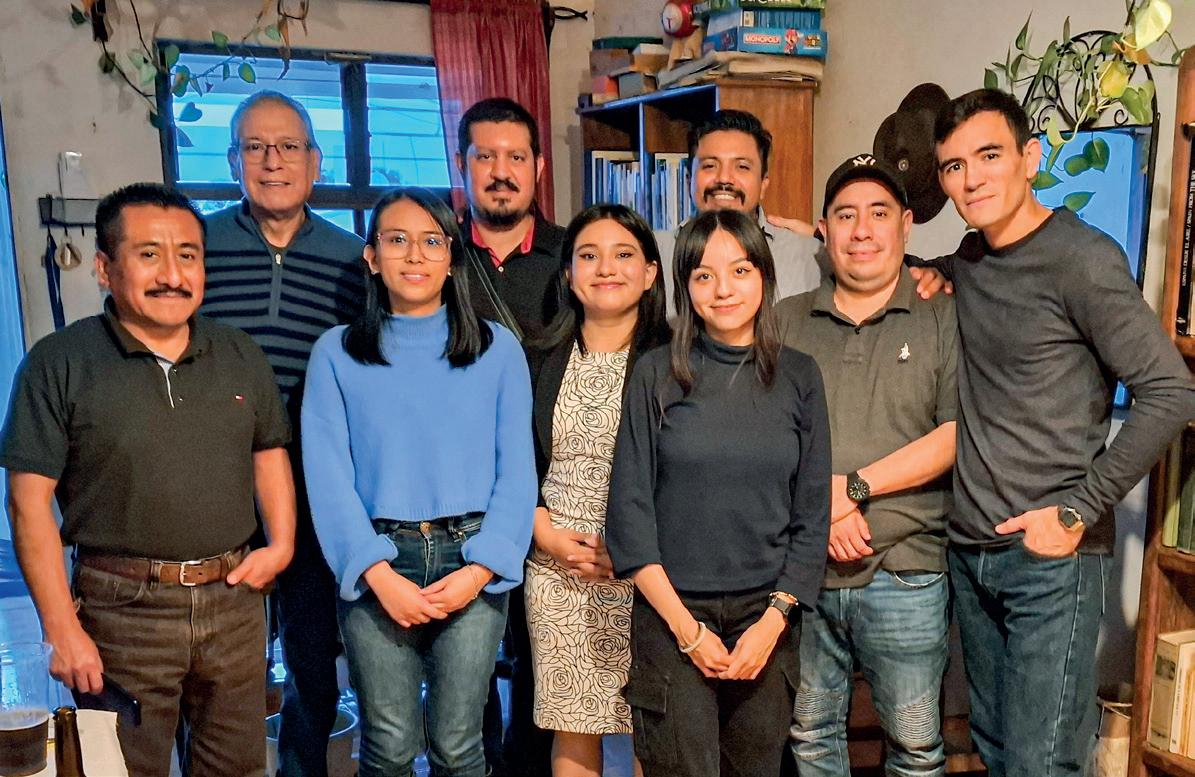
Junior Designer
Location: Minatitlán, Veracruz, Mexico.
Arecent graduate of Graphic Design from Universidad Gestalt de Diseño, Kassandra defines herself as a diffuse thinker but always willing to learn whatever is necessary. Staying focused on one thing seems overwhelming to her, and a busy schedule is her ideal environment.
Her interest in illustration was sparked around the age of 12 or 13, inspired by the lack of images in the textbooks she used when she began her secondary education. “Faced with problems, I always try to understand them and find solutions, and I saw that some classmates had difficulty learning with only text. I felt that with drawings, they could do better.”
In addition, her passion extends to the world of tattooing, where she will soon begin her preparation to transfer the skills she already executes on paper and pixels directly onto living canvases, as her current mentor in the subject expresses.
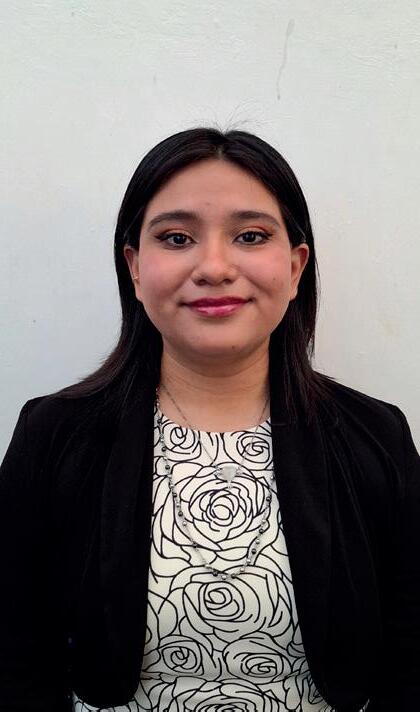
Kassandra joined Humo Latino a year ago, and the designs she delivers week after week are part of her first professional experience. She arrived nervous for the initial interview to join the team, without a professional portfolio, and although she was only in the final stretch of her university studies, approval came on the heels of some published advertising posters and a Special Edition cover dedicated to women in the Tobacco World.
Junior Designer
Location: Poza Rica, Veracruz, Mexico.
Drawn to the world of art since she was very young, Marisol grew up facing the dilemma of following her passion or seeking an option with greater economic and professional opportunities for the future. When it came time to make a decision, she found the perfect balance between the pleasure of art and business in Graphic Design.
Alongside martial arts –an activity she wishes to resume soon– time alone and the art of design provide a combination that makes her happy and fills the spaces that life outside her hometown brought her since she moved to Xalapa, the capital, for her studies.
A year after joining the Humo Latino team, the experience has been pleasant and a good platform for development outside the classroom, one step closer to the job market. “Humo Latino has helped us grow a lot and realize that we shouldn’t stick with what we think, but learn to listen to the client’s needs.”

Hoping to continue within the project’s staff, Marisol feels this experience has been like working in a family, contributing to the company’s growth with her creativity and a fresh perspective.
Junior Designer
Location: Xalapa, Veracruz, Mexico.
At just 22 years old, Uma is a disciplined and hardworking person who, attracted by the creative possibilities that computer programs can offer, started in the world of design through a couple of technical courses focused on basic Adobe software.
Curious about what this new knowledge could offer, she decided to dedicate her professional education to Graphic Design, seeking to strengthen the knowledge she already possessed and expand her understanding toward the “why,” beyond the “how.”
When Humo Latino approached the Universidad Gestalt to request a team of interns who wanted to gain professional experience, Uma appeared within a short list composed of friends who shared the ideals and skills sought by the company.
After a year of collaboration and strengthening her professional portfolio, she says she is grateful for the opportunity and committed to the goal

of continuing to learn and discover new things, especially within the branch of editorial design. “Beyond everything the writer can express with words, the images help guide that intention without hindering the audience’s imagination,” she affirms.
Style Editor
Location: Xalapa, Veracruz, Mexico.
Anative of Acayucan, Veracruz, Enrique Quijano Santana studied English Language and Literature at the Universidad Veracruzana, as well as completing a diploma in Writing, Grammar, and Text Correction at Casa LAMM. He considers correction and (re) writing to be a discipline; an exercise of thought that converts every text into a bridge to knowledge.
After serving as Copy Editor and then Editorial Coordinator for El Portal, El Gran Diario de Veracruz, he later collaborated with Quadratín, developing special investigations and editing/writing work. In the Social Communication Coordination for the Xalapa City Council, he participated in preparing government reports, memoirs, and institutional speeches.
For him, Humo Latino signifies a space for dialogue and discovery. Beyond style correction and content creation, he can connect with a community passionate about culture and tradition. “Every text is an opportunity to learn about the Tobacco World and to connect with the art, culture, and knowledge contained within the cigar.”
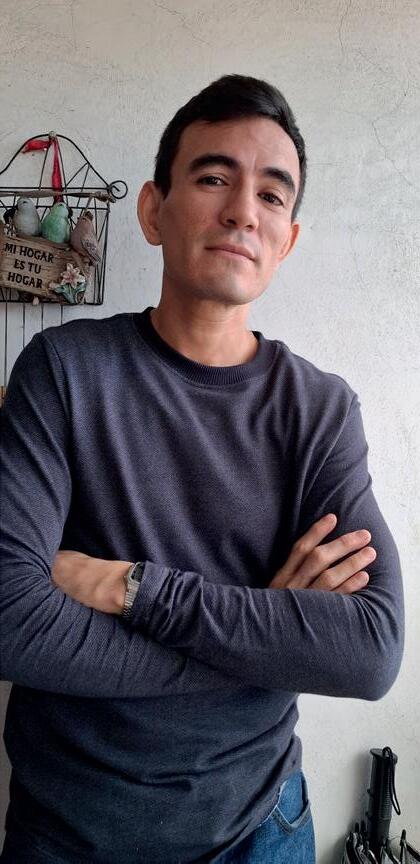
His vision combines exemplary writing with a profound respect for the reader, enriching narratives that invite the exploration of the cultural richness evoked by premium cigars. Philosophy and critical thinking guide his view of the world, leading him to state that “writing and correcting is not just transmitting or transforming information, but shaping thought and dialoguing with reality.”
Web Master
Location: Xalapa, Veracruz, Mexico.
AComputer Systems Engineer, he began his studies at the Instituto Tecnológico Superior de Xalapa and graduated from Universidad Filadelfia de México. His first professional experience was as a Web Master for the Government of the State of Veracruz, and he subsequently worked as a web and digital systems developer for various governmental and private organizations.
He joined the Humo Latino team from the start and created the platform that remains, after several renovations. “At that time,” he explains, “Amazon’s services were booming, and we started by hiring servers to replicate the page. We built a structure with the latest version of
WordPress and mounted it on a new infrastructure; both were cutting-edge technology for digital media.”
Moi, as he is known among the team, says that a website is the platform where a media outlet publishes its content and serves as the foundation for social media to link to publications, guaranteeing their permanence. “Technological advancement never stops, and now Artificial Intelligence (AI) is booming. In fact, I’ve started working with smart servers, and it’s surprising to train robots, which are really services, so to speak.”
He adds, “The people who formed the Humo Latino team are my friends; we had already worked together, and I have always enjoyed working among friends. I have tried to replicate all my knowledge for the benefit of the company, and even when we have suffered ups and downs, including some setbacks, at the end of the day, we pick ourselves up to keep going and plan and advance in this area toward the future.”
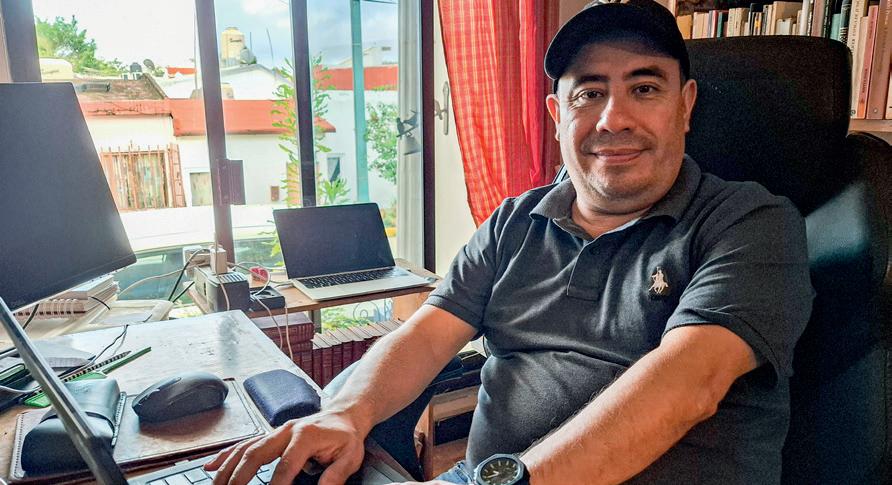
Community Manager
Location: Xalapa, Veracruz.
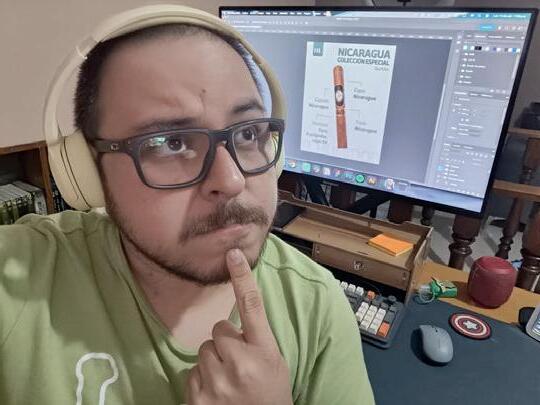
AXalapa native, he studied Communication Sciences at the Universidad de América Latina (UDAL), as well as a master’s degree in Multimedia Design at the Universidad Tecnológica de México (Unitec). His first job was in the recording studio of the Universidad Popular Autónoma de Veracruz (UPAV), as a video editor, scriptwriter, and researcher, transforming the institution’s curriculum content into multimedia products.
He later collaborated with marketing agencies and Algarabía magazine, producing videos, social media designs, and motion graphics. He then joined a company specializing in software creation and the design of websites and applications, and finally established himself as a multimedia designer, in charge of communications, content creation, and marketing for a financial group.
“Managing the social media and creating content for Humo Latino was quite a challenge, because I didn’t understand the dynamic of the tobacco sector, and I just went along with the stories until I realized it was a magazine, and my perspective changed. It has been a huge learning experience, and now I can calmly say that they deflated my ego; something that had never happened to me. Despite your experience, each company and brand is a world in itself, with its own values and forms of expression.”
Yoshua says he hopes that the style and design of the products that identify Humo Latino will eventually settle at some point and become a reference. “That people identify them at first glance by the quality of what is said and presented, in such a way that they have no doubt and can identify when someone is imitating or copying us.”

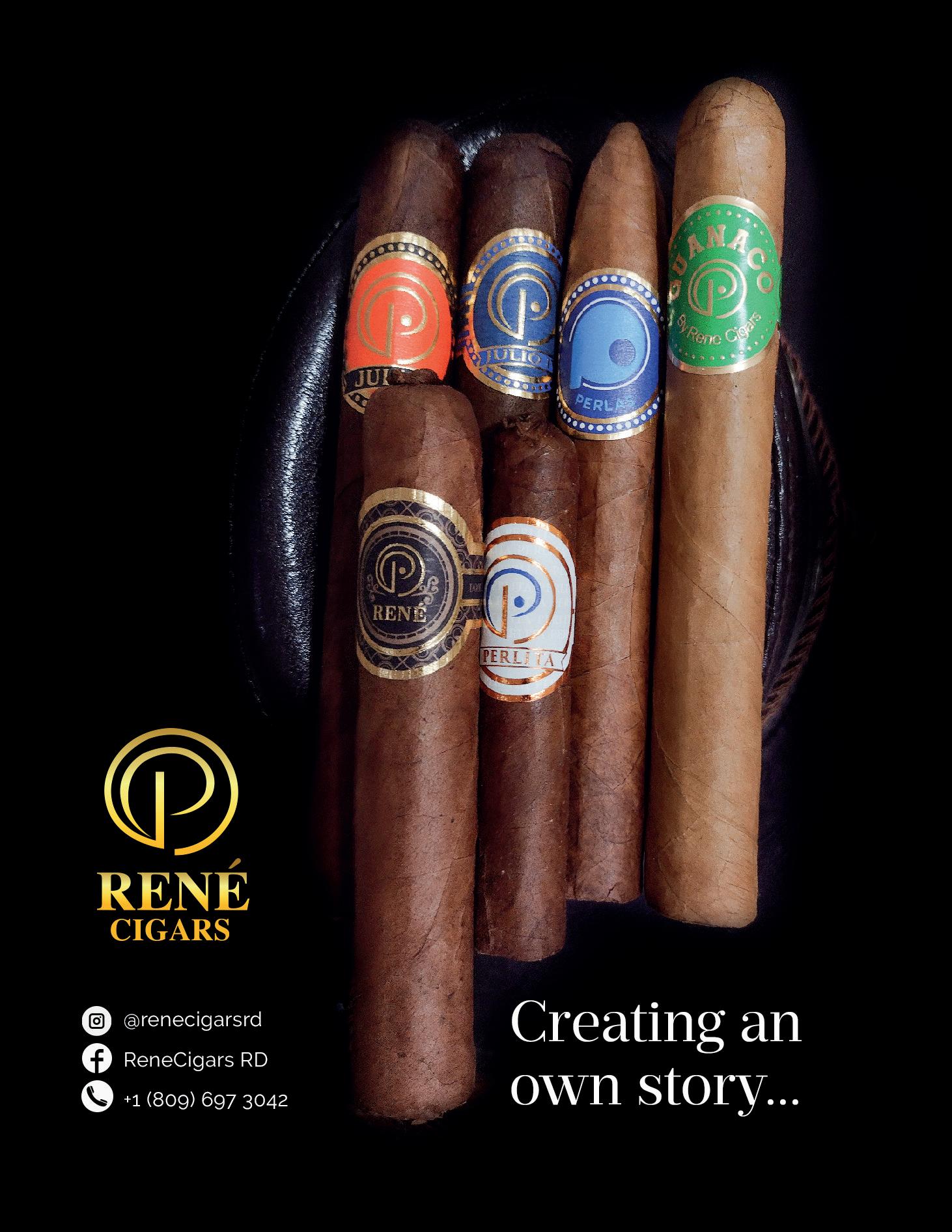


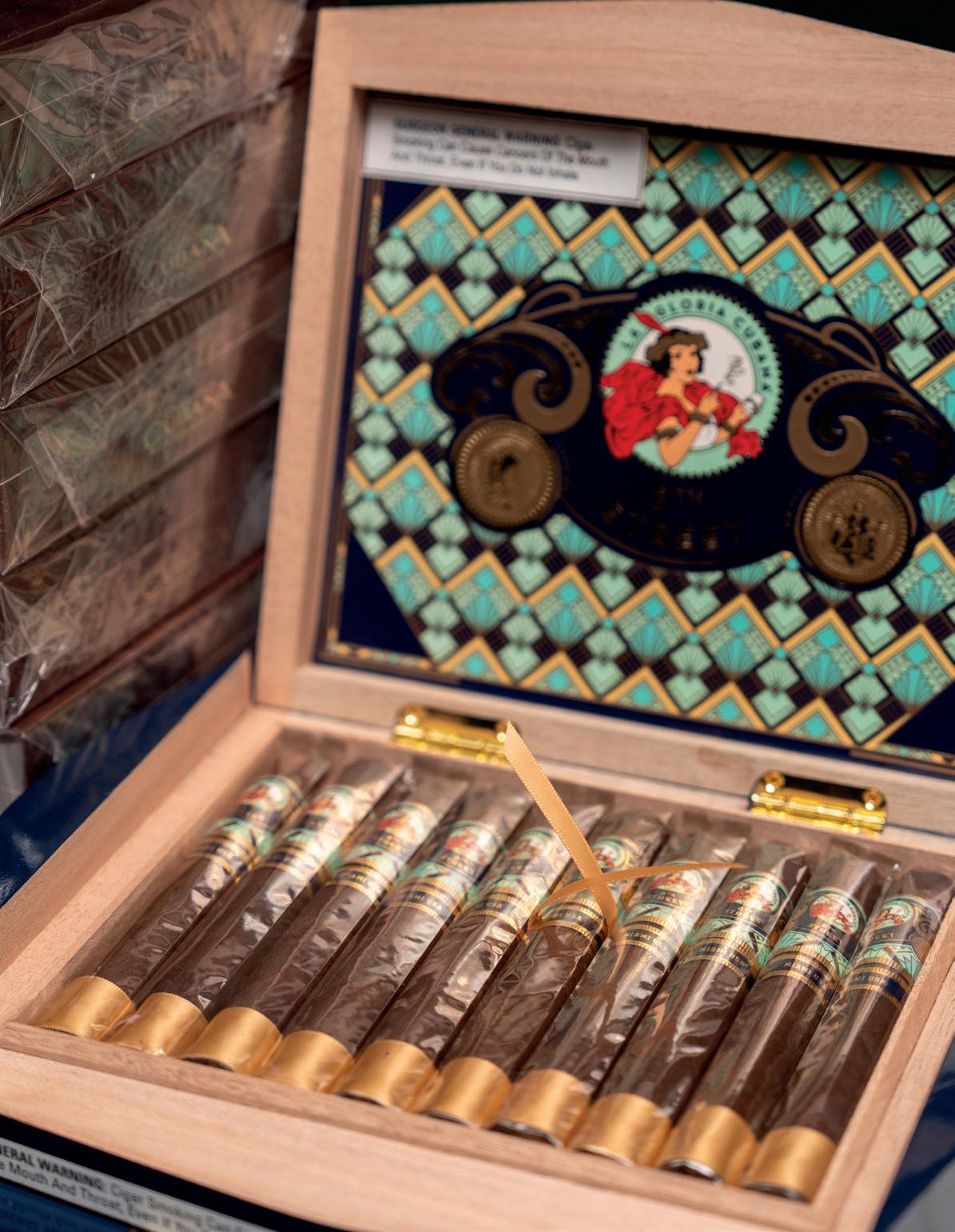
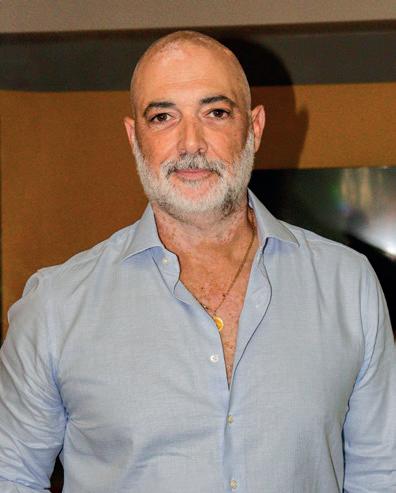
Cándido Alfonso*
For years, the premium cigar was synonymous with exclusivity: a ritual reserved for private lounges, leather armchairs, and unhurried conversations among connoisseurs. Today, that image has evolved. Much like Puerto Rican gastronomy and mixology –which have achieved international recognition– the Tobacco World is experiencing an extraordinary expansion, integrating itself into restaurants, bars, hotels, and spaces where the art of good living is celebrated with pride and authenticity.
Puerto Rico is spearheading a culinary renaissance. Visionary chefs, audacious restaurateurs, and passionate foodies are putting the island on the global map, blending innovation, tradition, and boundless creativity. With that same spirit, the premium cigar has found a new, shared stage alongside high cuisine, artisanal cocktails, and modern hospitality. Both worlds –gastronomic and tobacco– share the same philosophy: the pursuit of genuine pleasure, respect for craftsmanship, and the celebration of time well spent.
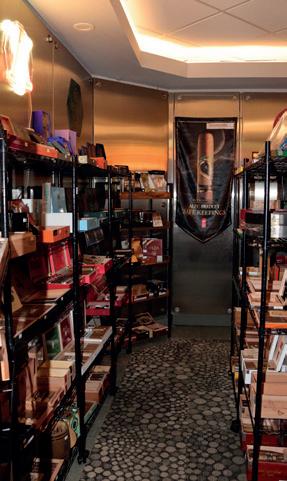
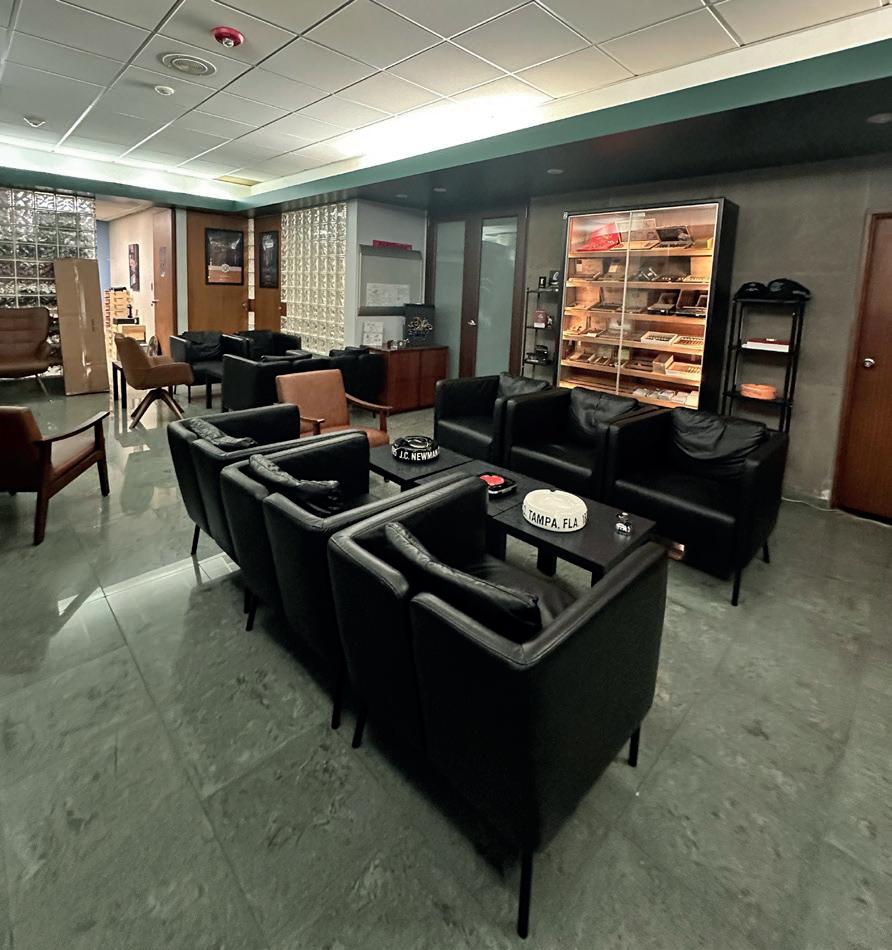
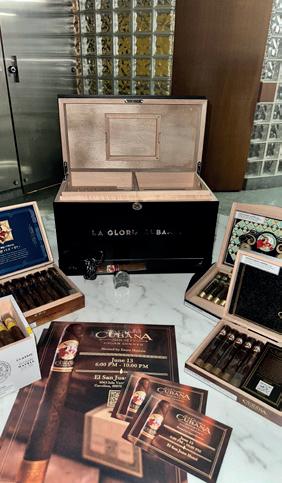
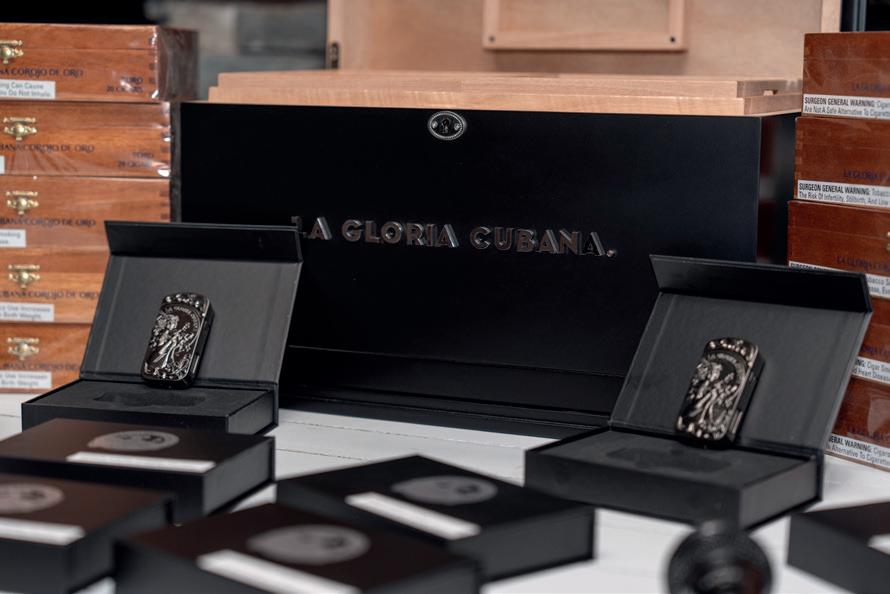
Entre Humos has played an essential role in this transformation. Guided by them, the hospitality sector has discovered the value that the aficionado brings to premium tobacco. Restaurants, bars, and rooftops have understood that offering a dedicated space or experience for the smoker not only expands their offerings but elevates their ambiance and attracts a select, loyal, and discerning clientele.
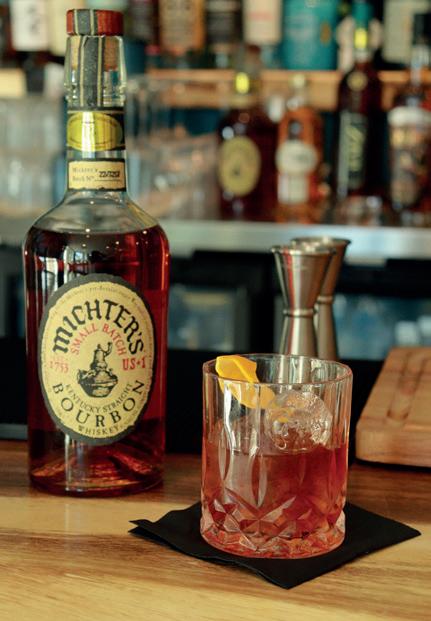
The impact is tangible: in recent years, nearly a hundred establishments in the Puerto Rican culinary and mixology world feature humidors carefully installed and stocked by Entre Humos, with cigar selections curated by their team of experts. This collaboration has allowed chefs, bartenders, and hosts to integrate the premium cigar as a natural extension of the culinary experience or the ritual of the perfect cocktail.
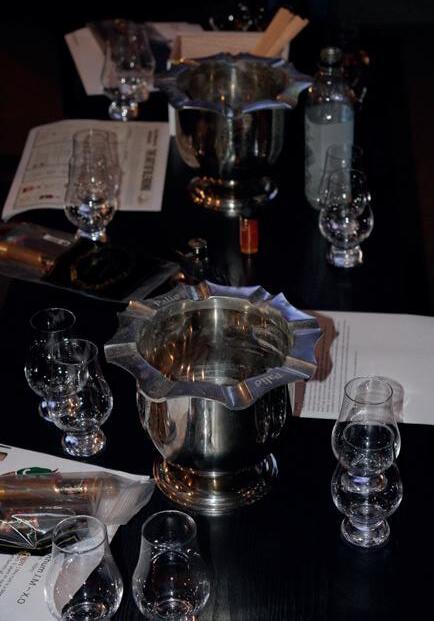
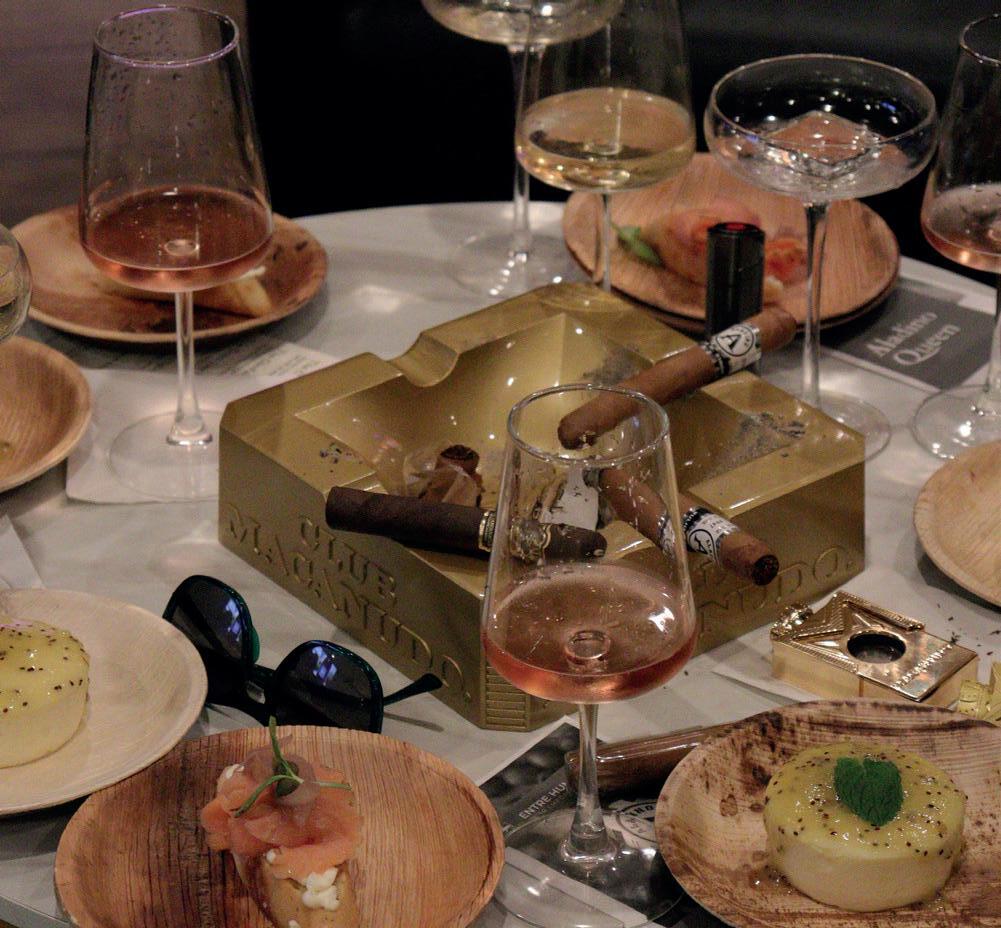
Today, it’s no surprise to see terraces where an aged rum or an Old Fashioned is accompanied by an exceptional cigar, or dinners where the pairing culminates in a leisurely smoke at sunset. The cigar has become a sensory bridge between the kitchen, the drink, and the conversation; a gesture that completes the cycle of enjoyment.
Just as Puerto Rican gastronomy has managed to honor tradition while embracing innovation, the premium cigar is undergoing its own evolution. It moves away from the myth of exclusivity and closer to the concept of shared luxury: the experience, authenticity, and connection.
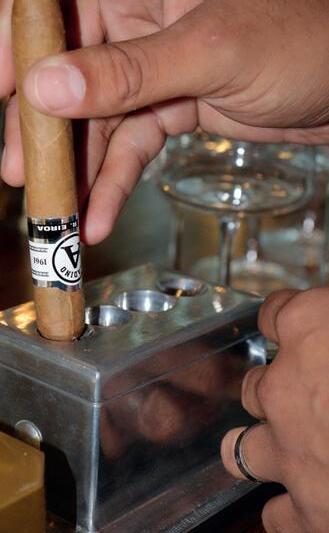
Thanks to the vision of Entre Humos, tobacco has gone from being a symbol of the elite to becoming part of the new language of hospitality; a language that celebrates the pause, the detail, and the art of savoring life.
Because in the end, the cigar –like a fine meal and a great cocktail– is a celebration of time, taste, and conversation. An art that is not only enjoyed but shared.
* Founding Partner of Entre Humos: Lounges, Online, Retail, Puerto Rico.
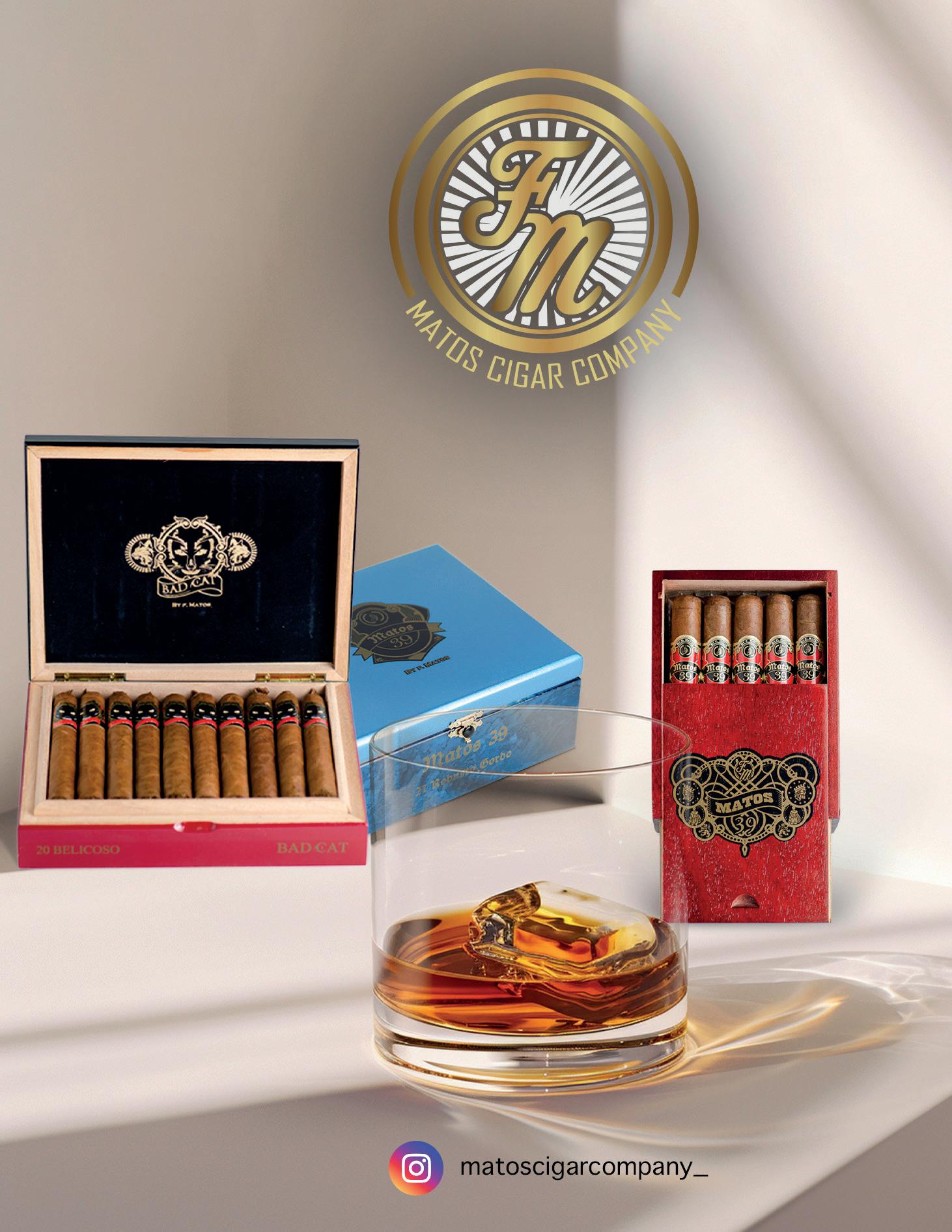

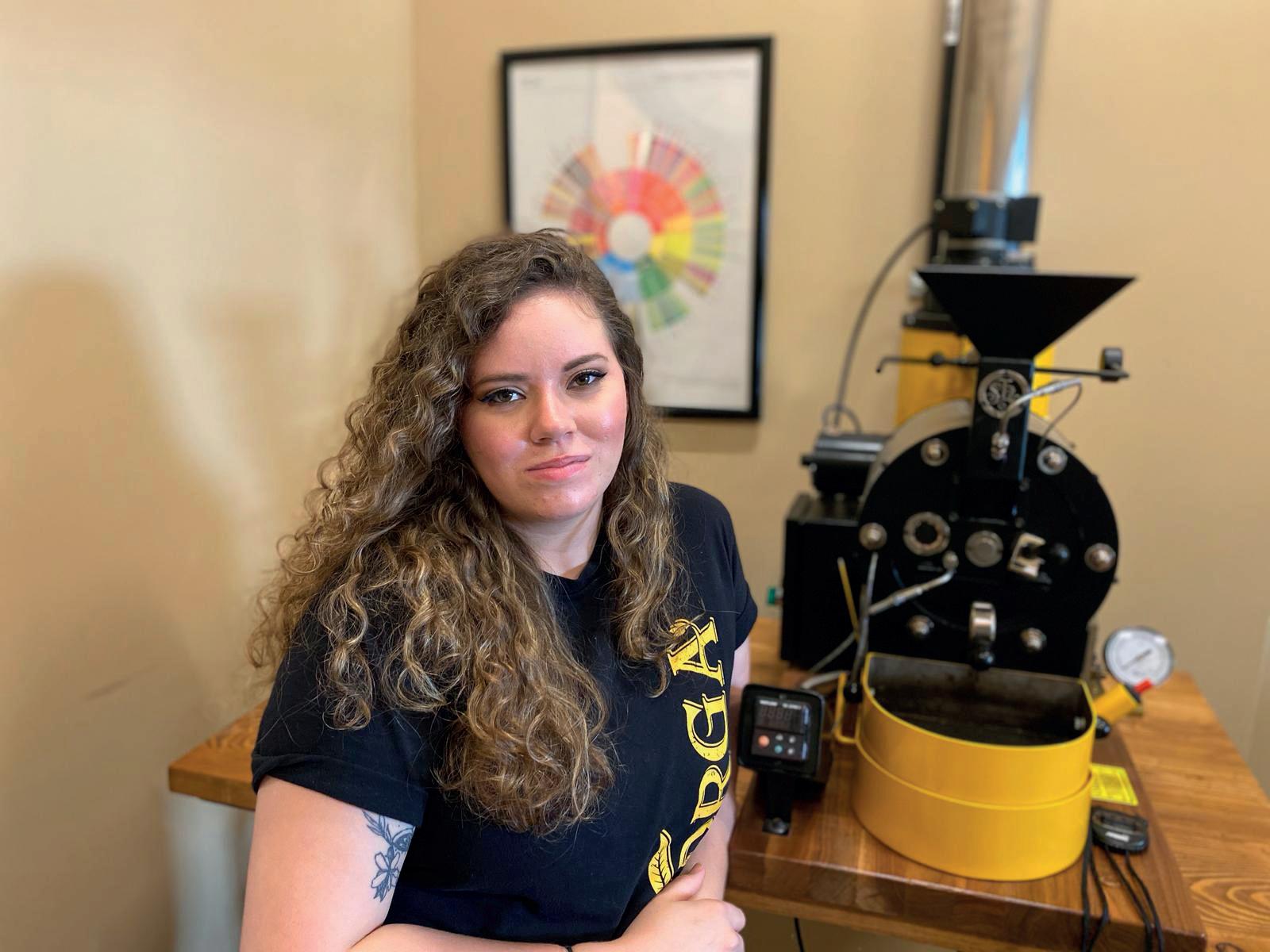
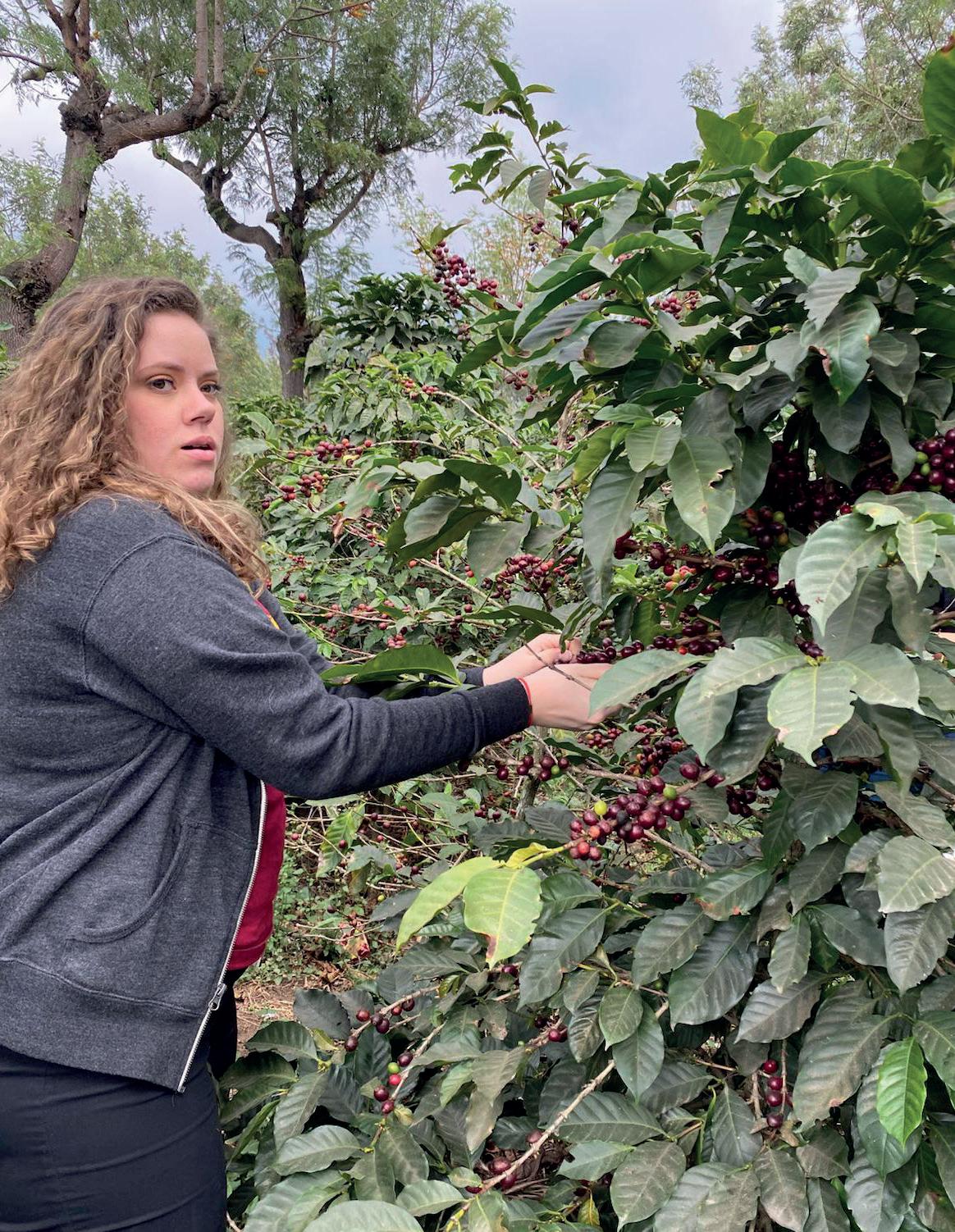
César Salinas
Natasha Cruz-Sánchez is a young woman who loves her native Puerto Rico, coffee, empathy, and the countless roads she has traveled in her red Kenworth. At 29, she recently discovered her passion for premium cigars, owns her own coffee brand, and is an active, conscientious truck driver who fights every day, and from every sphere, to make this a better world –especially for women.
Natasha’s story is one of constant betting on herself, class consciousness, and empathy–that silent revolution. She holds powerful convictions, exemplified by this quote: “I am here to honor the work of those who produce coffee and those who move the world.”
She grew up in Caguas, a Puerto Rican town that is “half country, half city.” At home, her grandmother, since Natasha was five, would serve her café colao (pour-over coffee) in small green or yellow butter cups. She was firm, “chided with love,” and essentially raised Natasha. Coffee was always important in her life because she considered it the “glue” that held families together and sparked conversation.
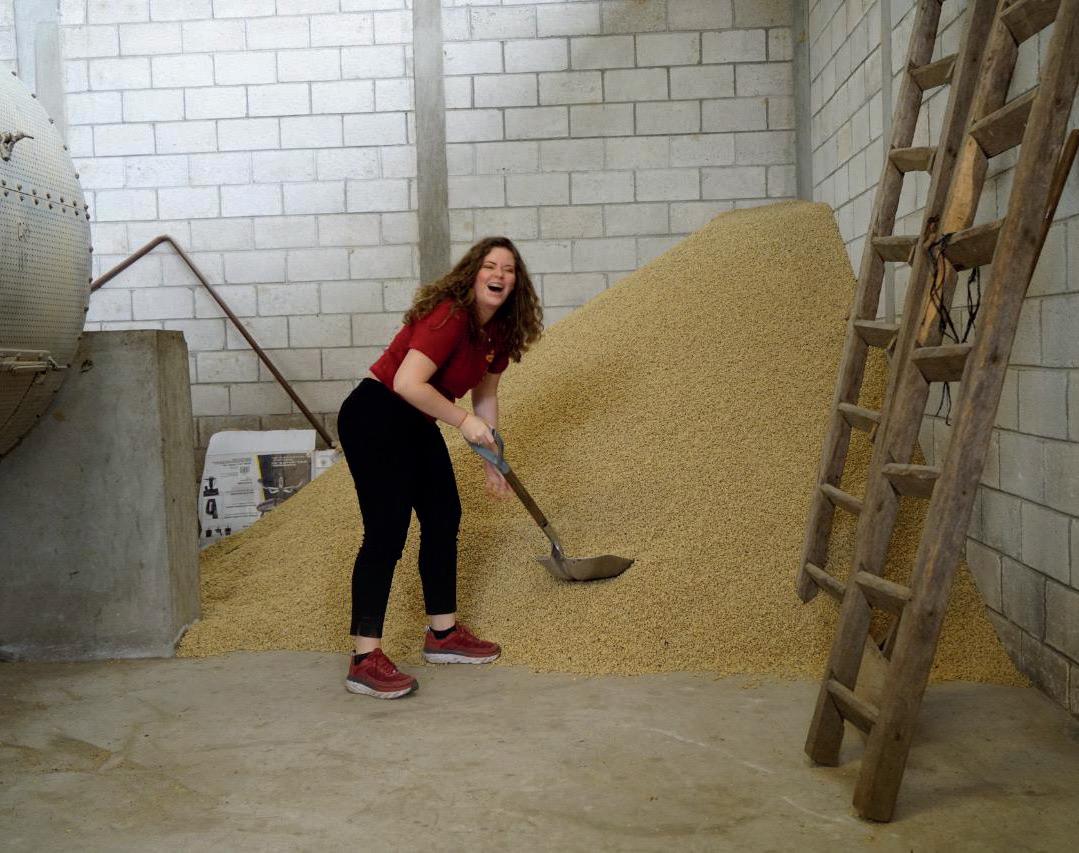
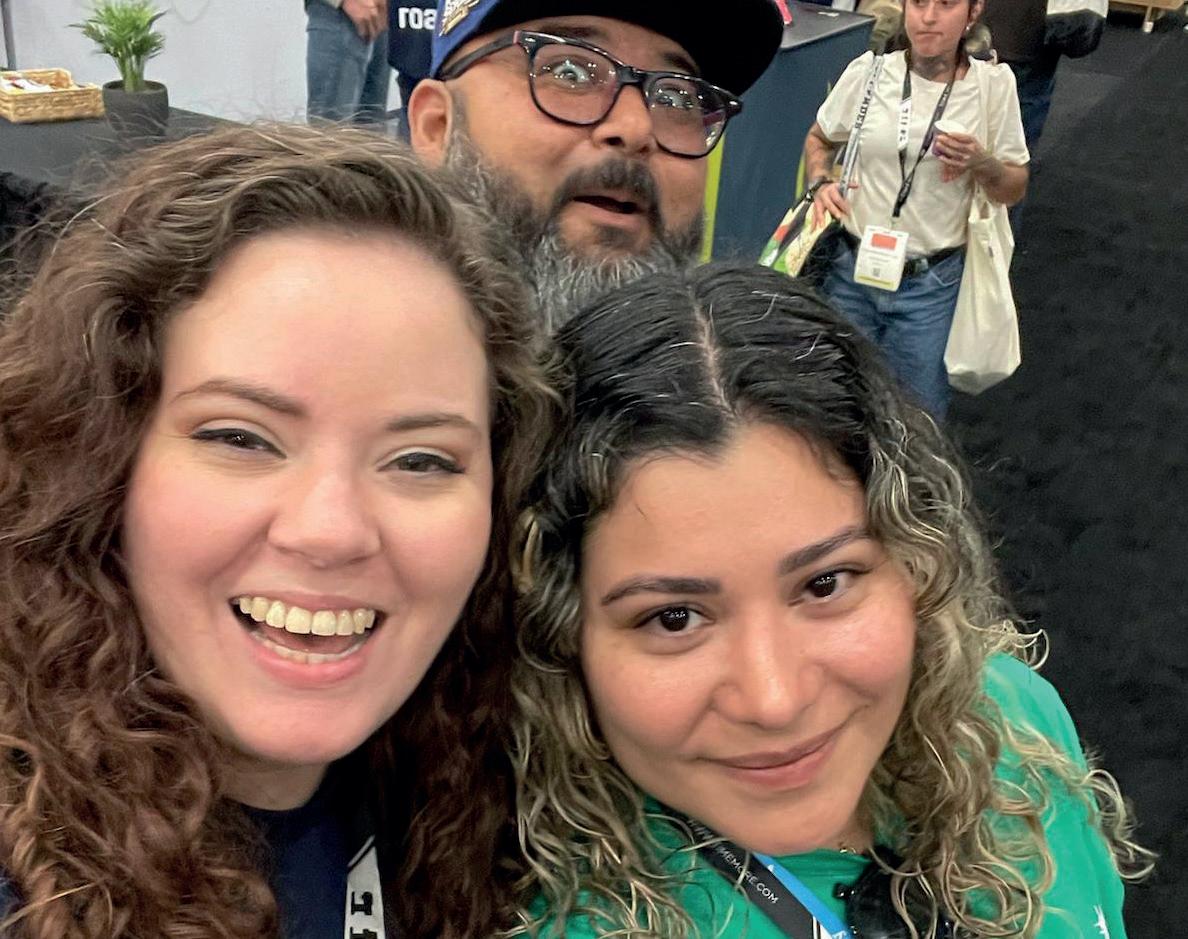
Her dedication to service led her to study Nursing at the University of Turabo. “I’ve always had that drive to help people, and I thought at the time it was the career that aligned most with what I wanted.”
Before Hurricane Maria, she began working in the coffee sector and loved it. However, her life took a radical turn after the storm when she moved to the United States: “Between the desperation and the destroyed island, I decided to take advantage of a job opportunity that came my way”. But that brief administrative job in the healthcare sector introduced her to the cruel tedium of the corporate world.
She then made another decision with radical consequences: she went to Italy to take a course in coffee machine repair at the Espresso Academy in Florence. She was greatly surprised that out of 30 people in the classes, only three were women. “It was beautiful to see other women take on the challenge; I was the only Puerto Rican. Al sol de hoy (to this day), we still have a WhatsApp group where we keep in touch and follow everyone’s coffee projects.” Natasha admits that, in addition to seeking out espresso machine pioneers during this trip, she discovered herself there.
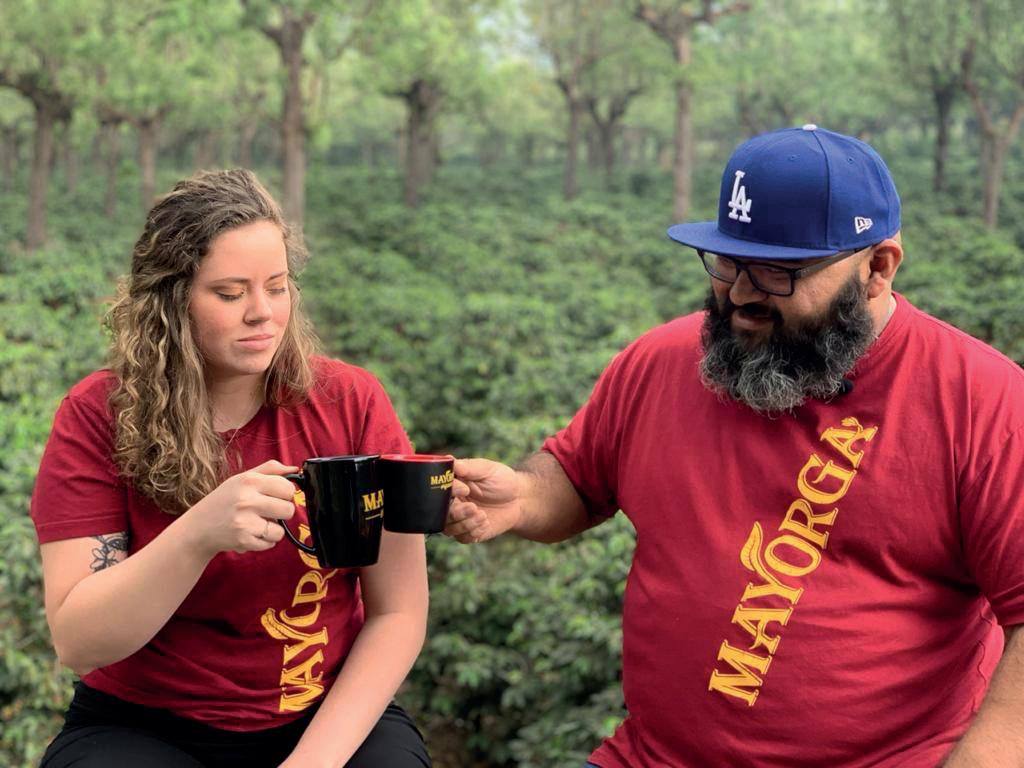
Upon her return, she left the security of her job for a position at a La Colombe specialty coffee shop in Washington, D.C. “I’ve never been someone who takes long to make decisions. When I want something, I do it now, whether the consequences are positive or negative. I was never the type of person who wouldn’t try things.” She worked there for a year as Lead Barista, where she expanded her knowledge of the brew bar and “realized there was a wider world in the industry.”
The challenge deepened when she started working at a coffee roaster, formerly Mayorga Organics (now Mayorga Coffee). She spent two years there, eventually becoming Community Relations Coordinator. What she appreciated was that the owner worked directly with the producers, most of whom were Latino. Her responsibilities grew, and soon she was in Guatemala, visiting a massive coffee farm. Living and learning the industry’s value chain firsthand, she declared: “I want to be here.”
“Sometimes people tell me, ‘Oh, but you studied Nursing,’ and I respond that you can help wherever you are. When you understand that there is a human behind every product, you can make a difference, even if just a little bit.” Guatemala opened her eyes to the significant class gap between the Global North and South, fueling her belief that Latinos in the North can be the connector to shrink that divide.
Upon returning from that trip in 2020, the pandemic halted the world but put trucks in motion. She noticed something important at the coffee warehouse: “I never saw a woman... how hard can it be to drive a truck?” Seeing the void, she decided to get her CDL (Commercial Driver’s License) and become a trucker.
A health issue forced a pause, but she promised herself: “Once I recover and return to the United States, I’m going to become a trucker.” After surgery, Nat moved to the Arizona desert.
Trucking school was her first splash of reality. Like in Italy, only three out of 30 applicants were women. “It’s not just learning to drive a truck –add the machismo, prejudice, and disrespect.”
Self-esteem and conviction remain her main emotional tools: “You have to be comfortable with the word ‘no.’”
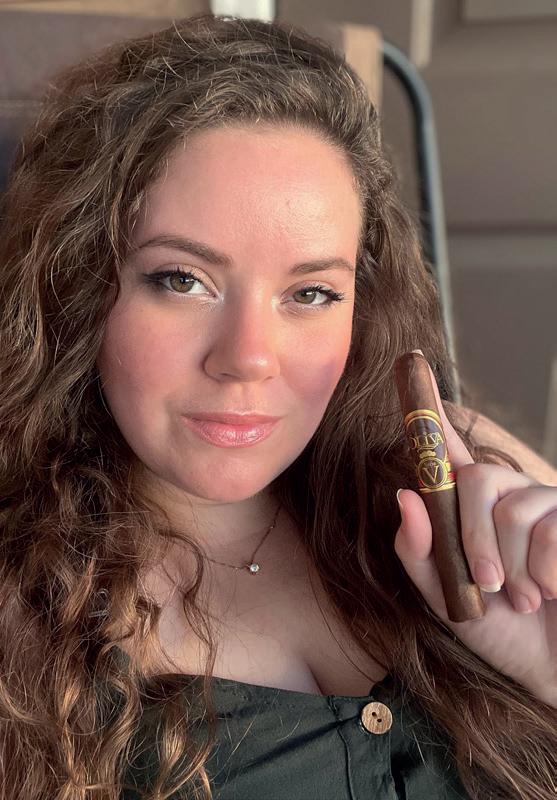
The most frustrating thing was the double standard. “A woman is not allowed to make mistakes. If you mess up and can’t park, they comment: ‘ah, you can’t be here because this isn’t for you,’ but if they’re men, they are more lenient. Also, I think if you’re the only woman in a space, you have to ask yourself: what are you doing within your means to attract other women?”

The rewards of the road, however, were magnificent: the freedom of being alone, the beauty of desert sunsets, and that feeling of not knowing what the next day would bring. Her work allowed her to choose herself –something the corporate world never gave her. “Every day is something different; it’s a very unpredictable job, and I like the feeling of not knowing what will happen.”
However, her miles abruptly halted in 2024 after an accident. “If I hadn’t saved 30 percent of my salary, I wouldn’t be here.” This “horrible” blow reinforced her discipline, forcing her to have a “plan A, plan B, plan C, plan Z.”
She is now actively advocating for truckers, having recently presented the Safe Communication Act –a national secure communication law– to the Federal Motor Carrier Safety Administration (FMCSA). The initiative proposes a standardized system to evaluate truckers’ English proficiency. “This will lead to more safety; it’s about taking care of truckers, and it concerns public safety, which affects all of us.”
Nat’s coffee brand, NACRUSÁN, stemmed from indignation: the poor quality of coffee at truck stops. Her mission: to provide a quality product to an essential yet often underserved community.
The design of her Over the Road coffee bag, a medium roast and a tribute to drivers, features her red Kenworth T680 truck, the Hoover Dam landscape, and a small detail: the Puerto Rican flag on the windshield.

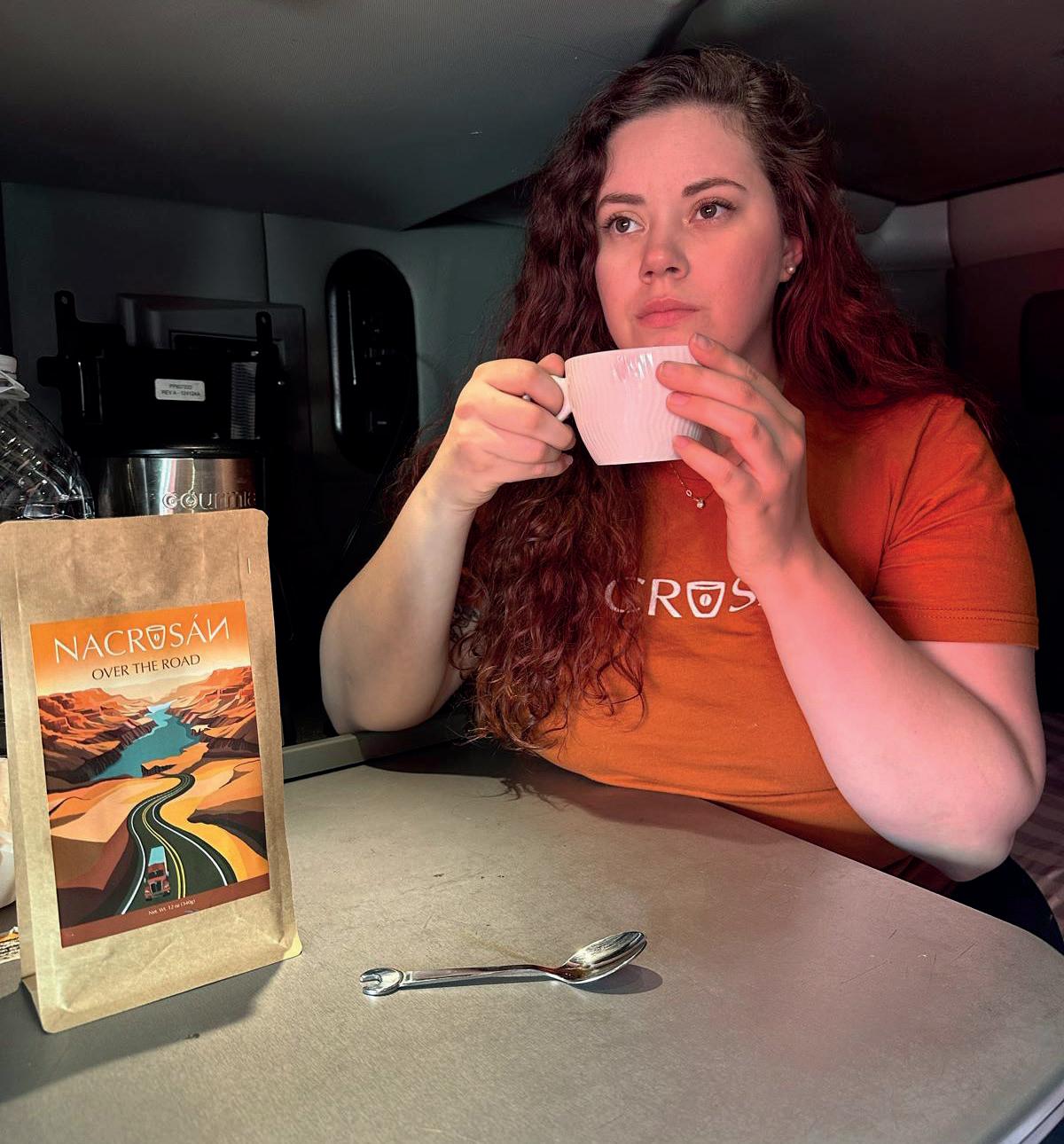
Her vision of equity extends to the supply chain. Natasha actively seeks out women producers, starting with a collective called Las Adelitas in Hidalgo, Mexico, and now with a producer in Chiapas, ensuring her brand’s commitment to a gender perspective is reflected from the seed up. NACRUSÁN is a business born out of empathy: everyone has the right to drink good coffee, especially those who move the world in their trucks.
I met Nat on social media, and this past July, I had the pleasure of enjoying a cigar with her in Houston. We ate ChinesePuerto Rican cuisine, she prepared me a cup of coffee (a truly excellent coffee, I must admit), and we smoked good Dominican cigars at my sister’s house, just a few hours before my return to Mexico.
One could say her personality is overwhelming, but in the best sense of the word. She is an intelligent, focused, hardworking woman with fire in her heart and no fear of the future.
She is just beginning her journey in the art of the fine smoke, and while that story is still unwritten and hasn’t yet led to any radical decisions, we shouldn’t rule it out. For starters, we welcome her as a new collaborator who will be reporting on the latest in tobacco activity and coffee from Houston, in addition to writing opinion pieces –something she hasn’t done before, something different.

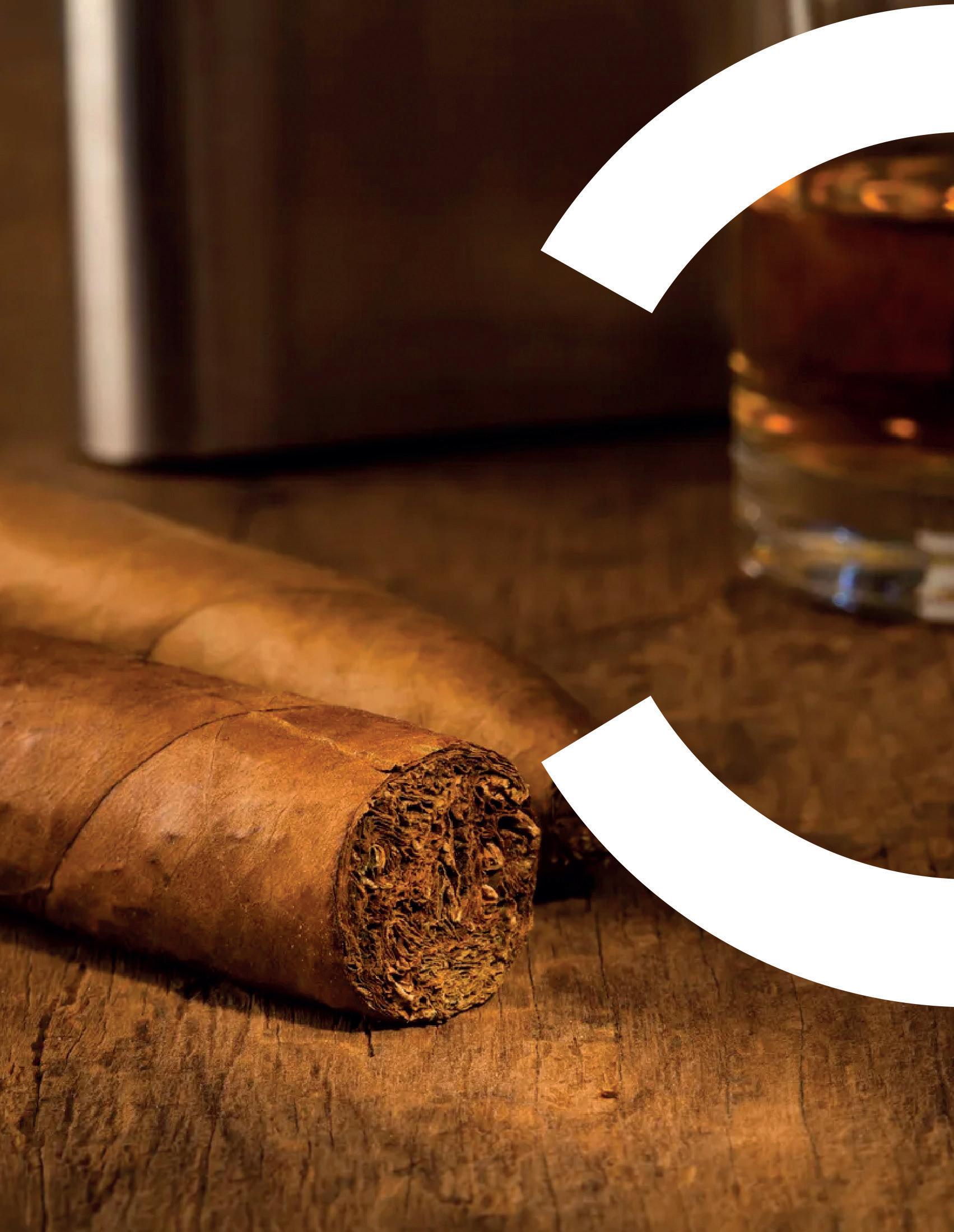



Kilchoman Sanaig
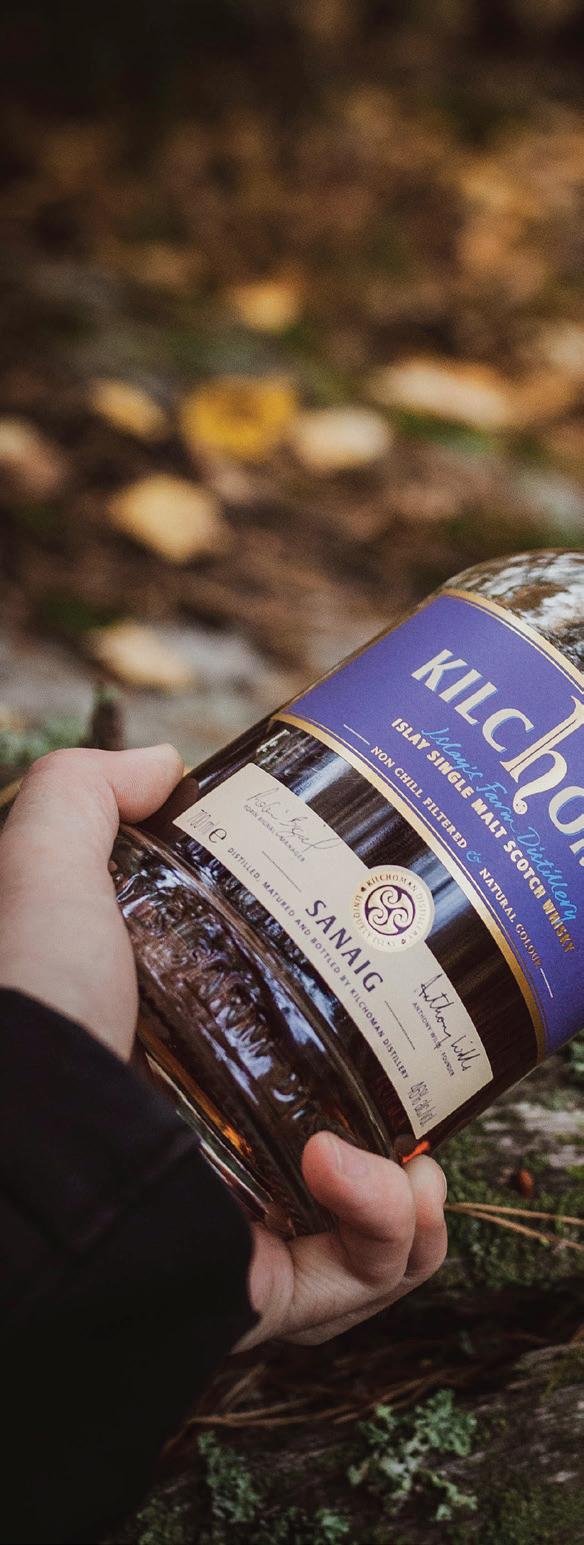
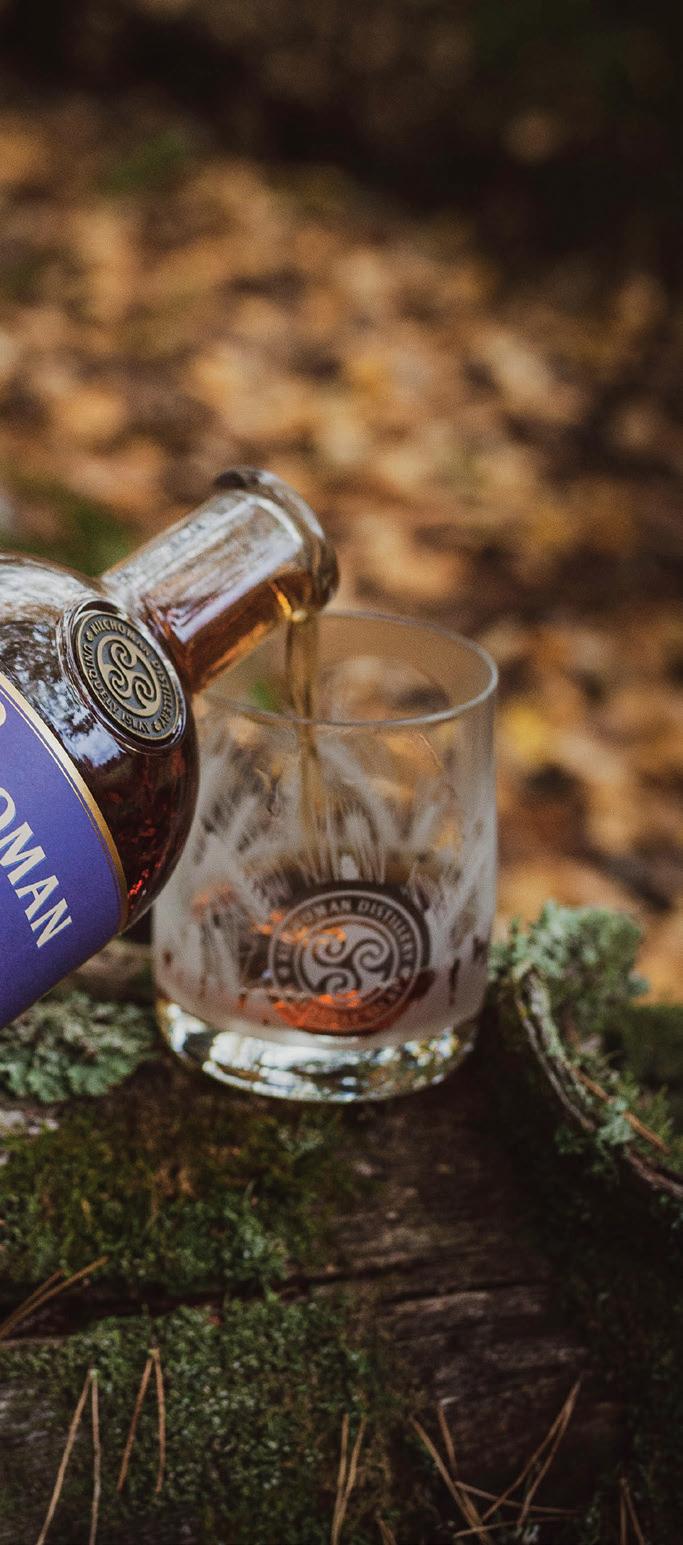
Michel I. Texier
CLASSIFICATION: Islay Single Malt.
COMPANY: Kilchoman Distillery Co. Ltd.
DISTILLERY: Kilchoman Islay Farm Distillery.
ABV: 46% (90 proof).
AGE: NAS (No Age Statement).
MASHBILL: 100% Malted Barley.
COLOR: Pale cream and brown, with slight reddish hues.
Kilchoman Sanaig is one of the most interesting expressions in the core range from one of the most recently operating distilleries on the Scottish Isle of Islay. It is bottled without added coloring and matured in a combination of 70 percent ex-Oloroso sherry casks and 30 percent ex-bourbon barrels, the latter sourced from my favorite American distillery, Buffalo Trace.
It reaches 50 PPM (Phenol Parts Per Million), giving it a significant standing among the peated and saline expressions that generally characterize the island’s distilleries.
NOSE: Peat, dark chocolate, and a subtle citrus presence wrapped in notes of pineapple and dried fruit. Balanced and without alcoholic aggression, it has that volatilization that captivates those who unashamedly enjoy peated expressions and who allow the edges of the glass to rest beneath the nose for longer than a less obsessive drinker would consider normal.
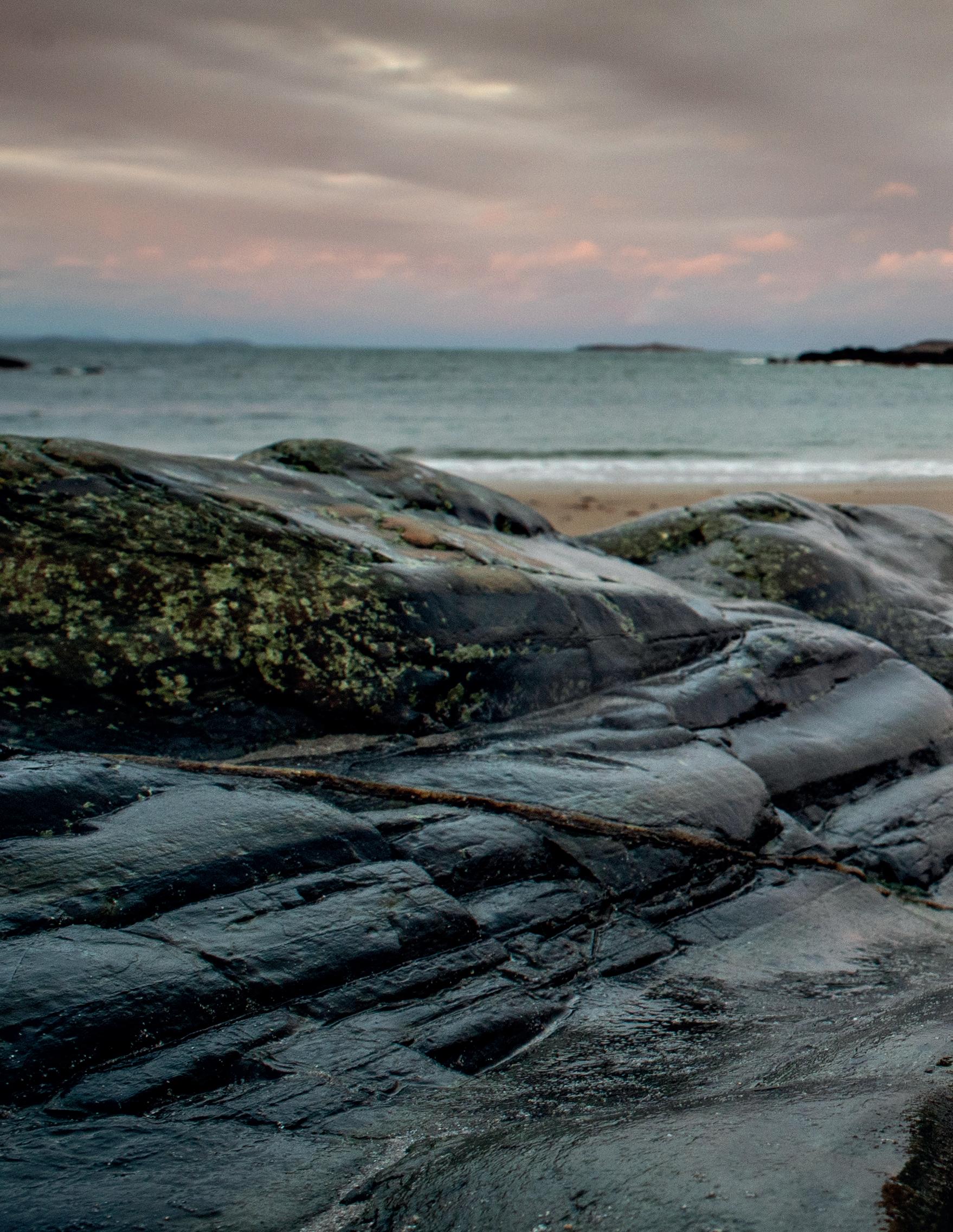
PALATE: Pepper, vanilla, dried fruit, smoke, and salinity, alongside a citrus envelope. After the first appreciation, notes of plum, fig, and cherry dominate, in addition to the peat, in an interesting integration of sweetness with the phenol and iodine, which is omnipresent from the barley drying process.
FINISH: Silky and prolonged, the 46 percent ABV with which this whisky is bottled is appreciated, as it provides the precise complexity between the spirit’s personality and the alcohol’s intensity. A spicy background shines through, with very subtle notes of clove and cinnamon, alongside black pepper integrated with the perception of peat.
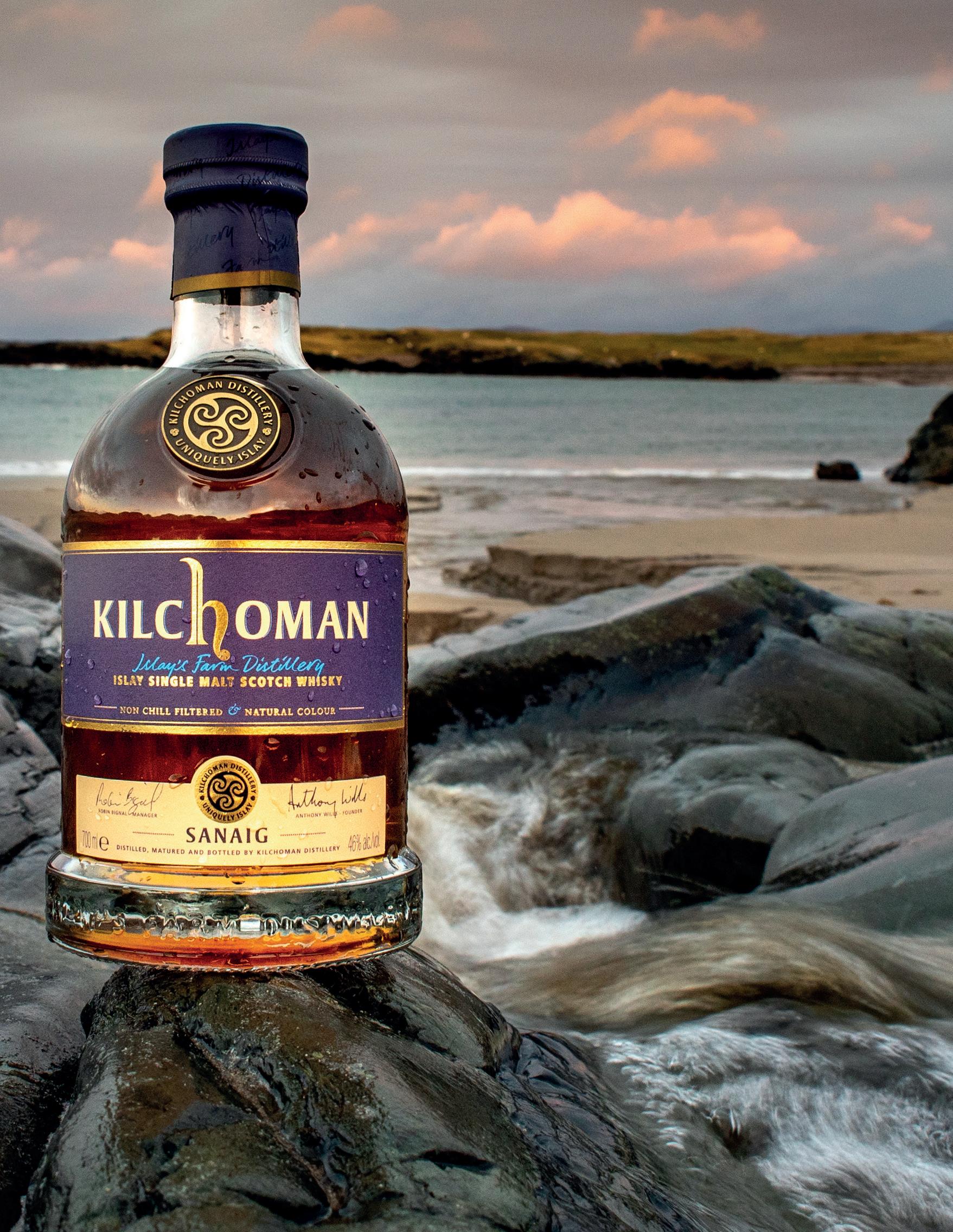
COMMENTS: Founded in 2005, the distillery launched its first NAS expressions in 2009, and in 2016, after an initial exclusive promotion for the French market (of course, mes amis), Sanaig began its global distribution. This label, like the rest of the distillery’s core range, does not use the chill filtration method or add coloring.
Kilchoman sources its malt mainly from Port Ellen, which it supplements with a certain percentage of its own production. The label is named after a small inlet on the west coast of Islay, and its distinctive profile was created by John Maclellan, and is approved and overseen to this day by Anthony Wills, the distillery’s founder, along with his wife.
